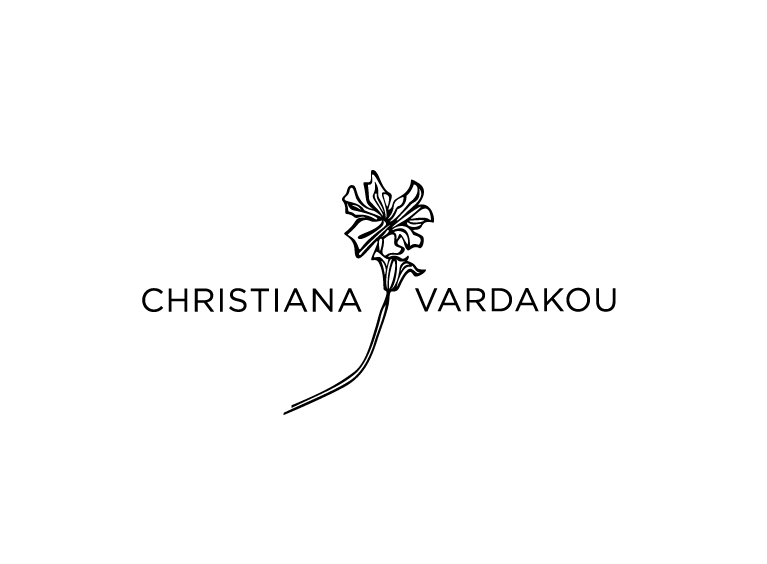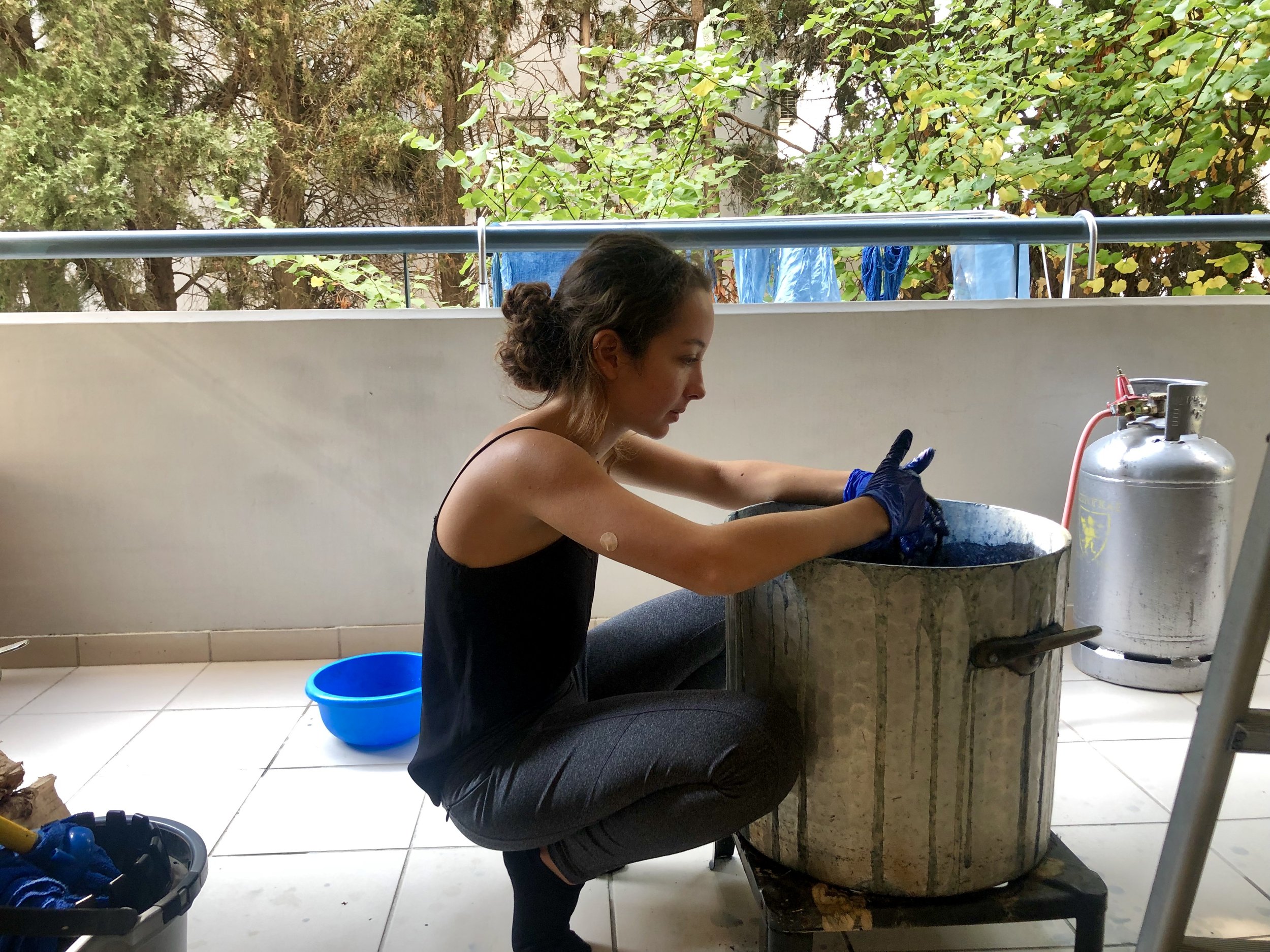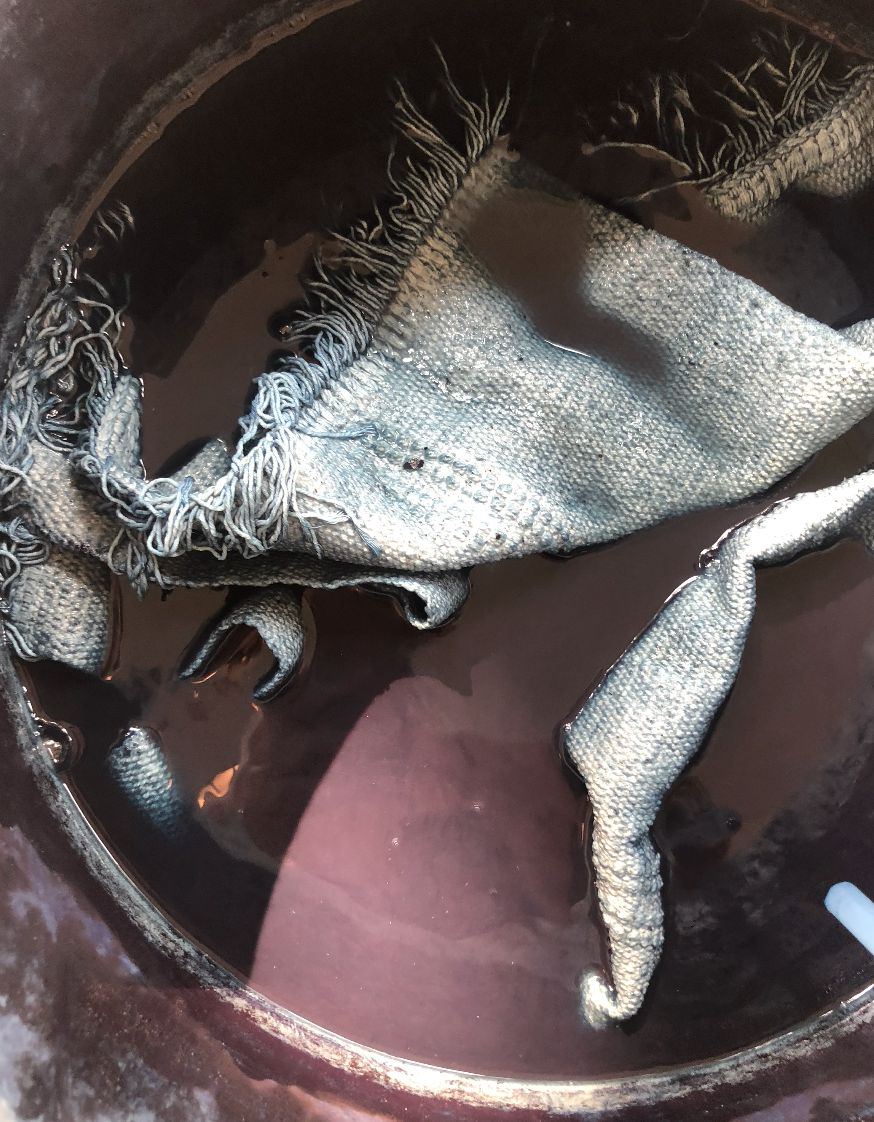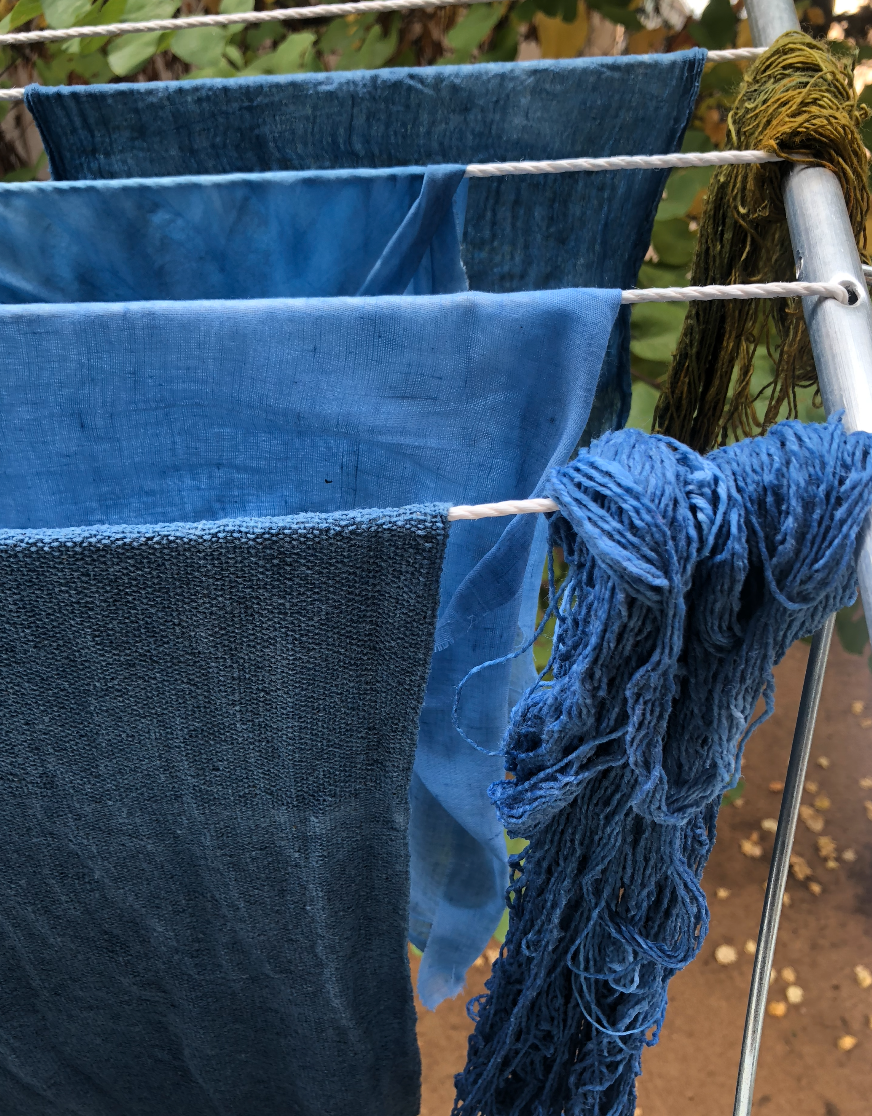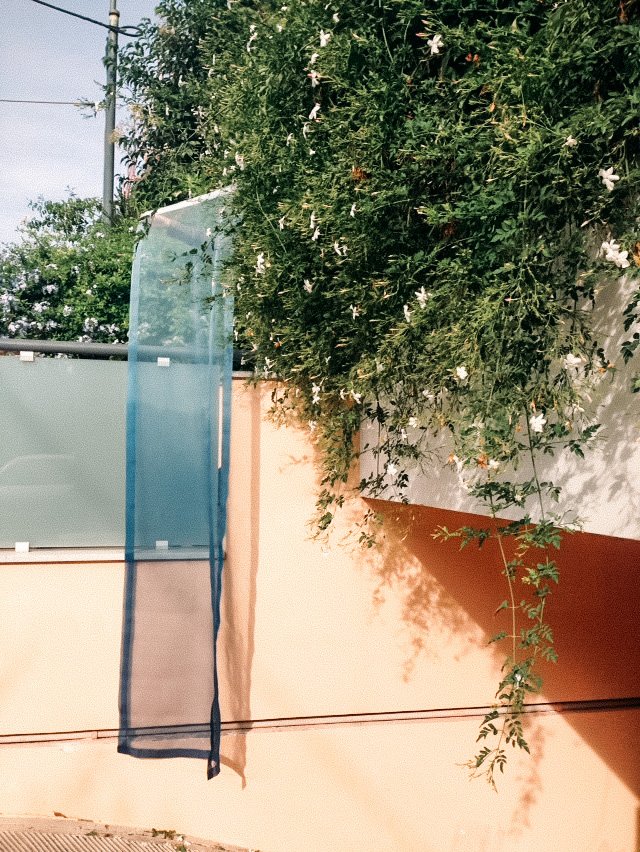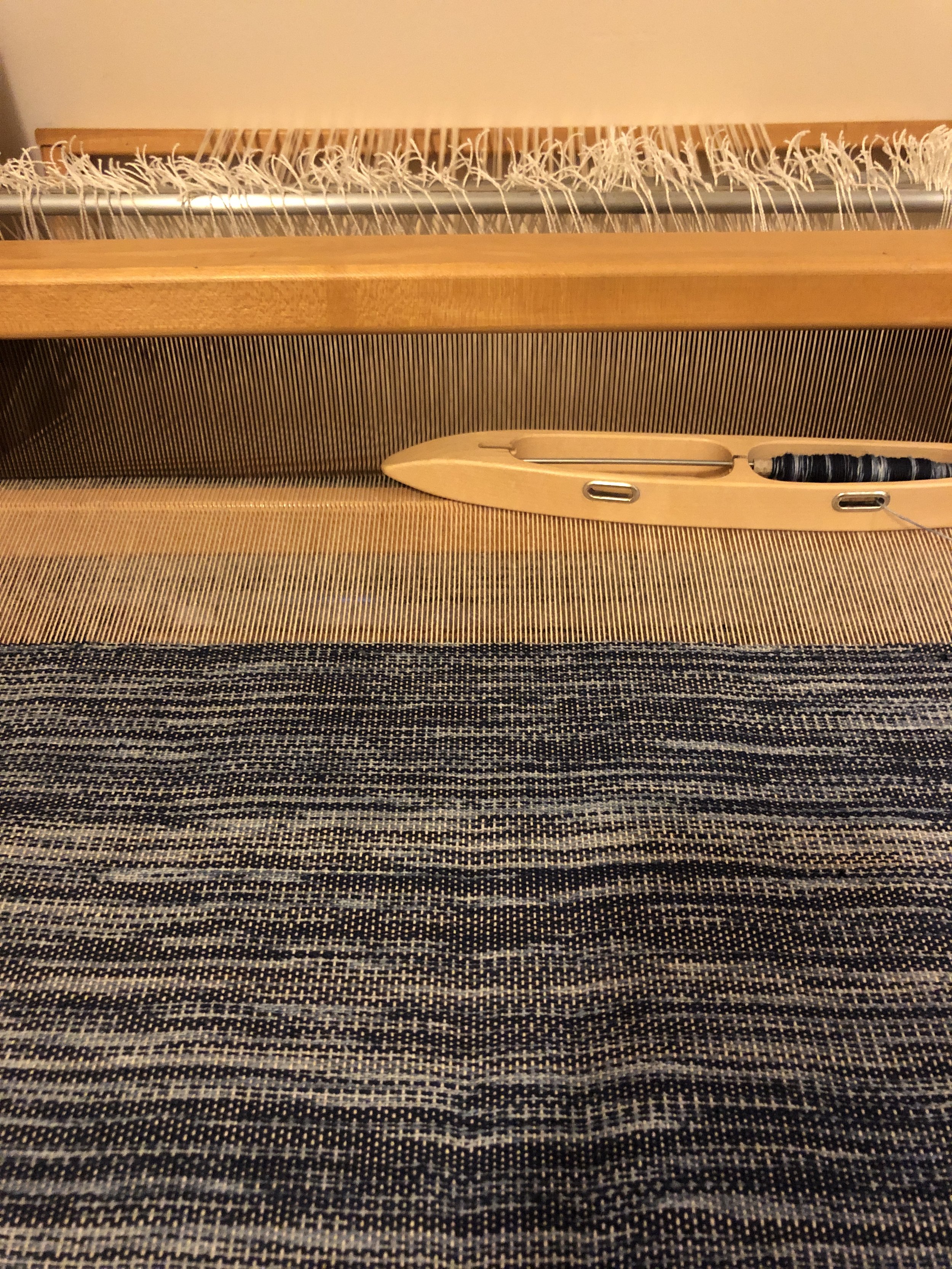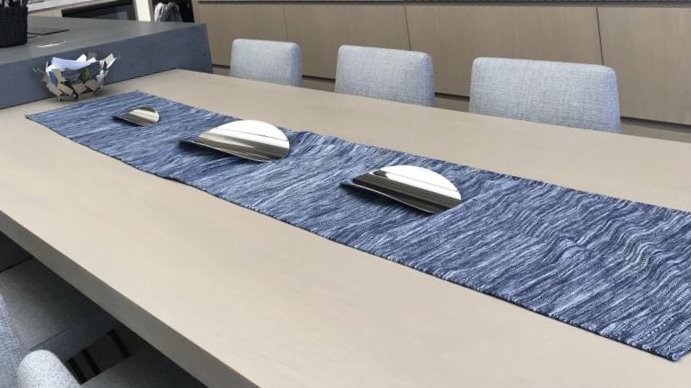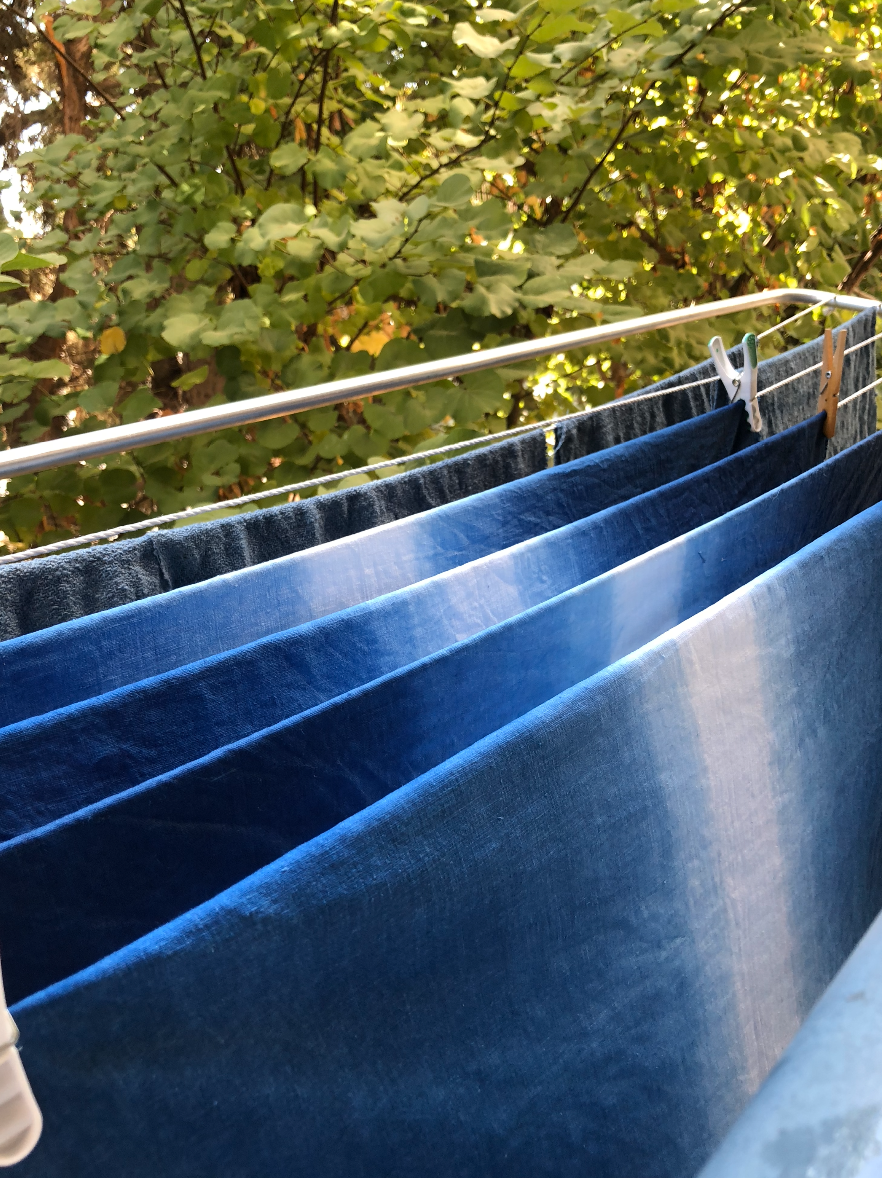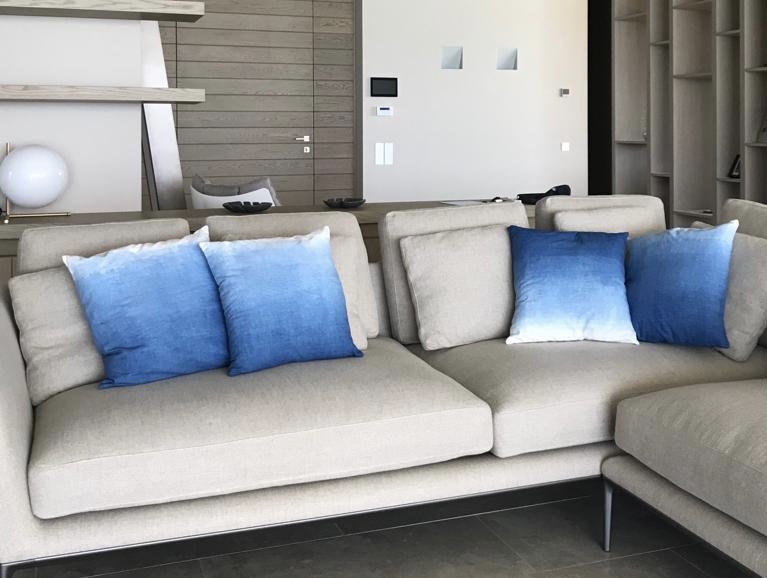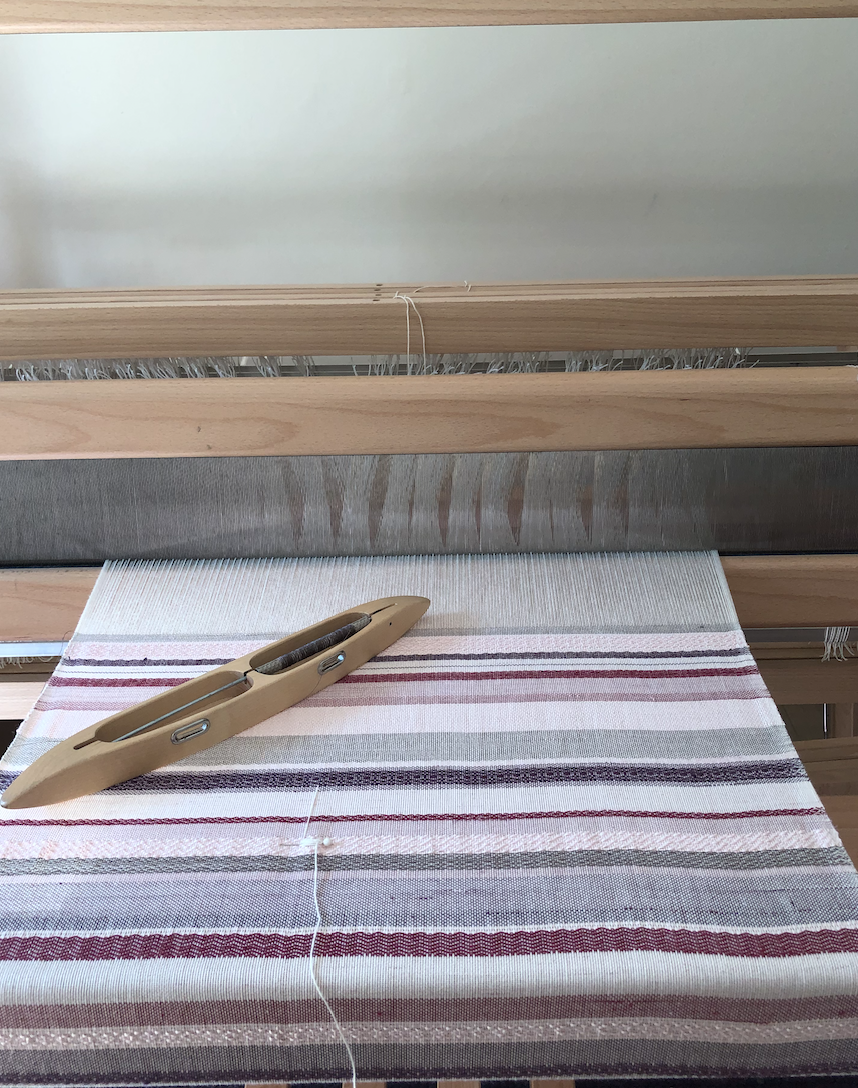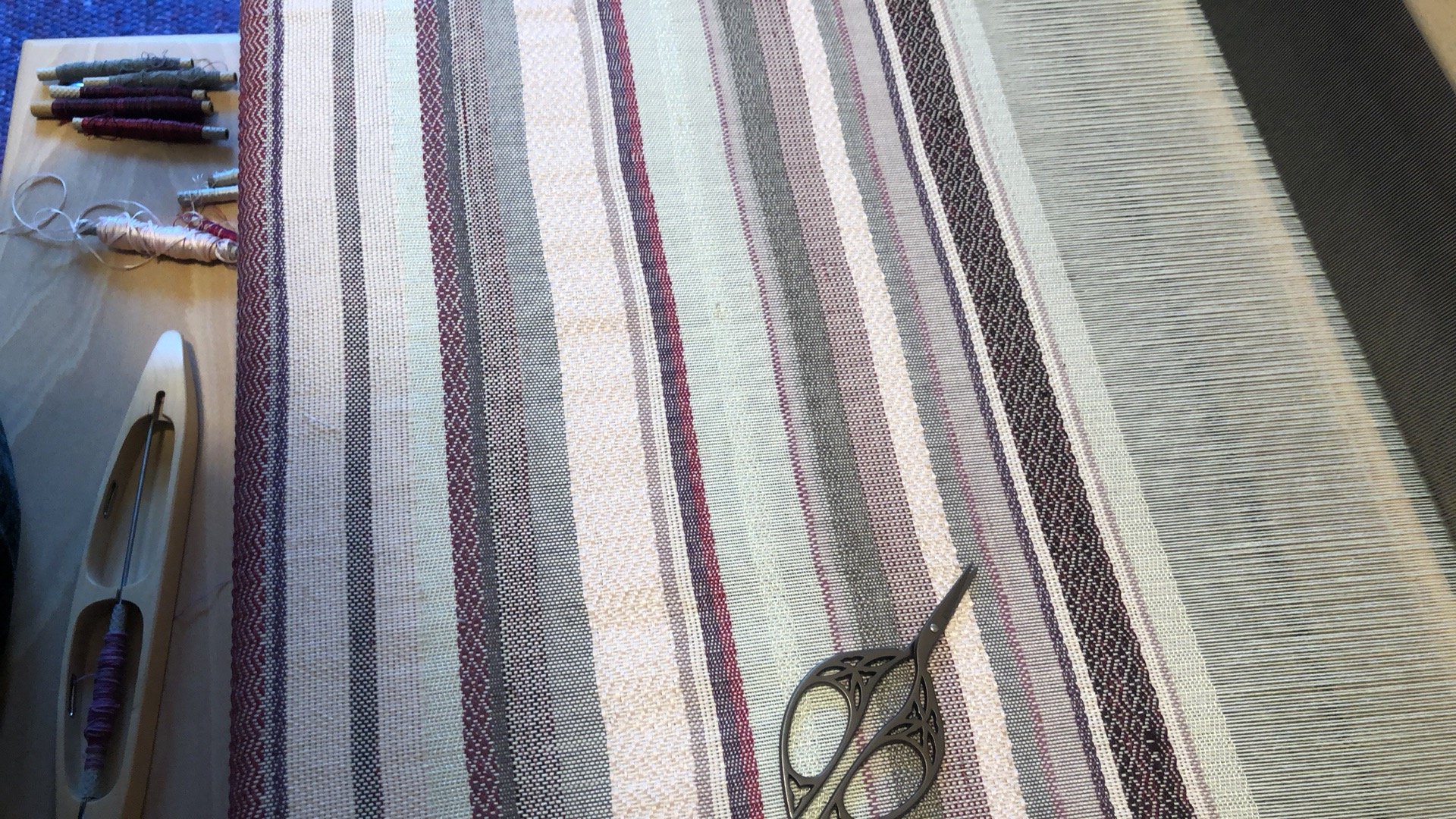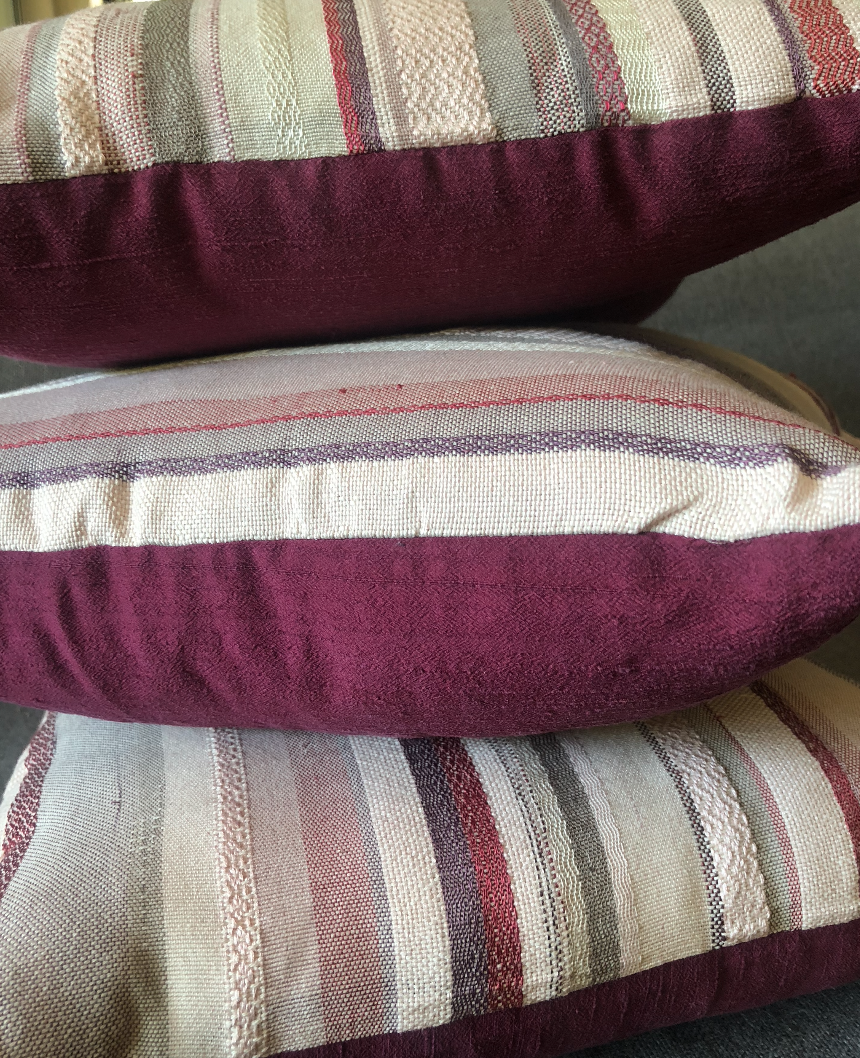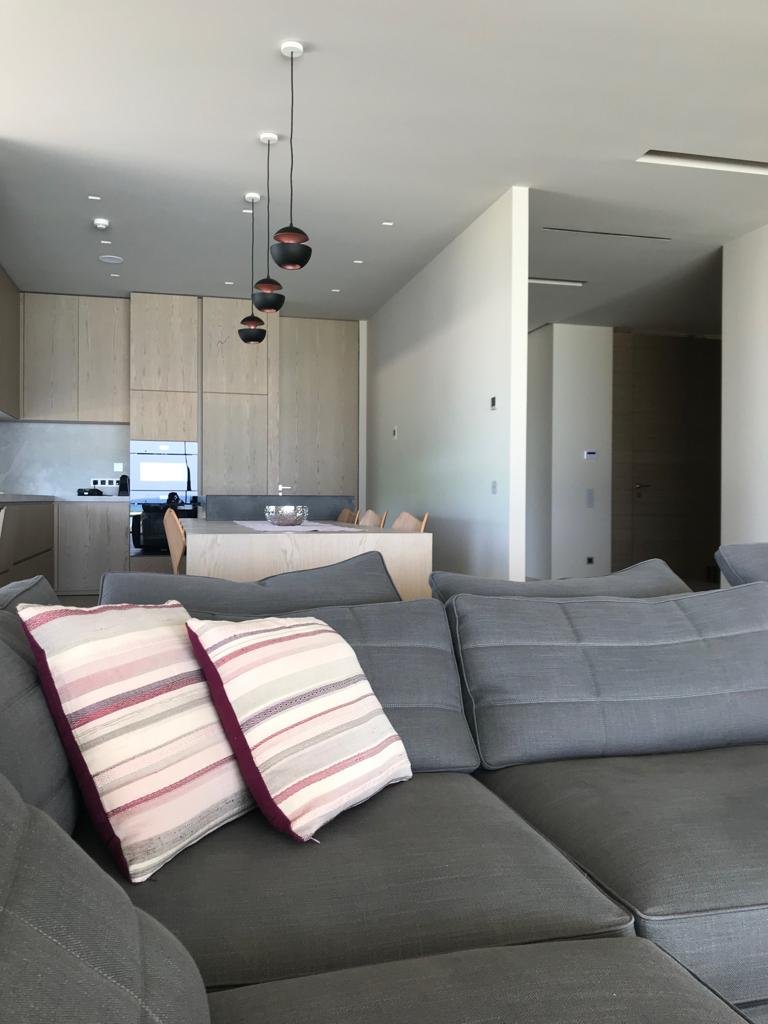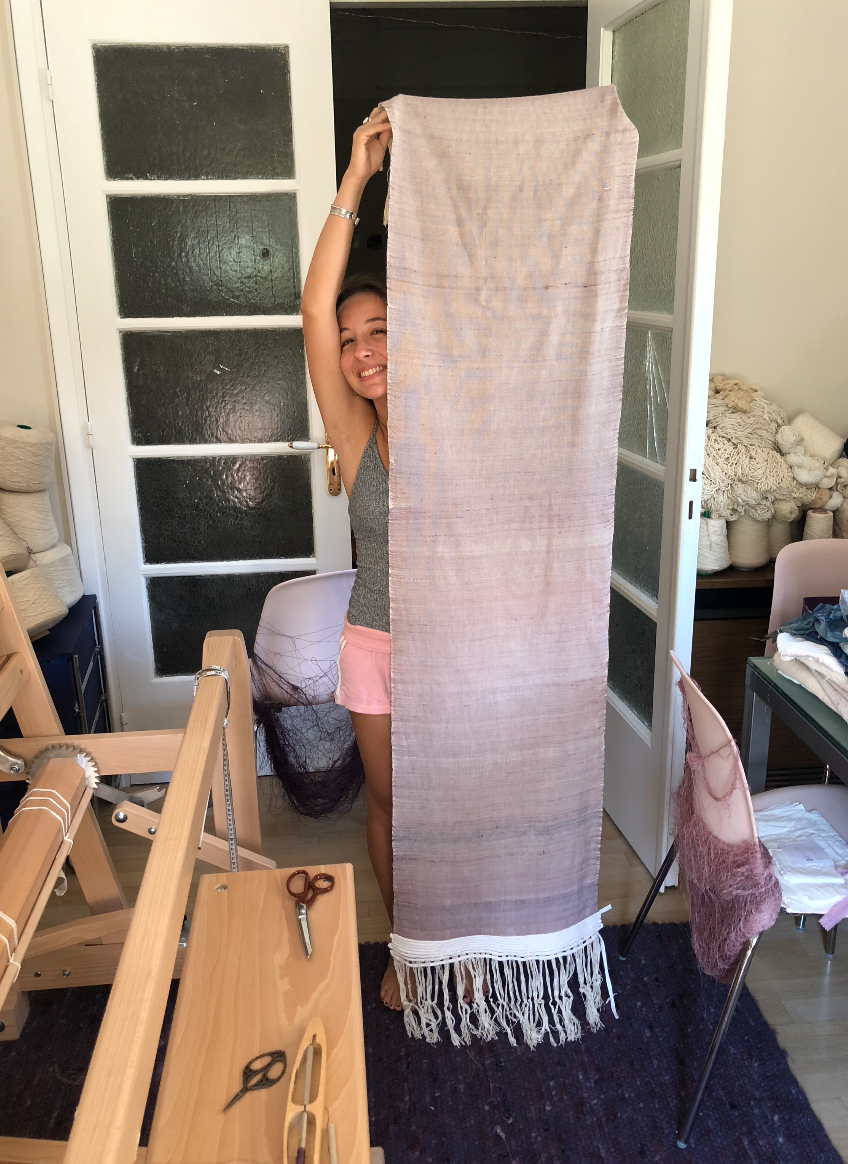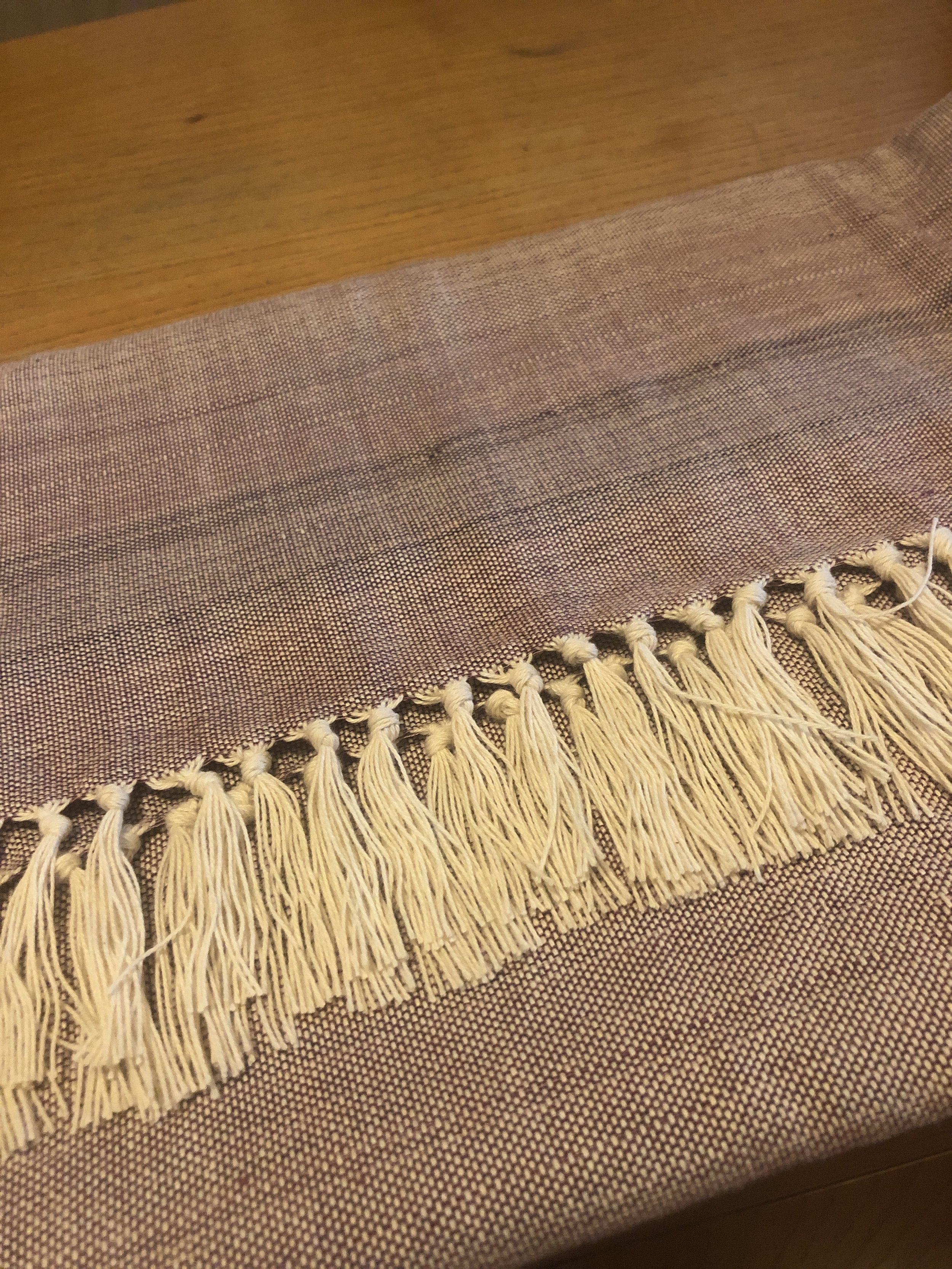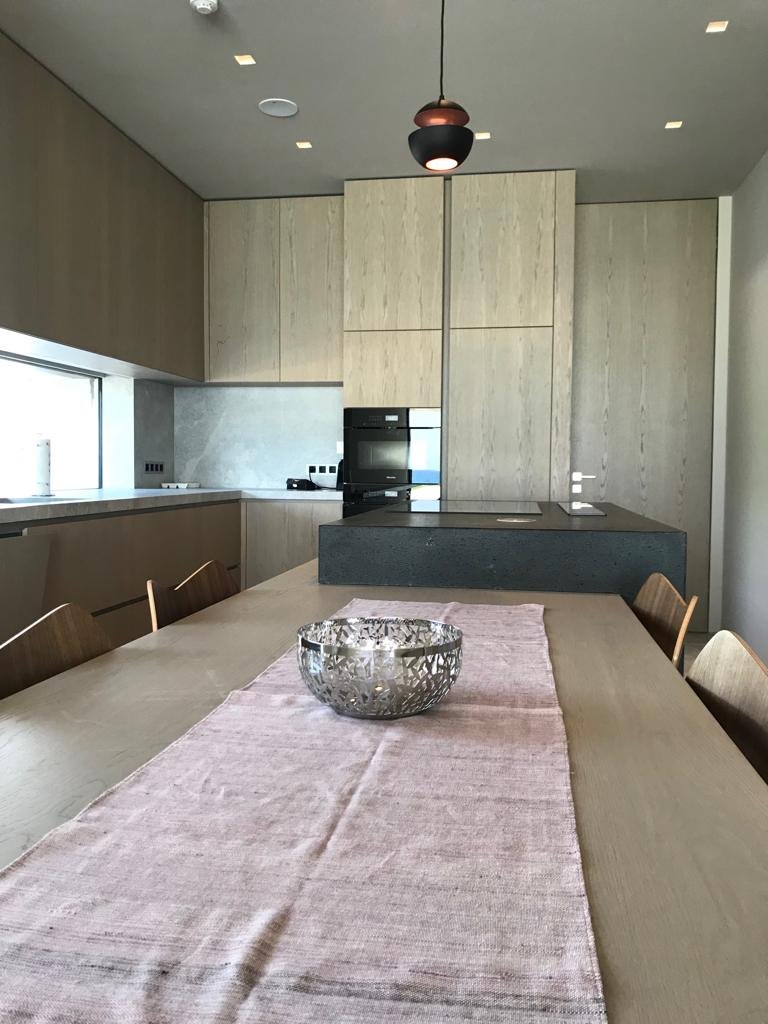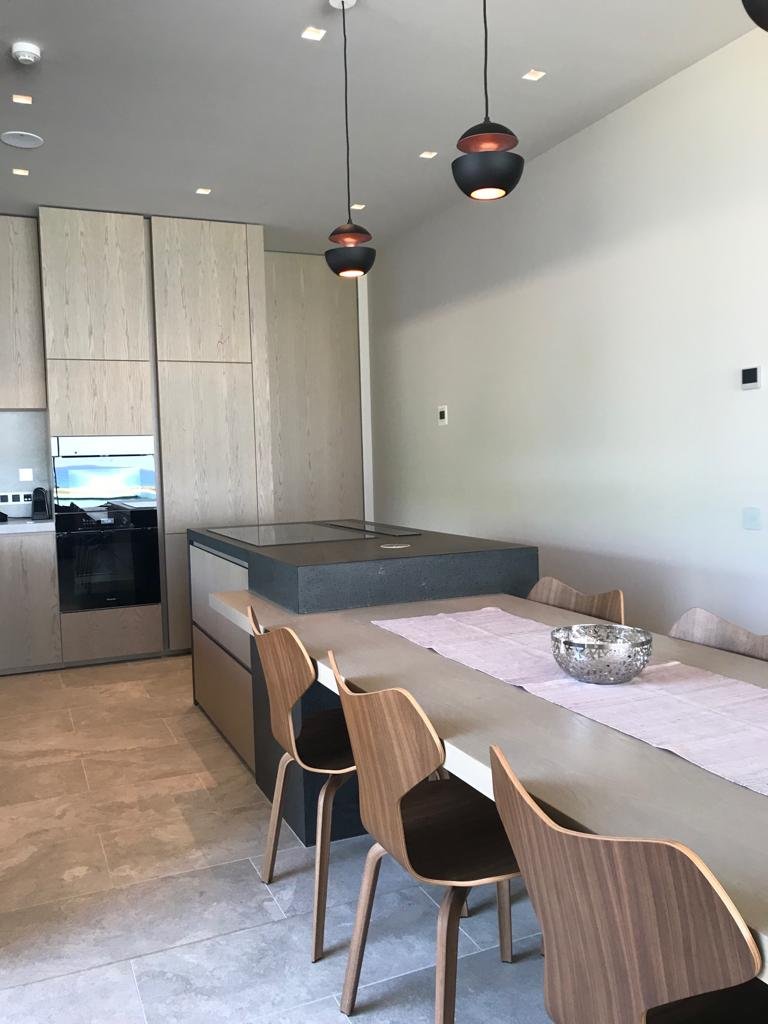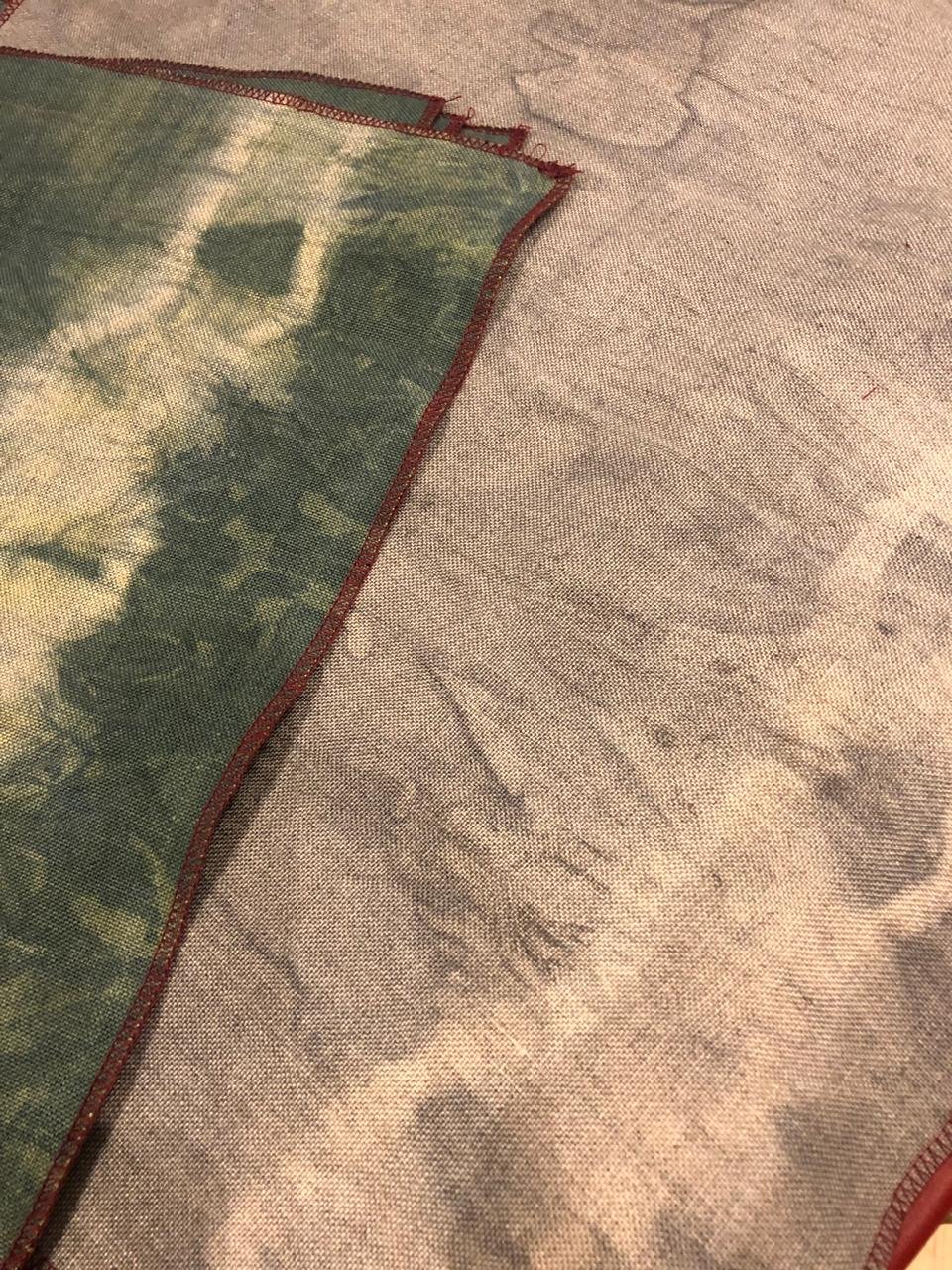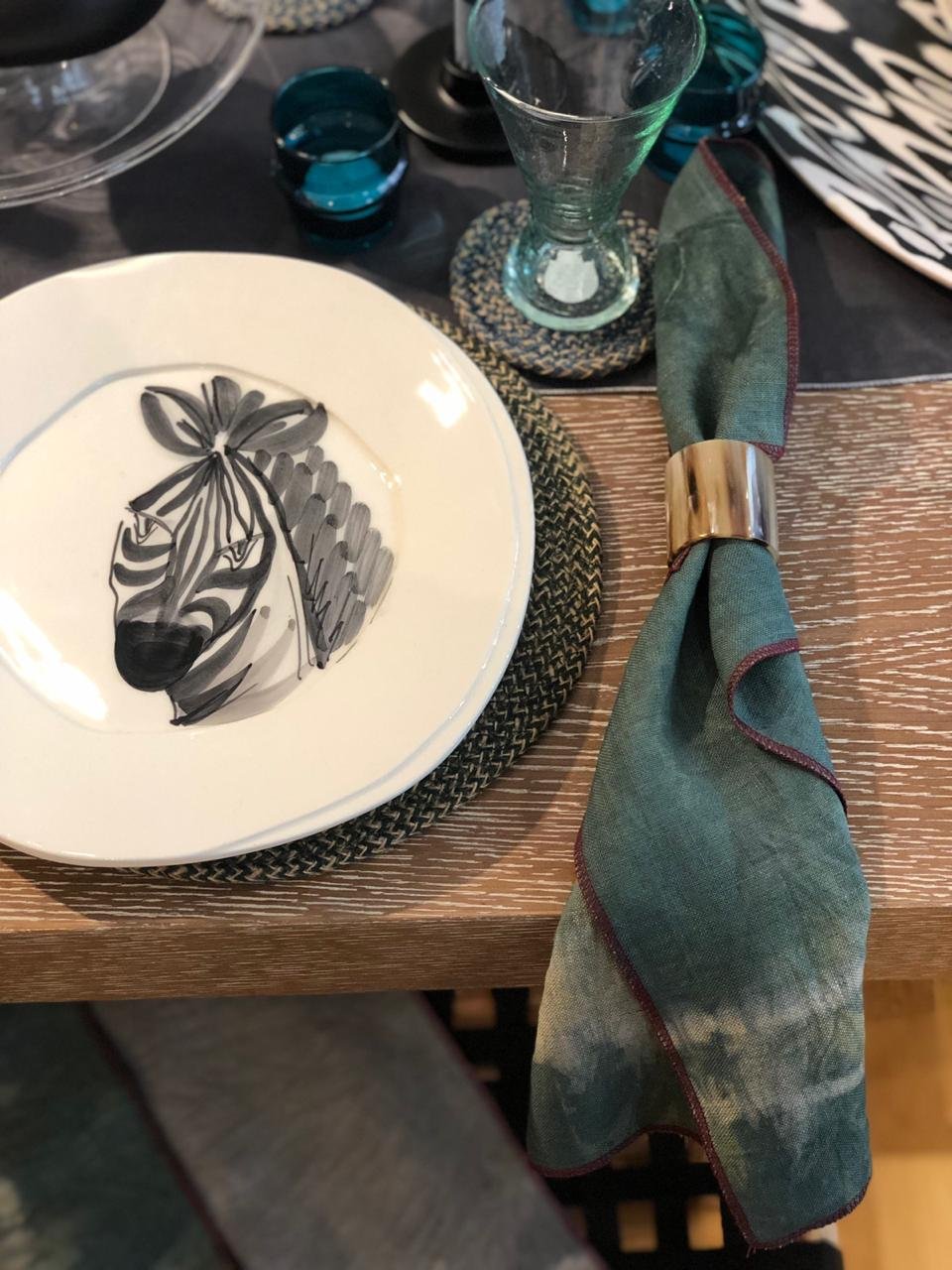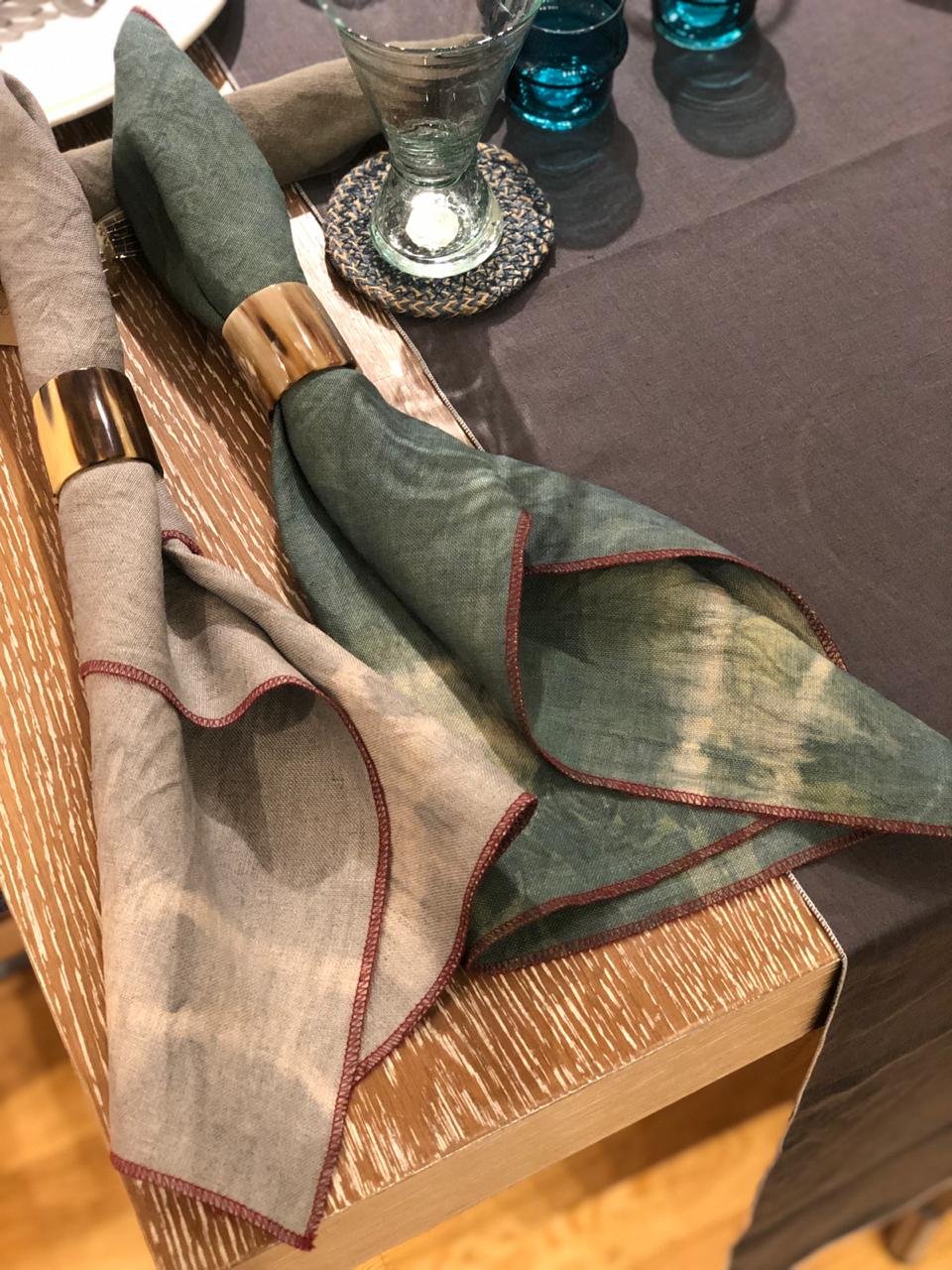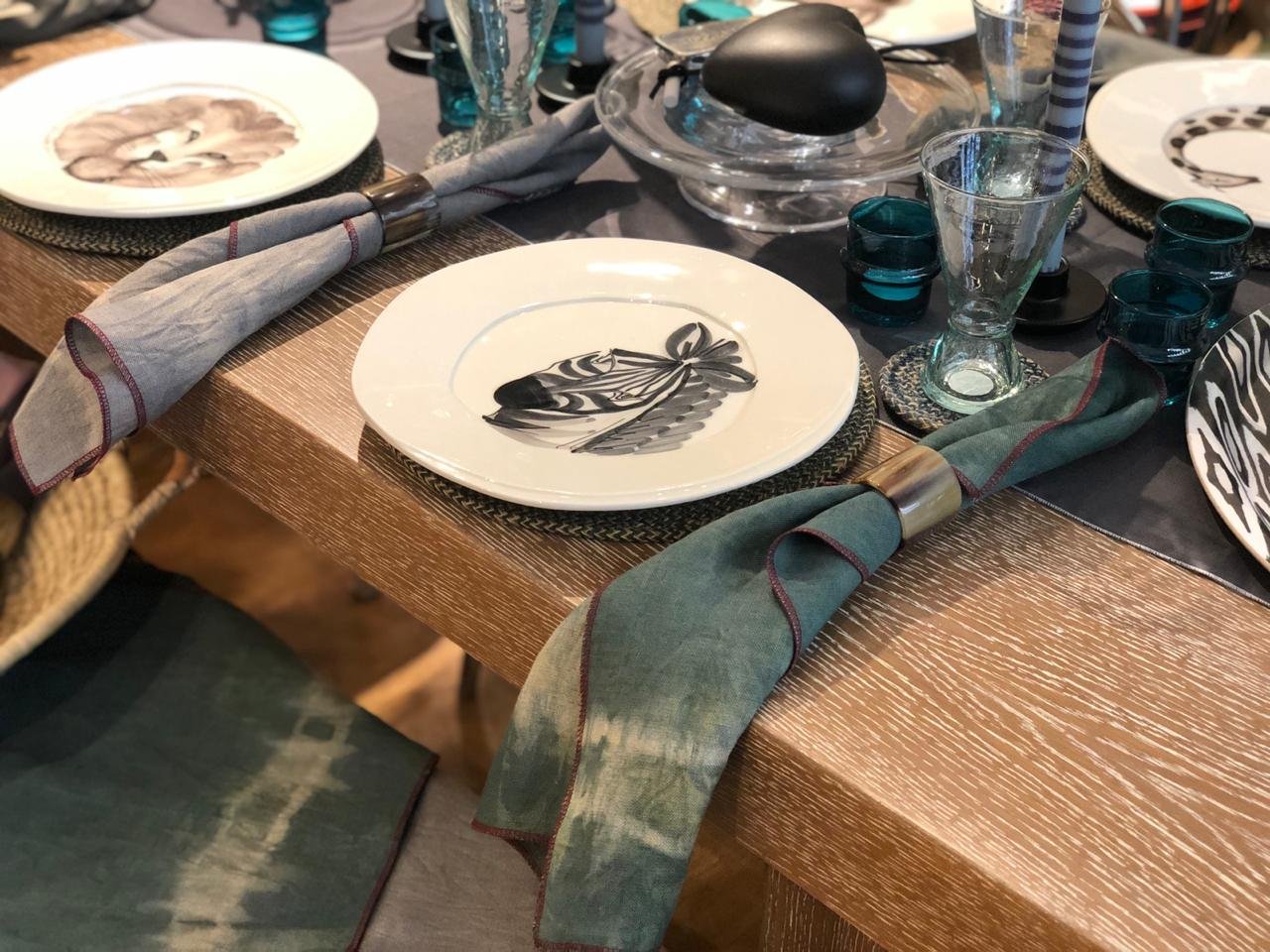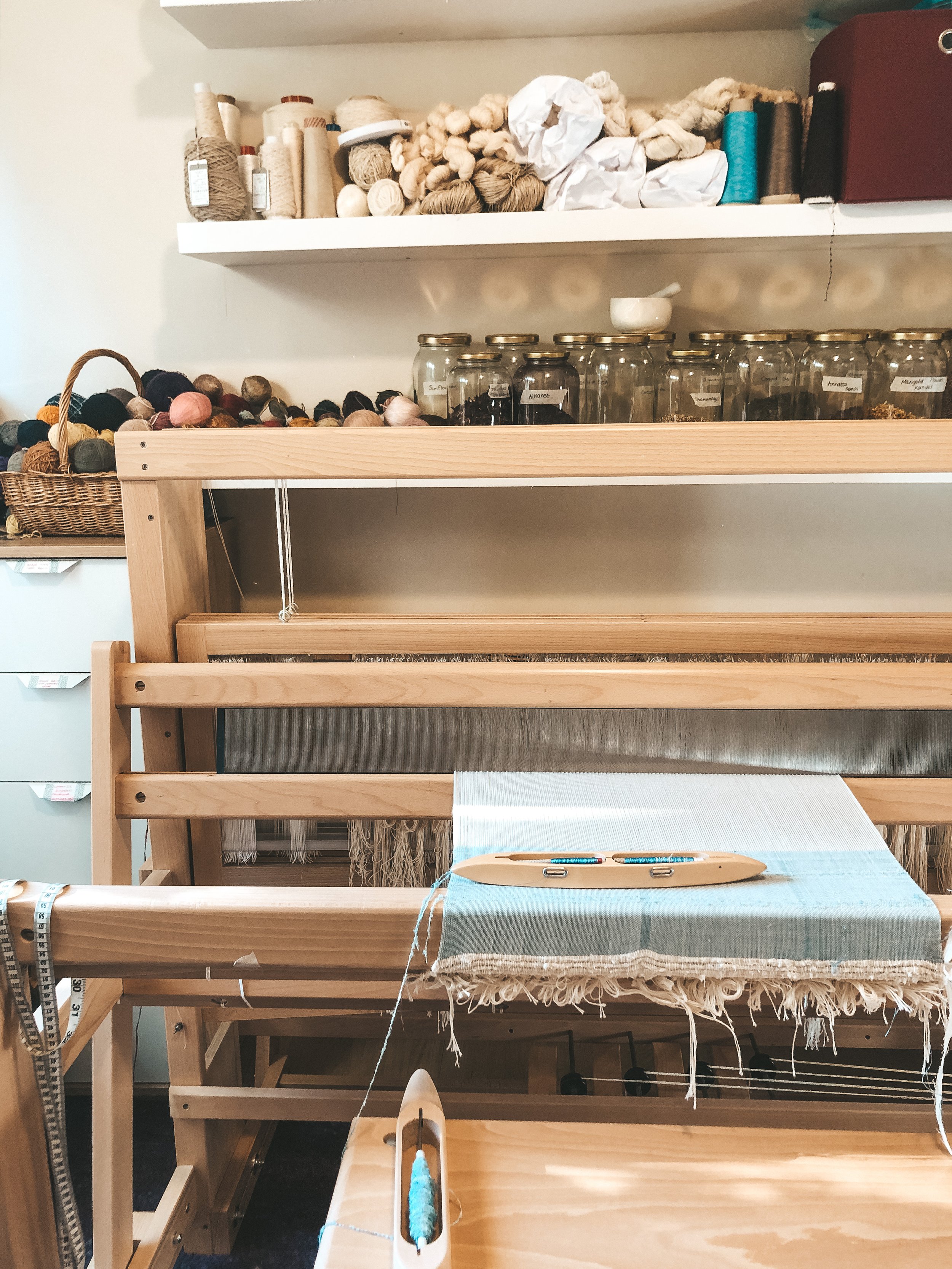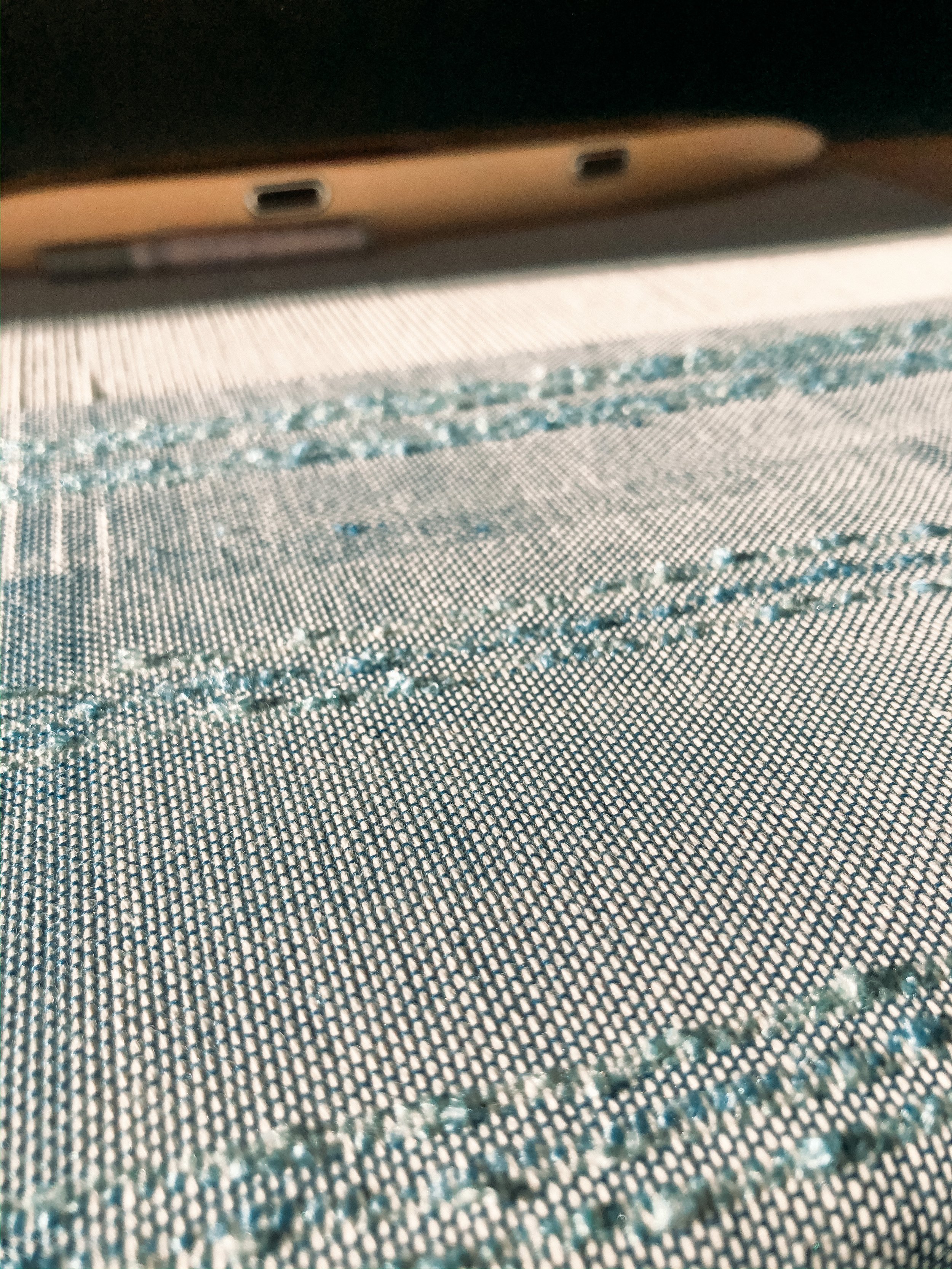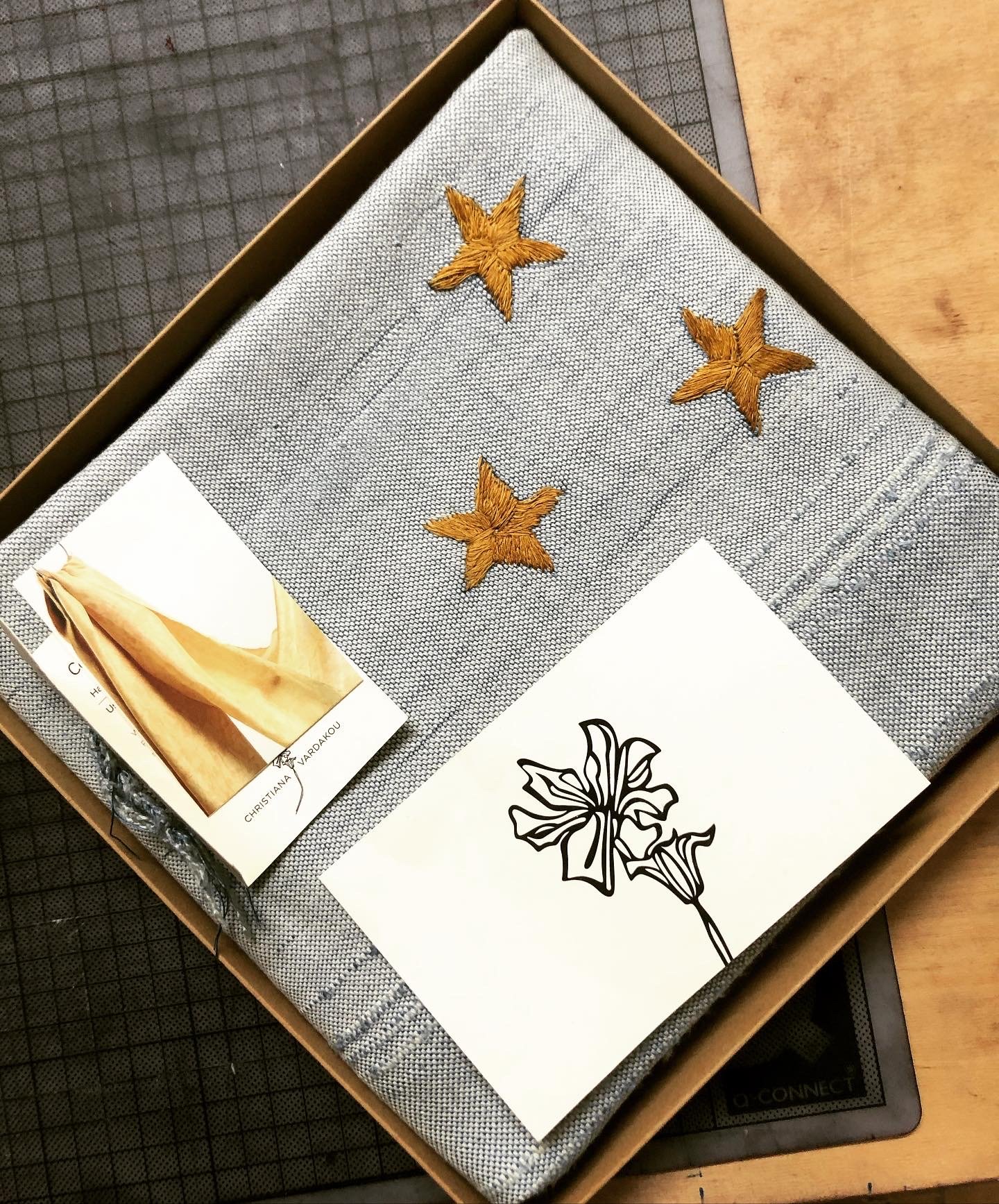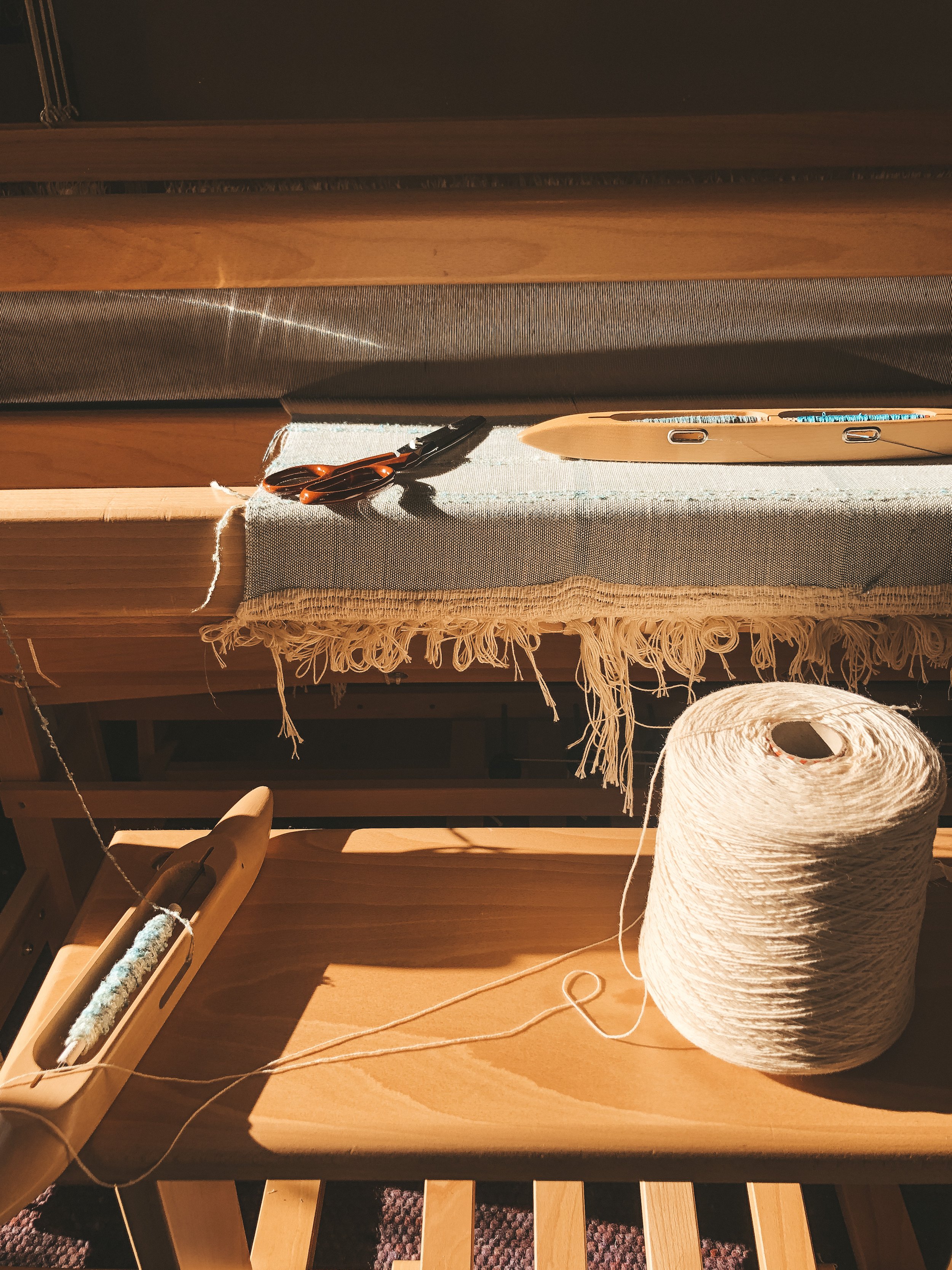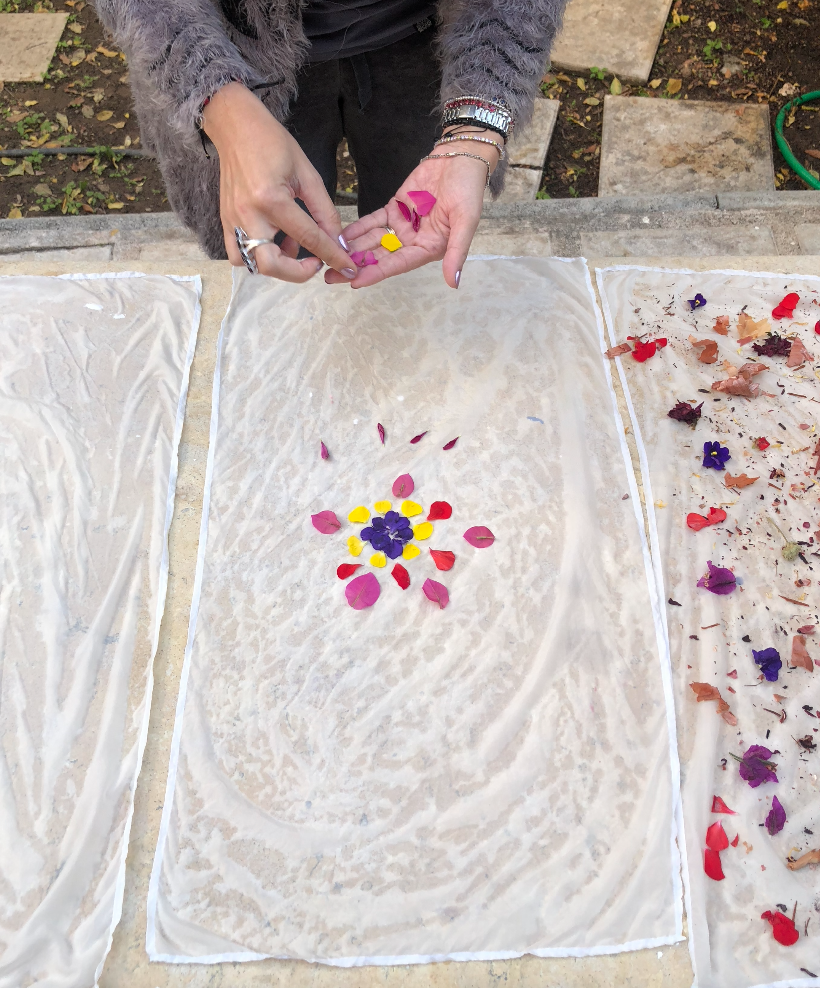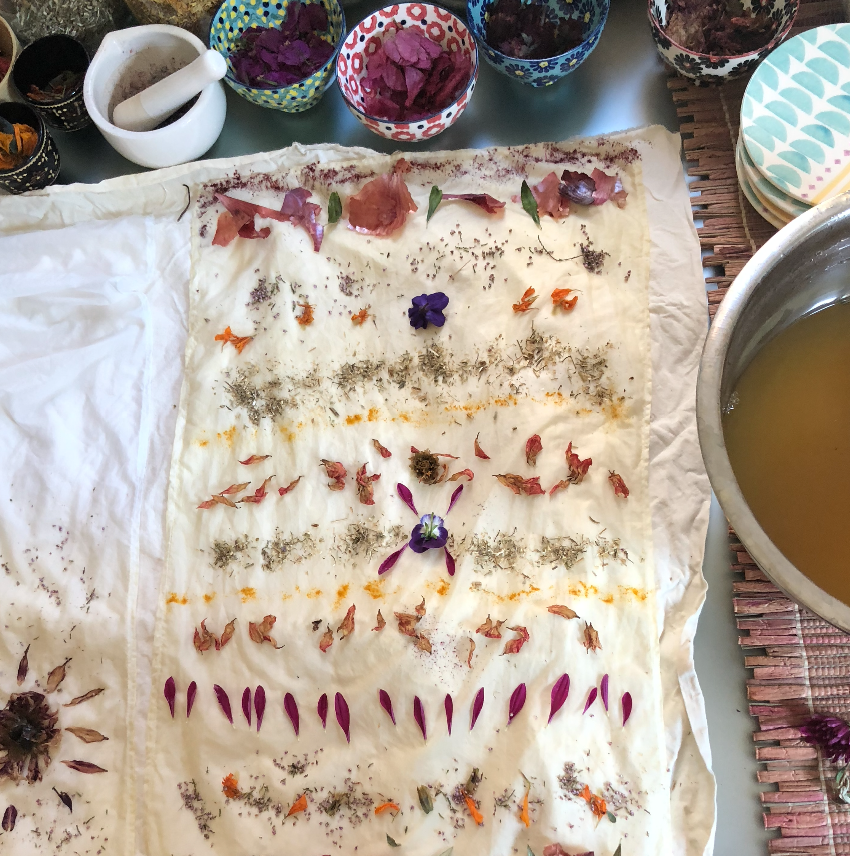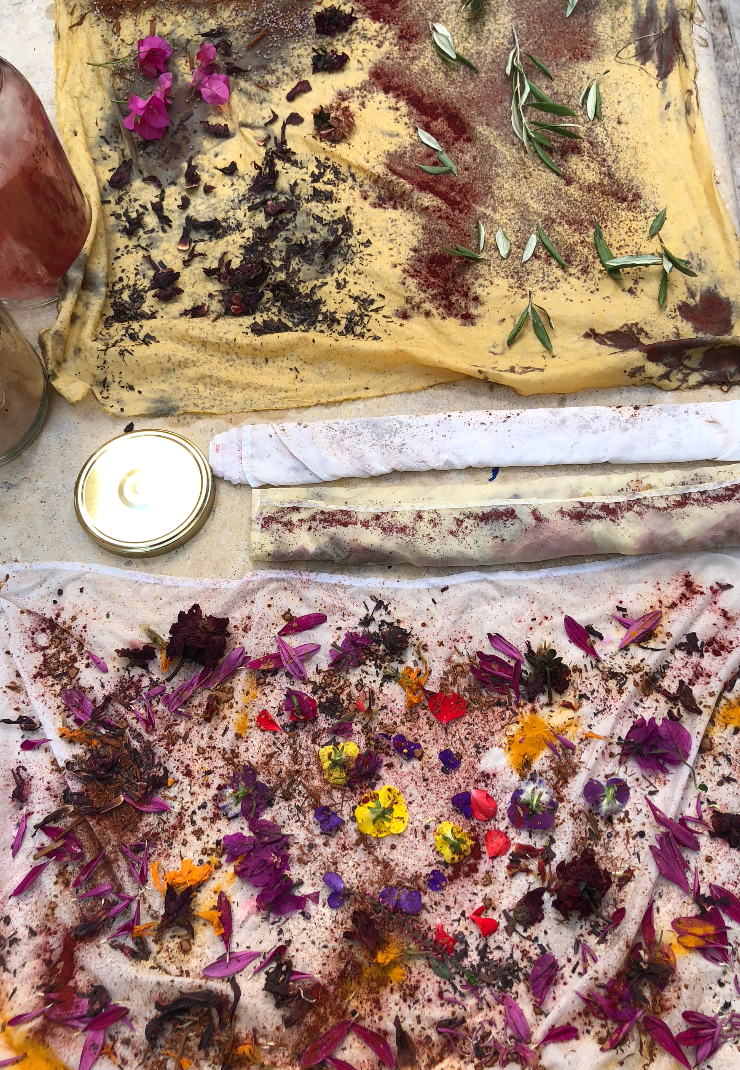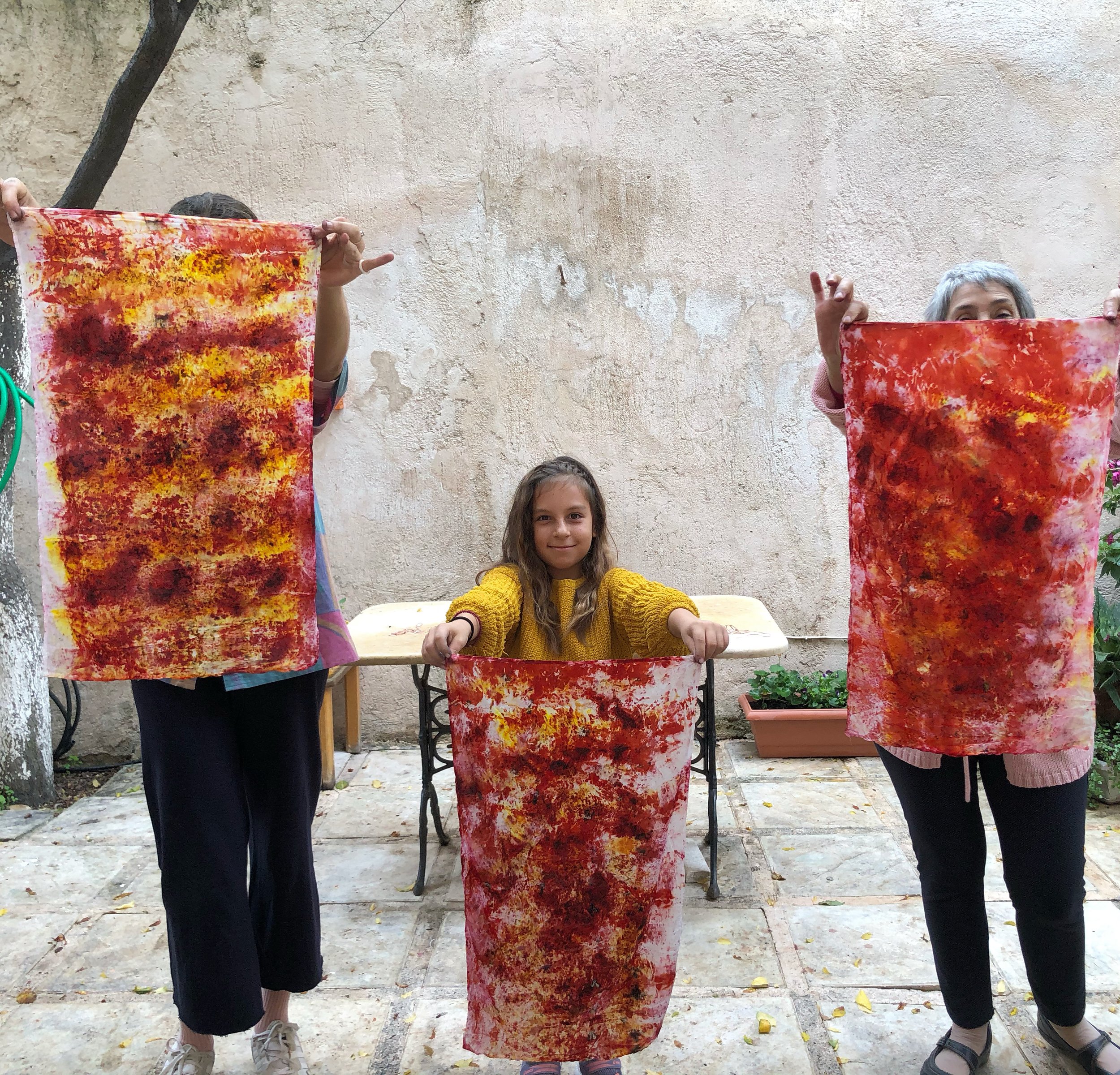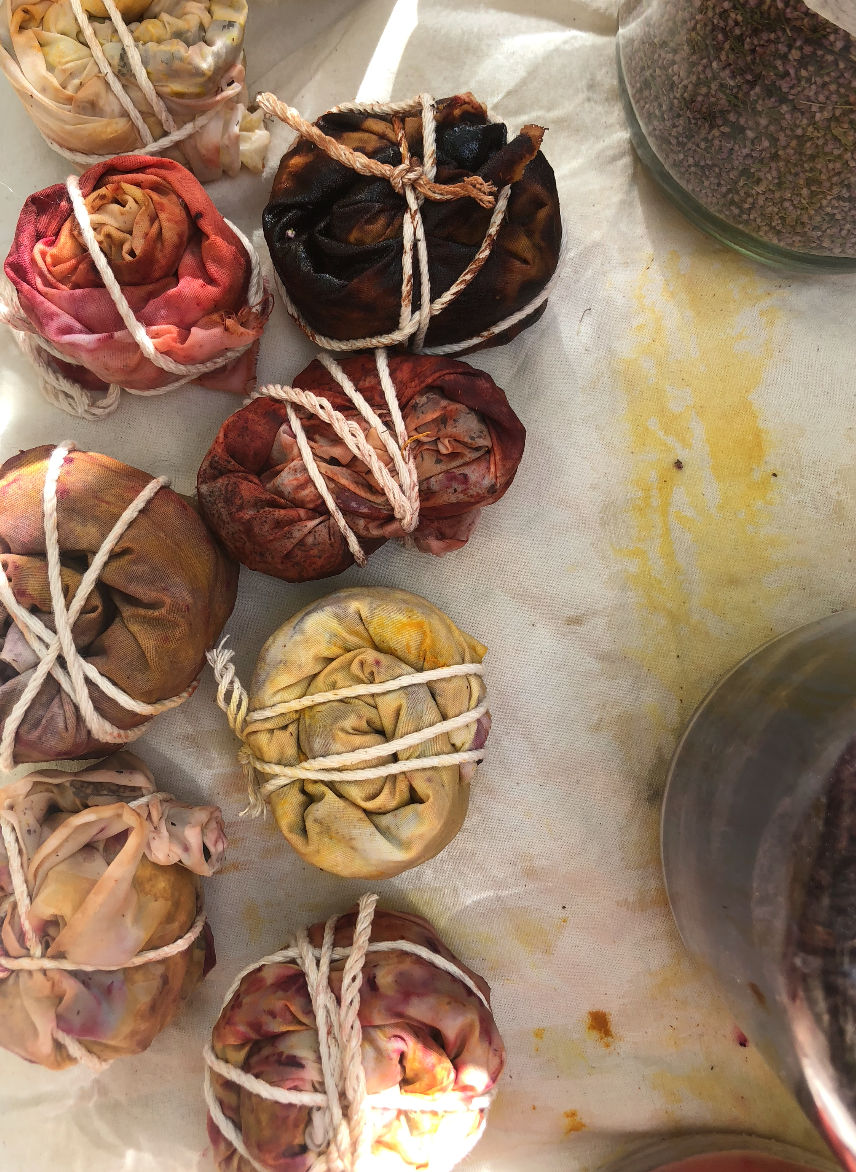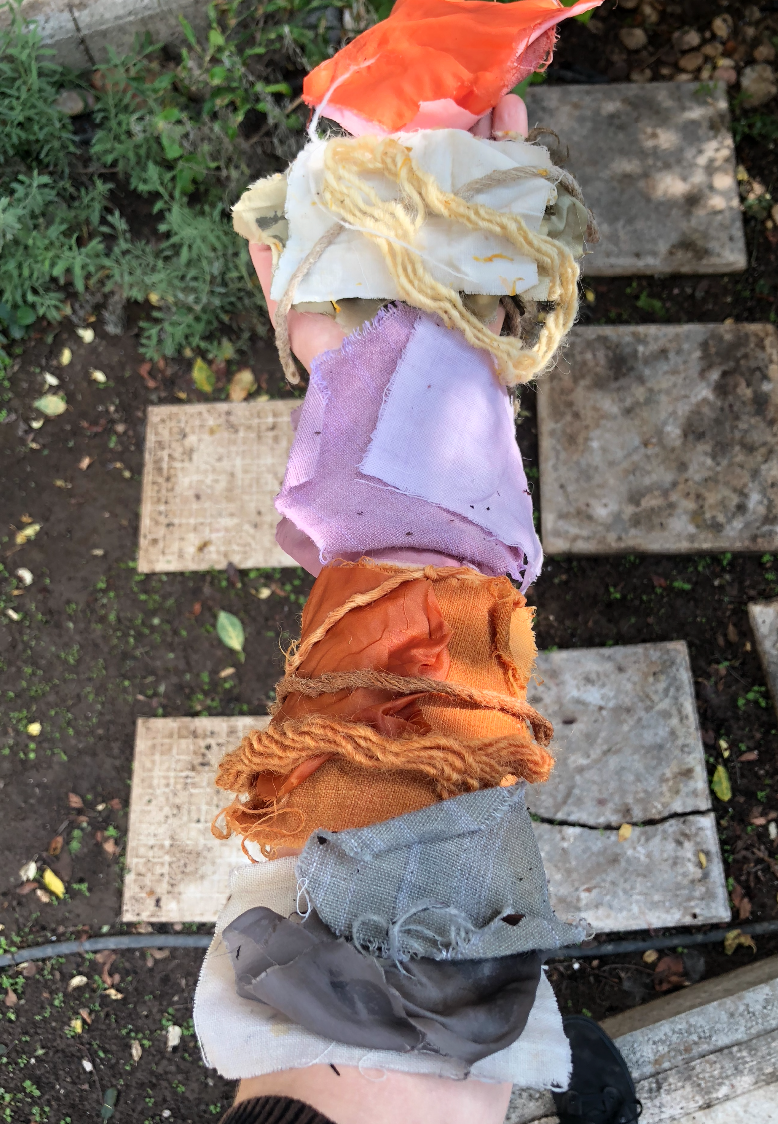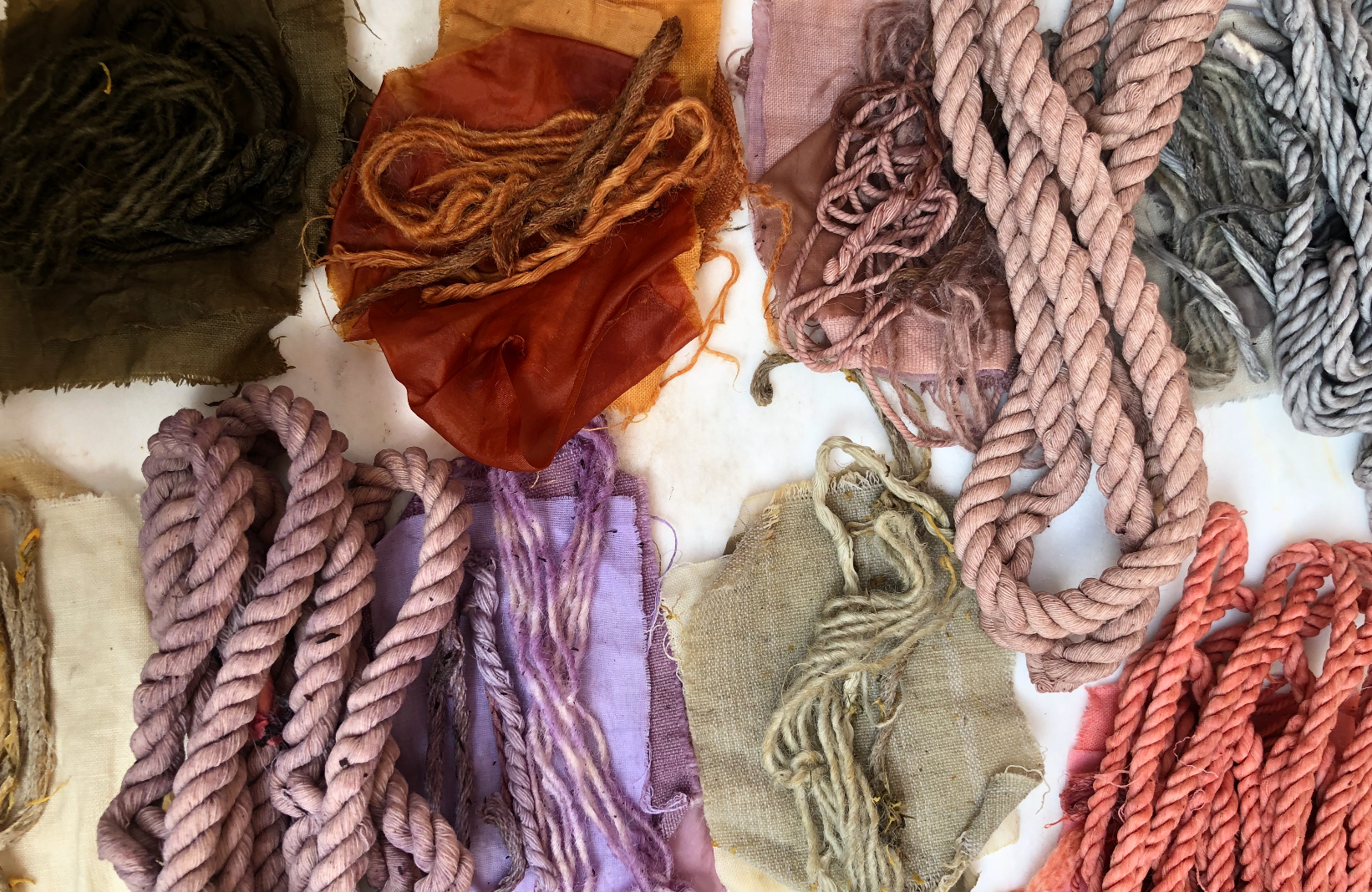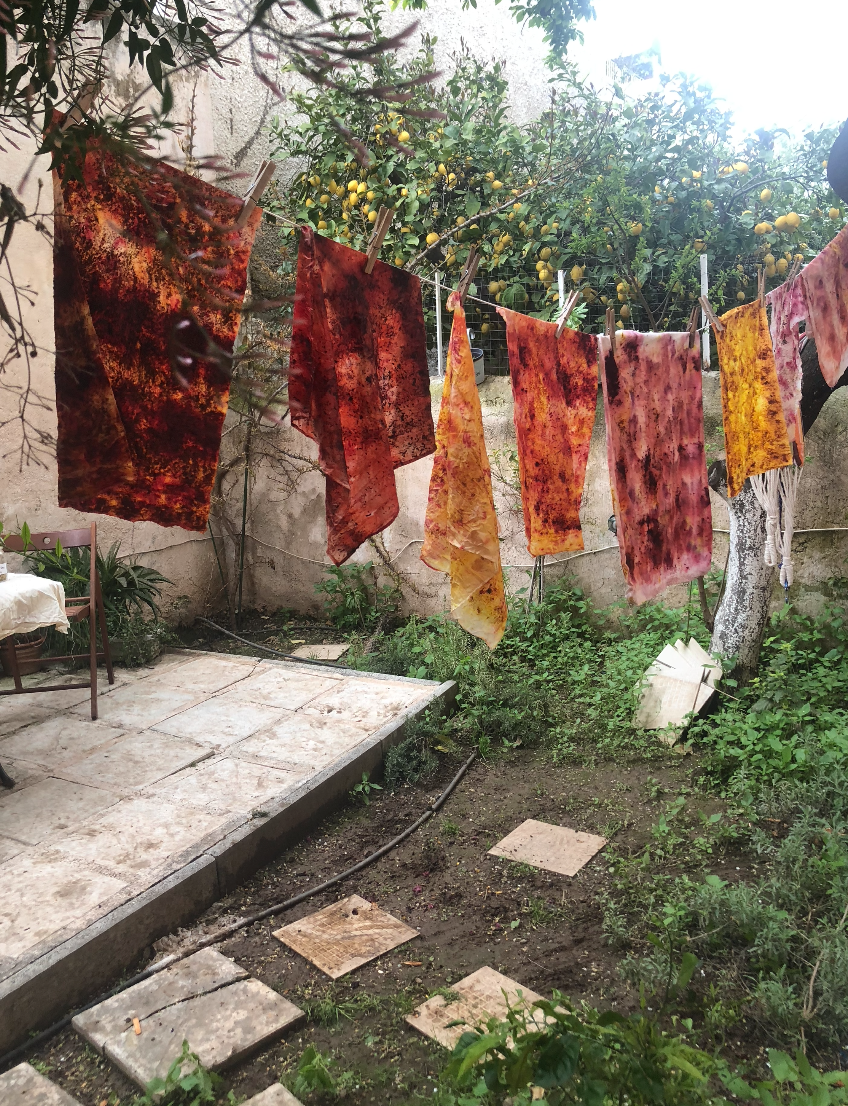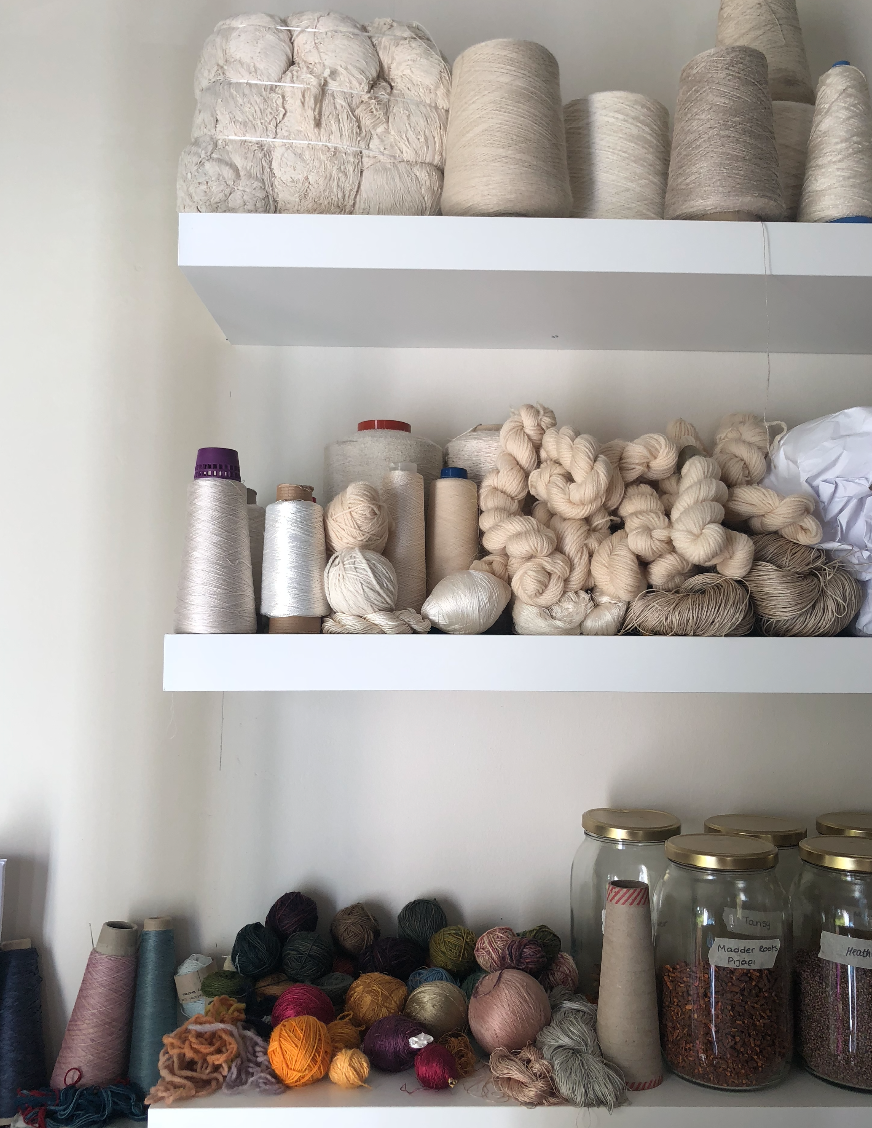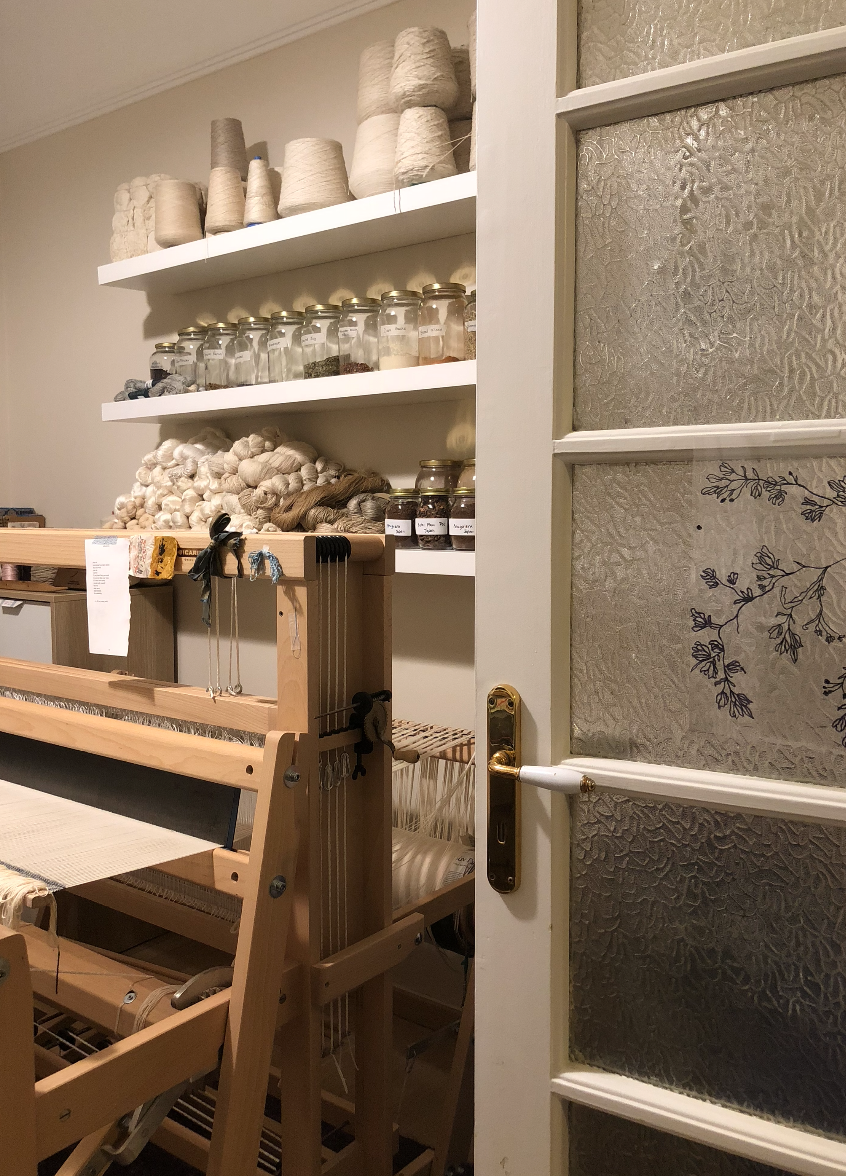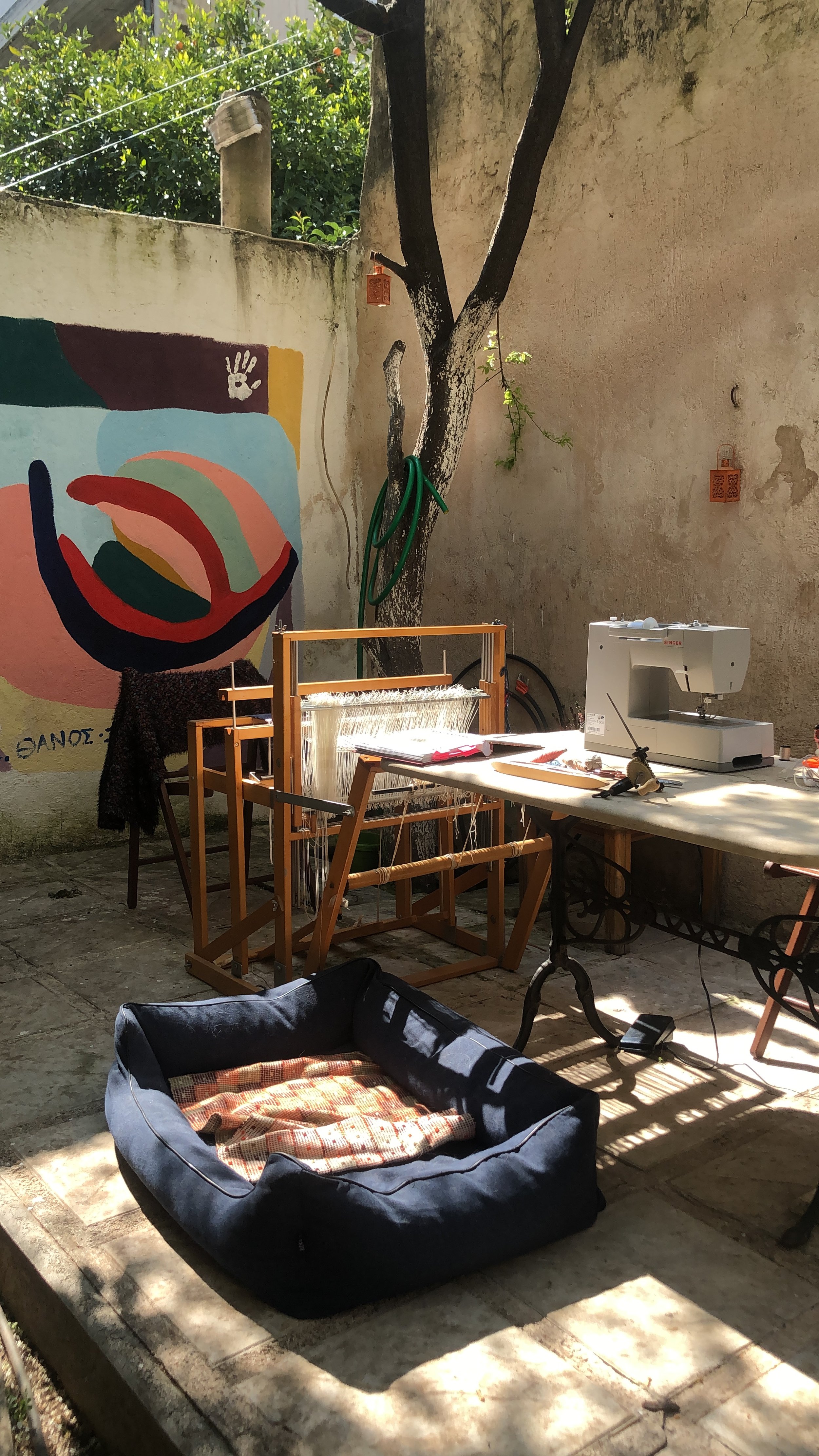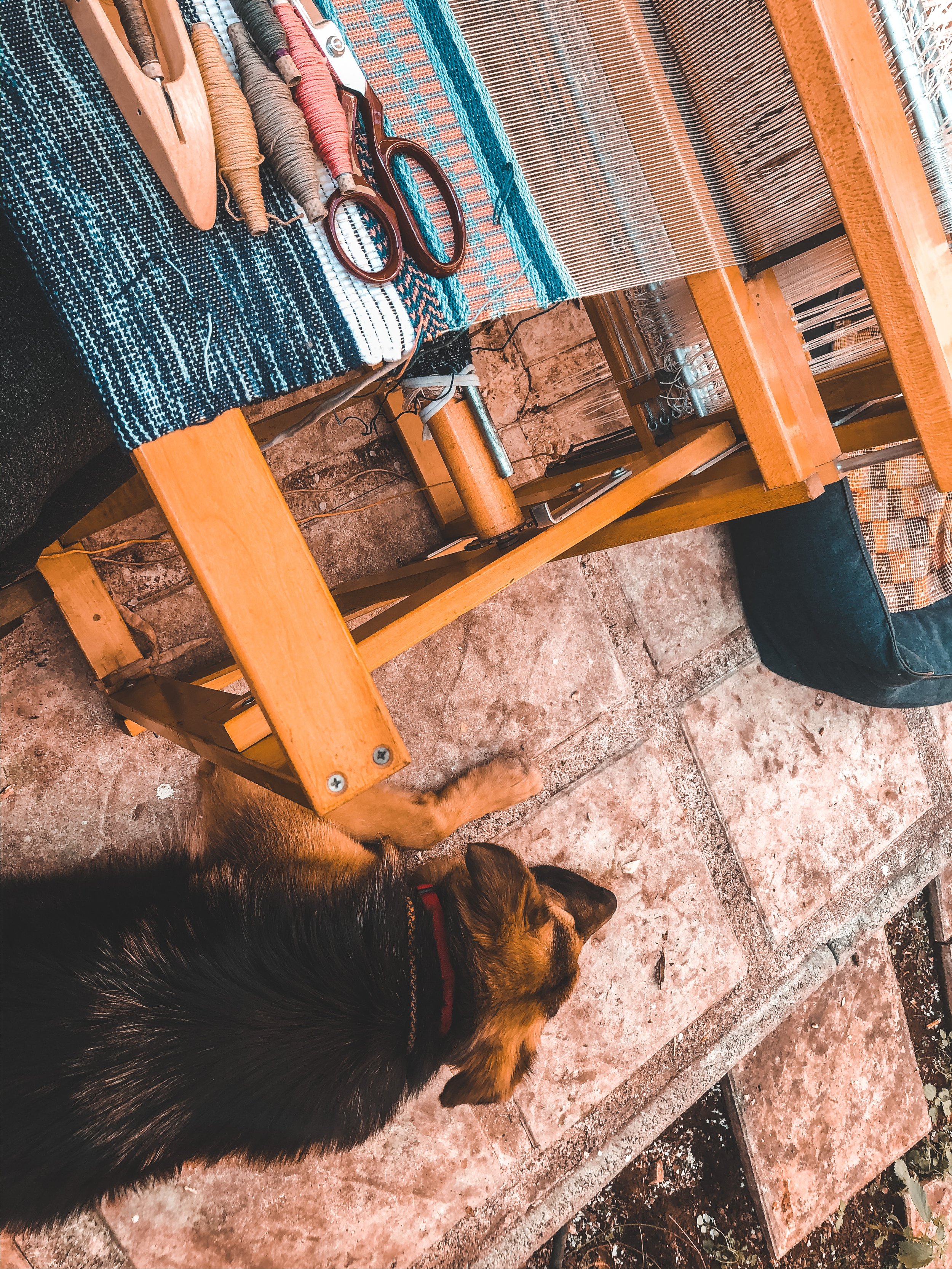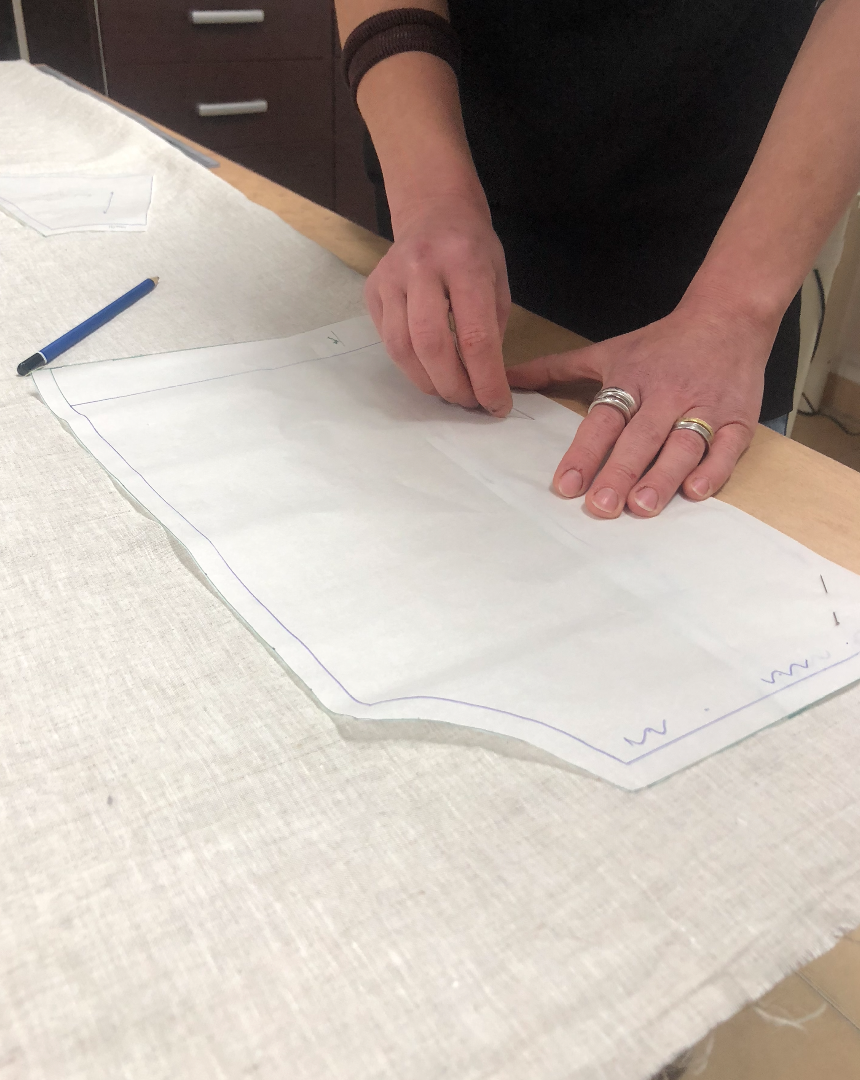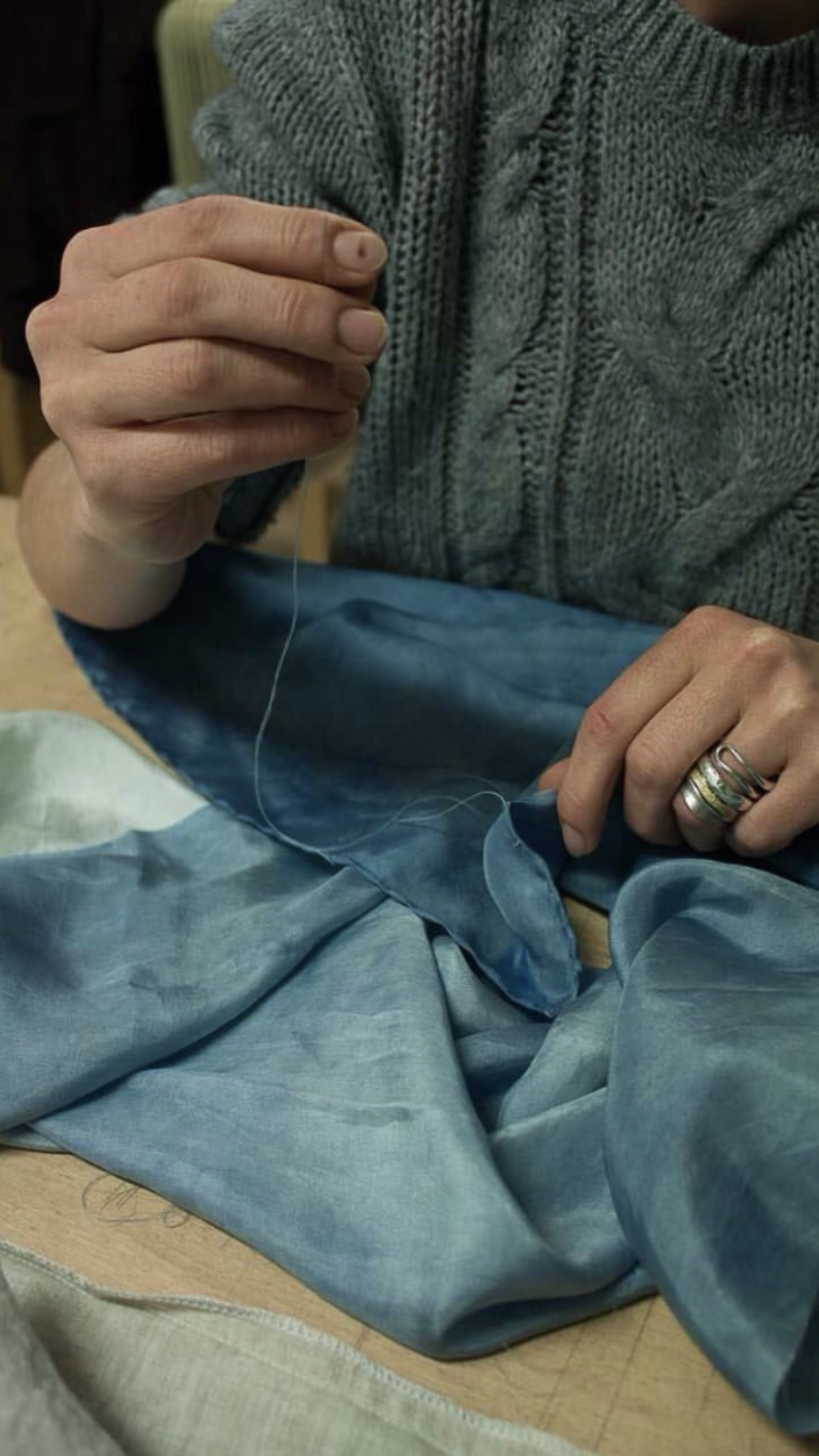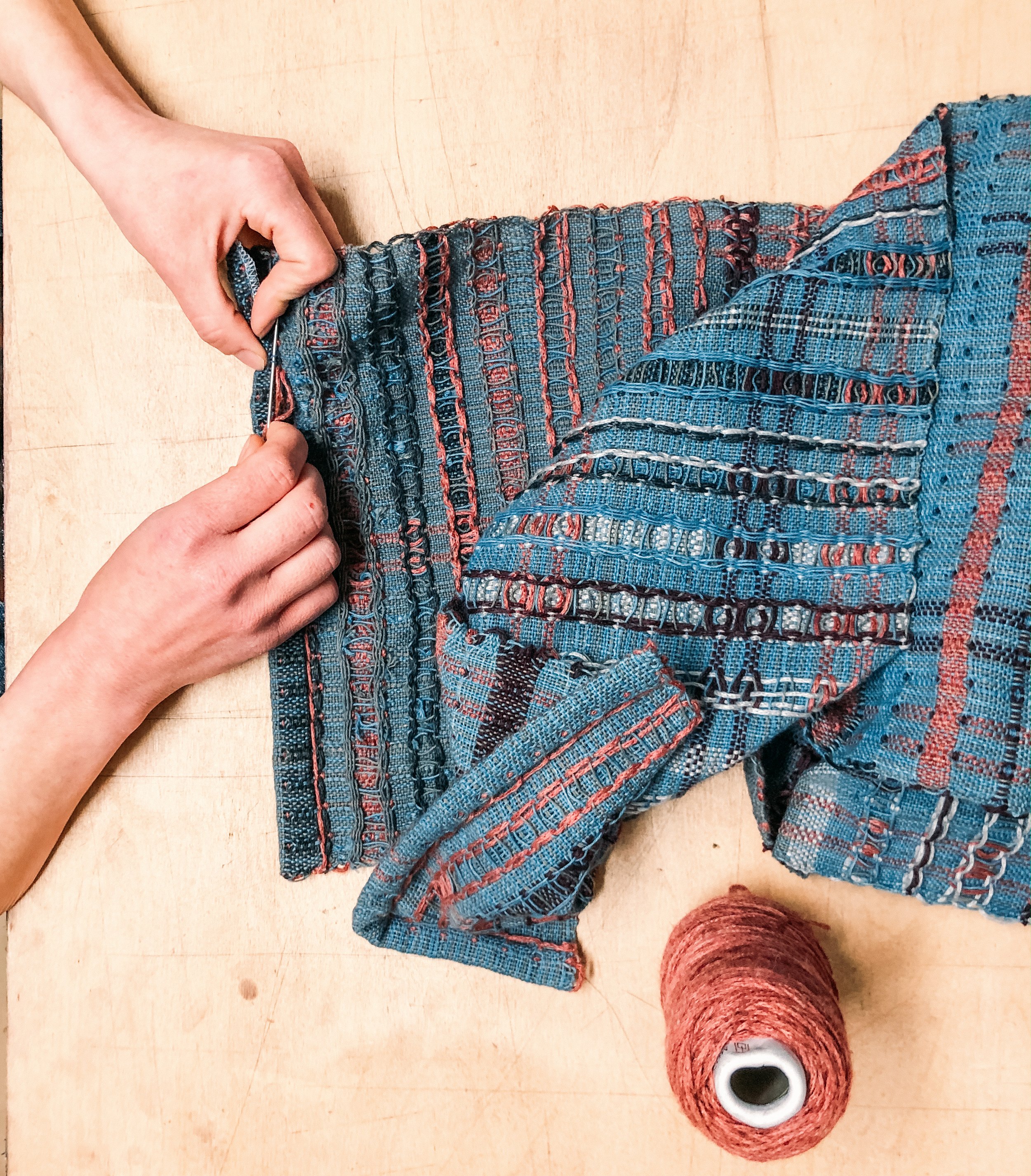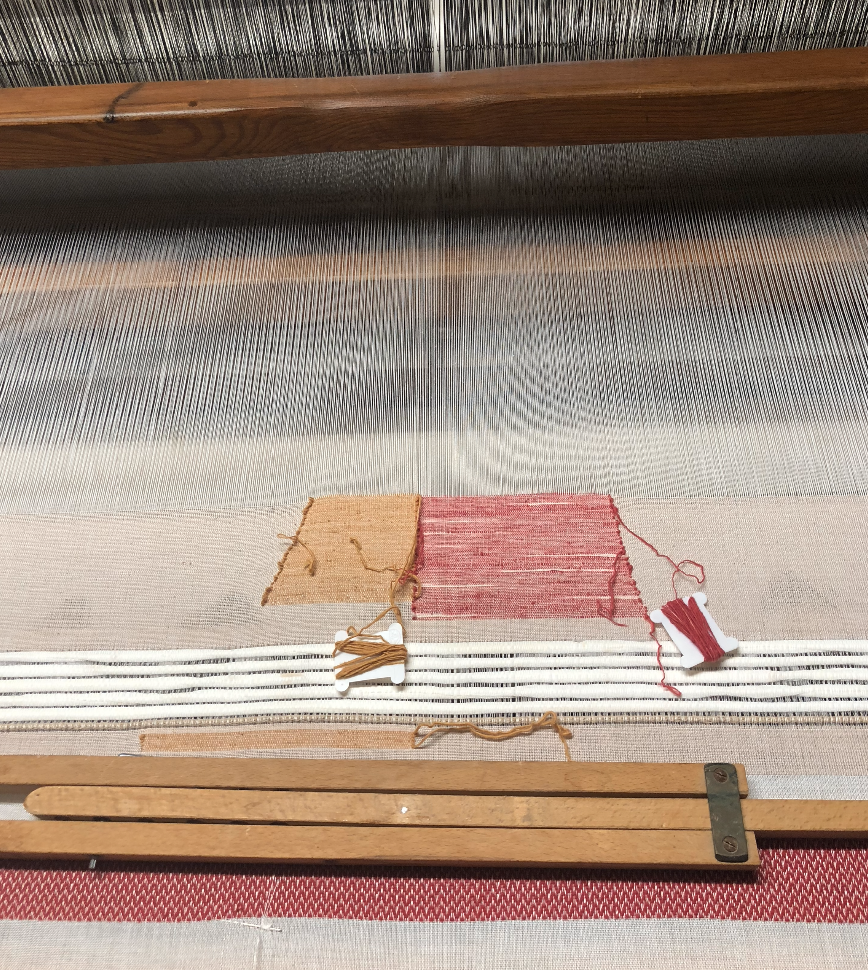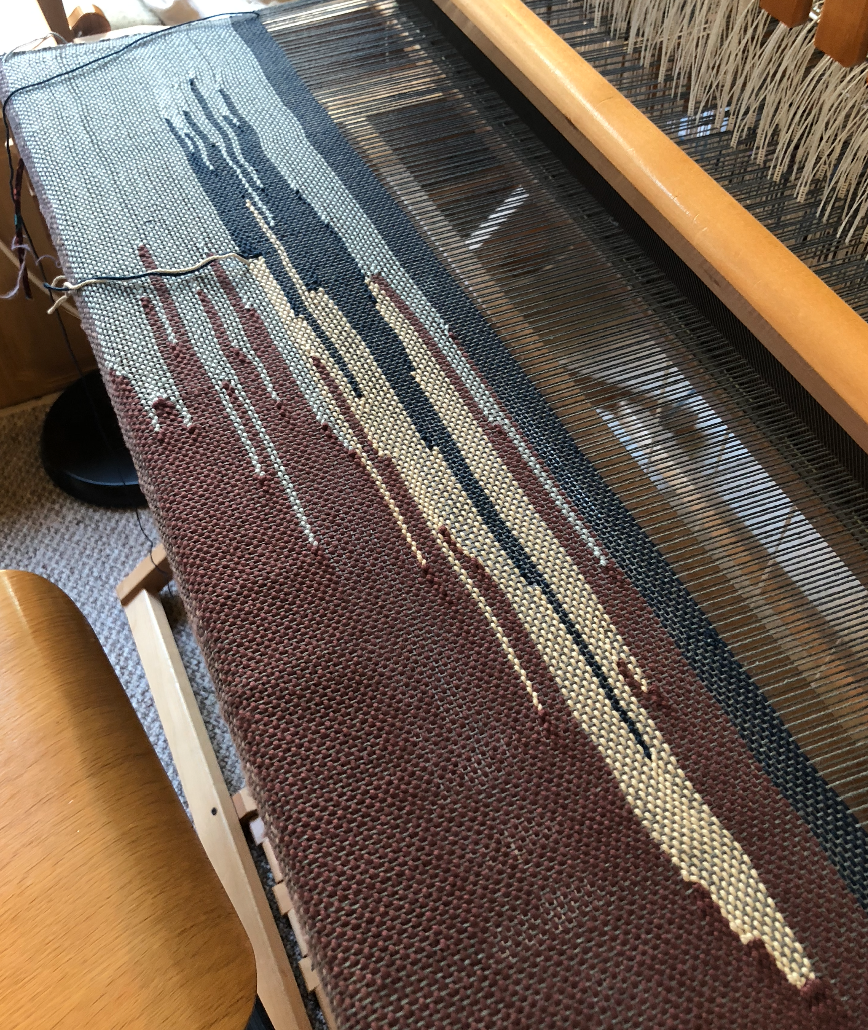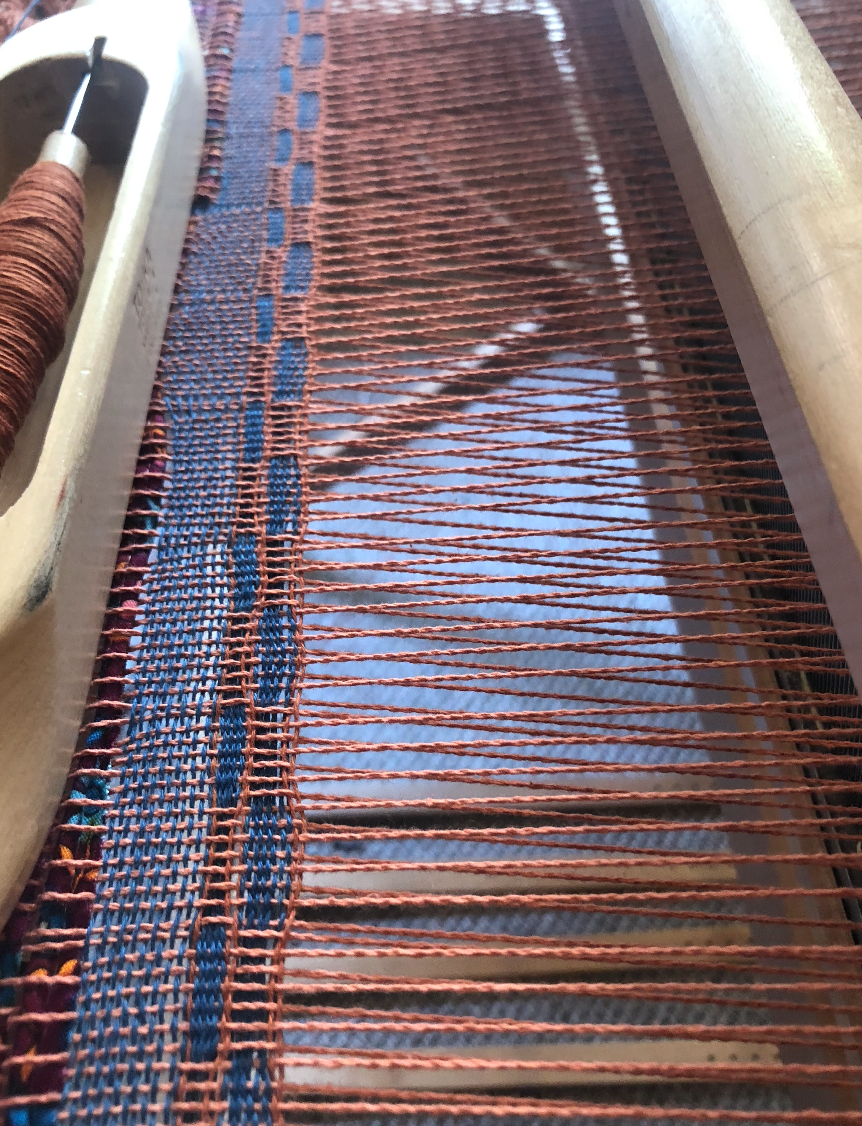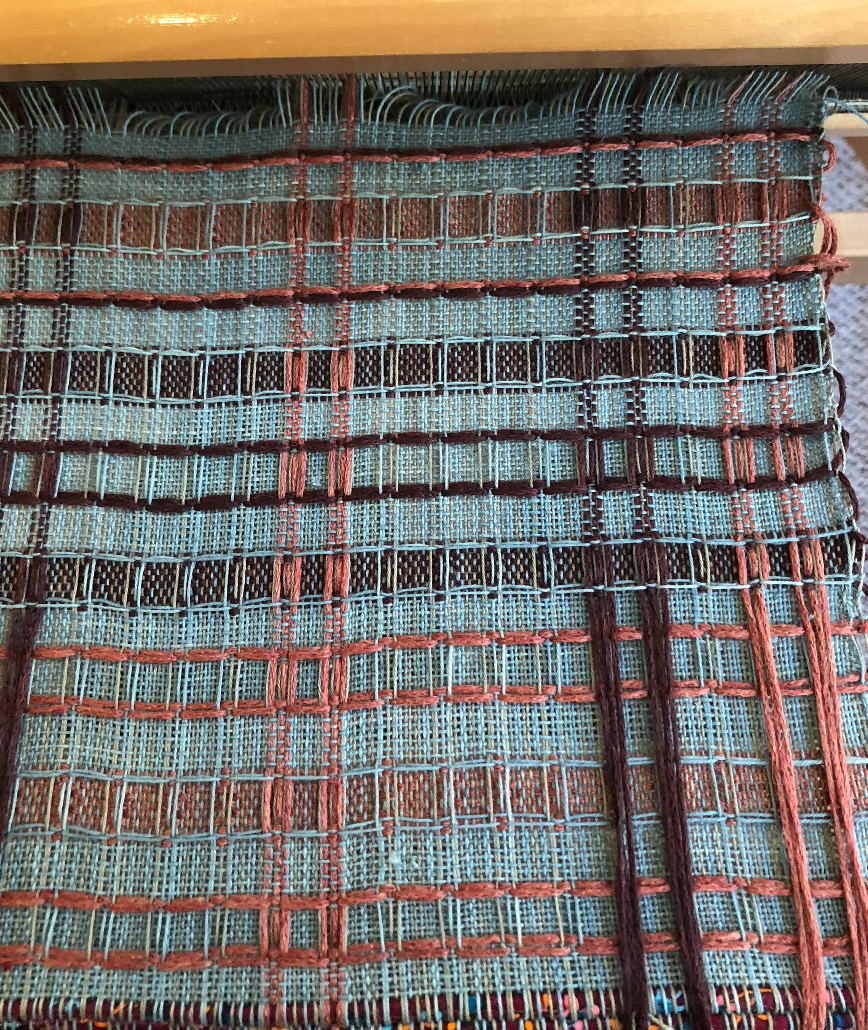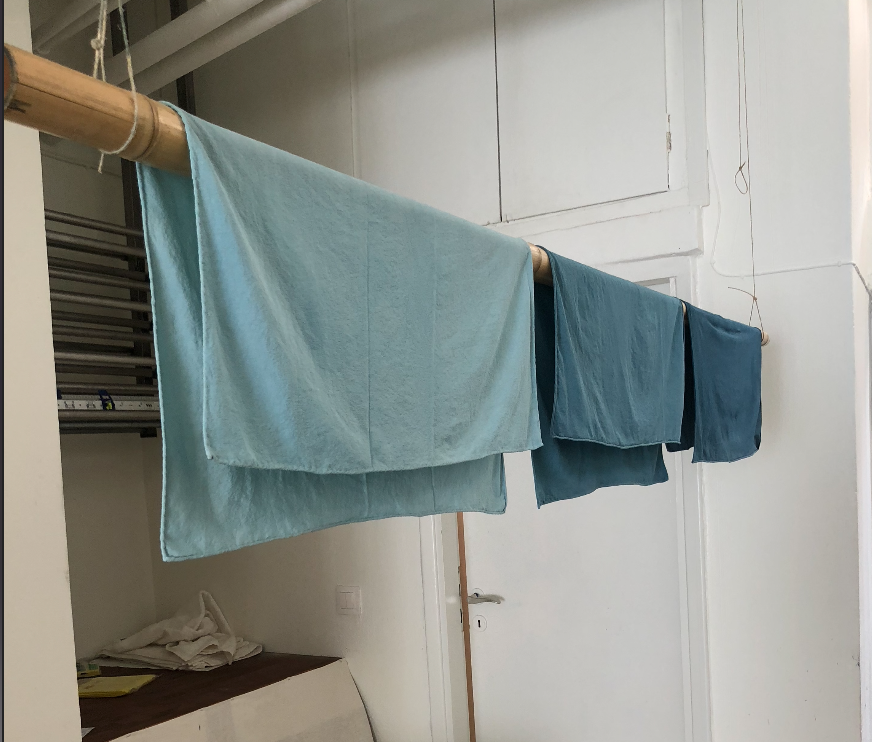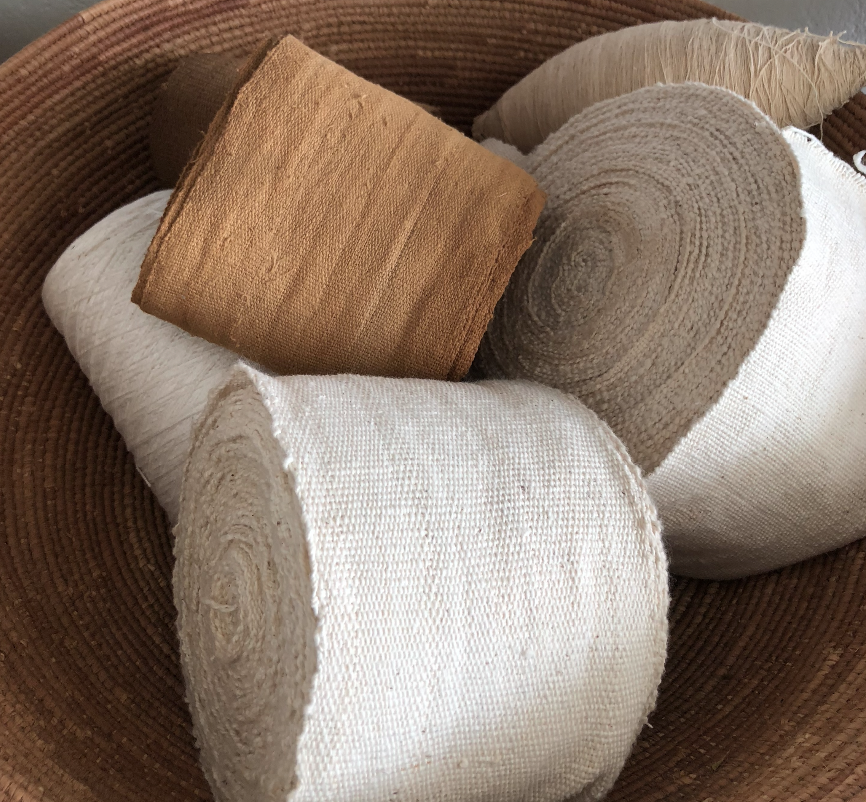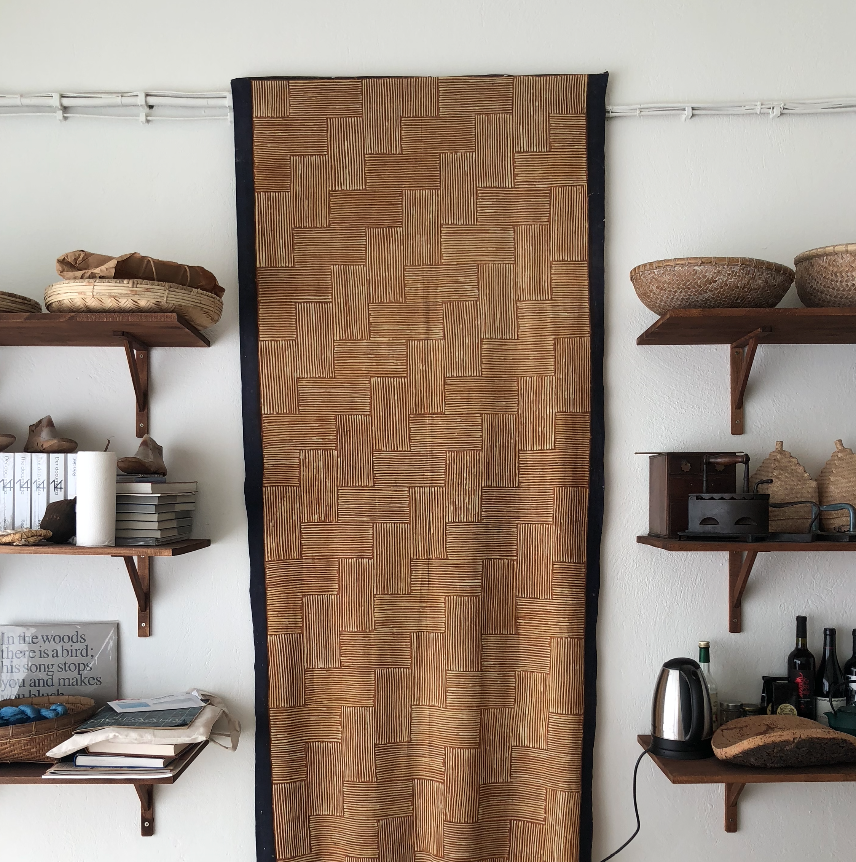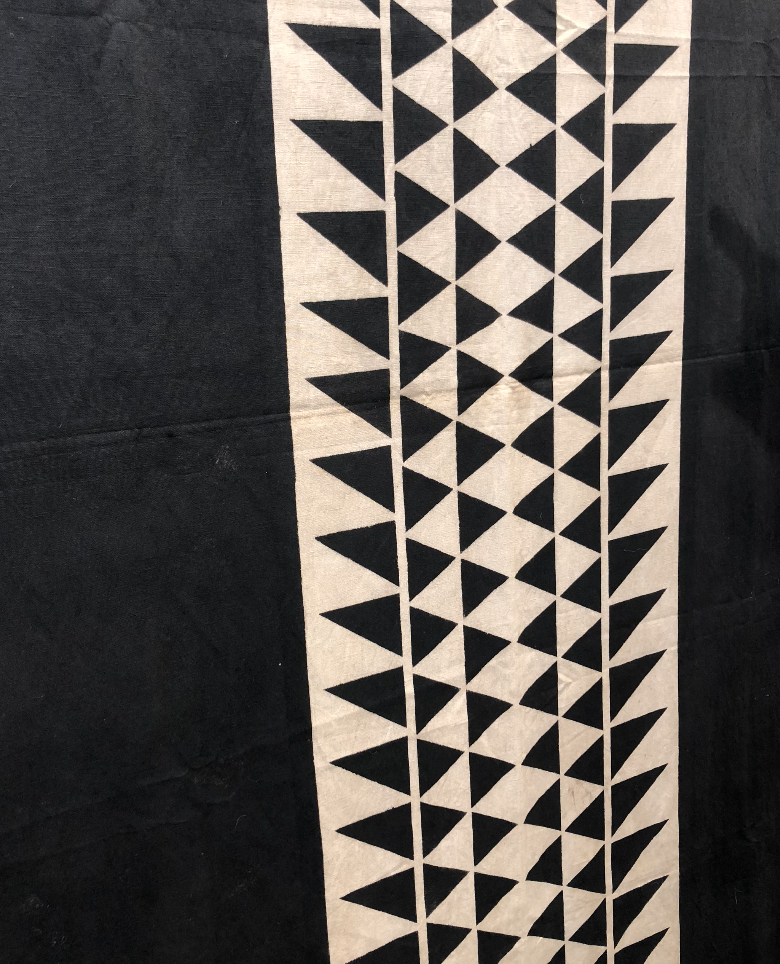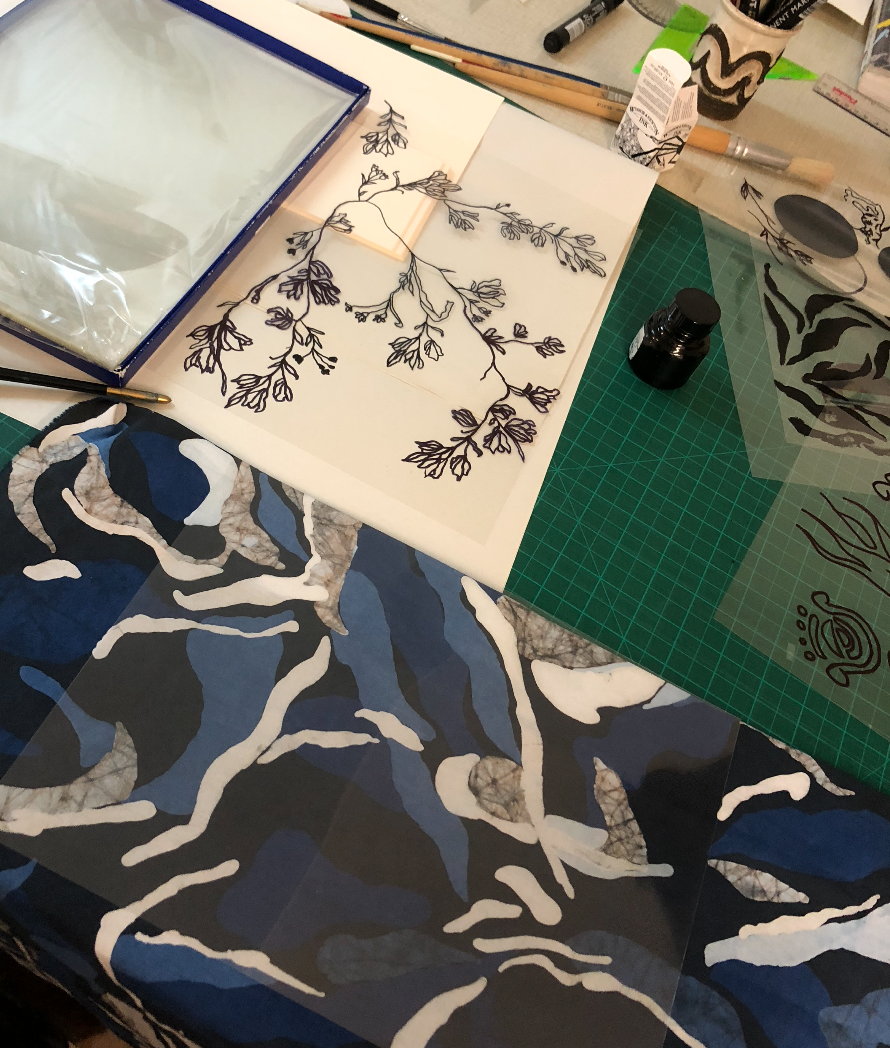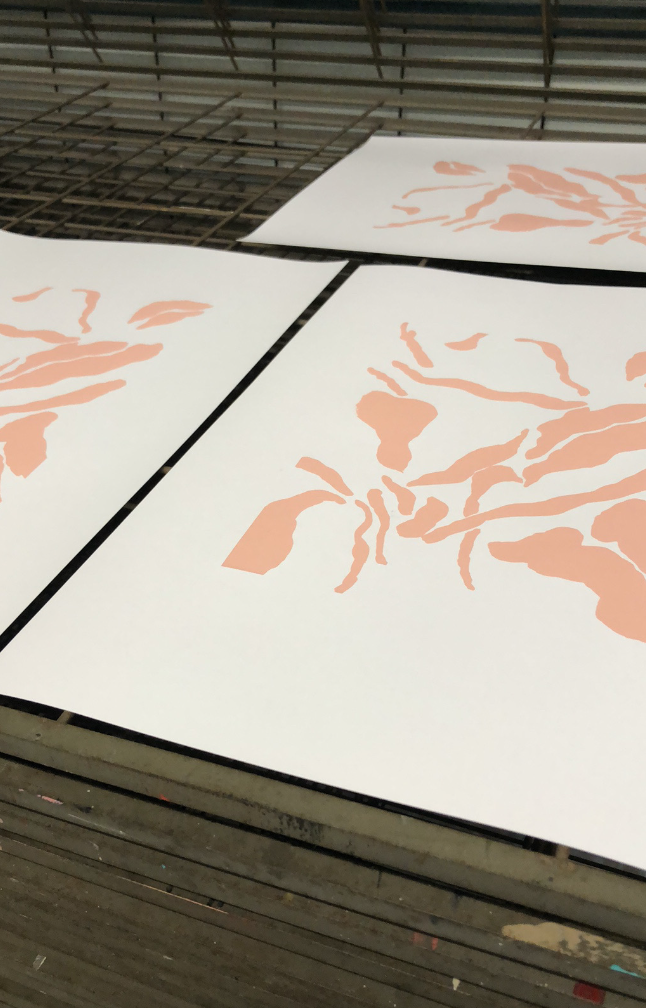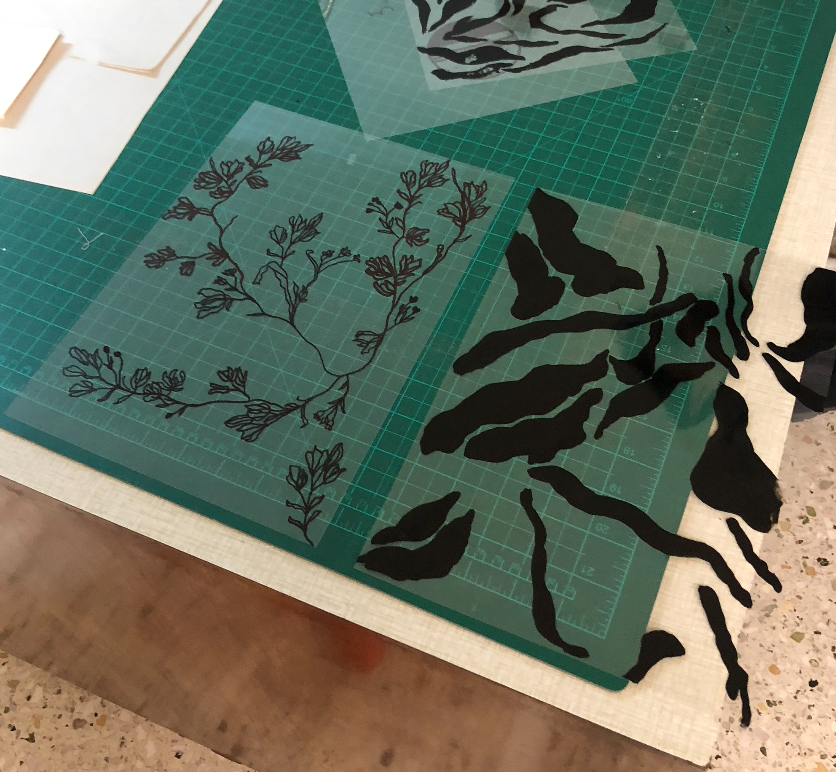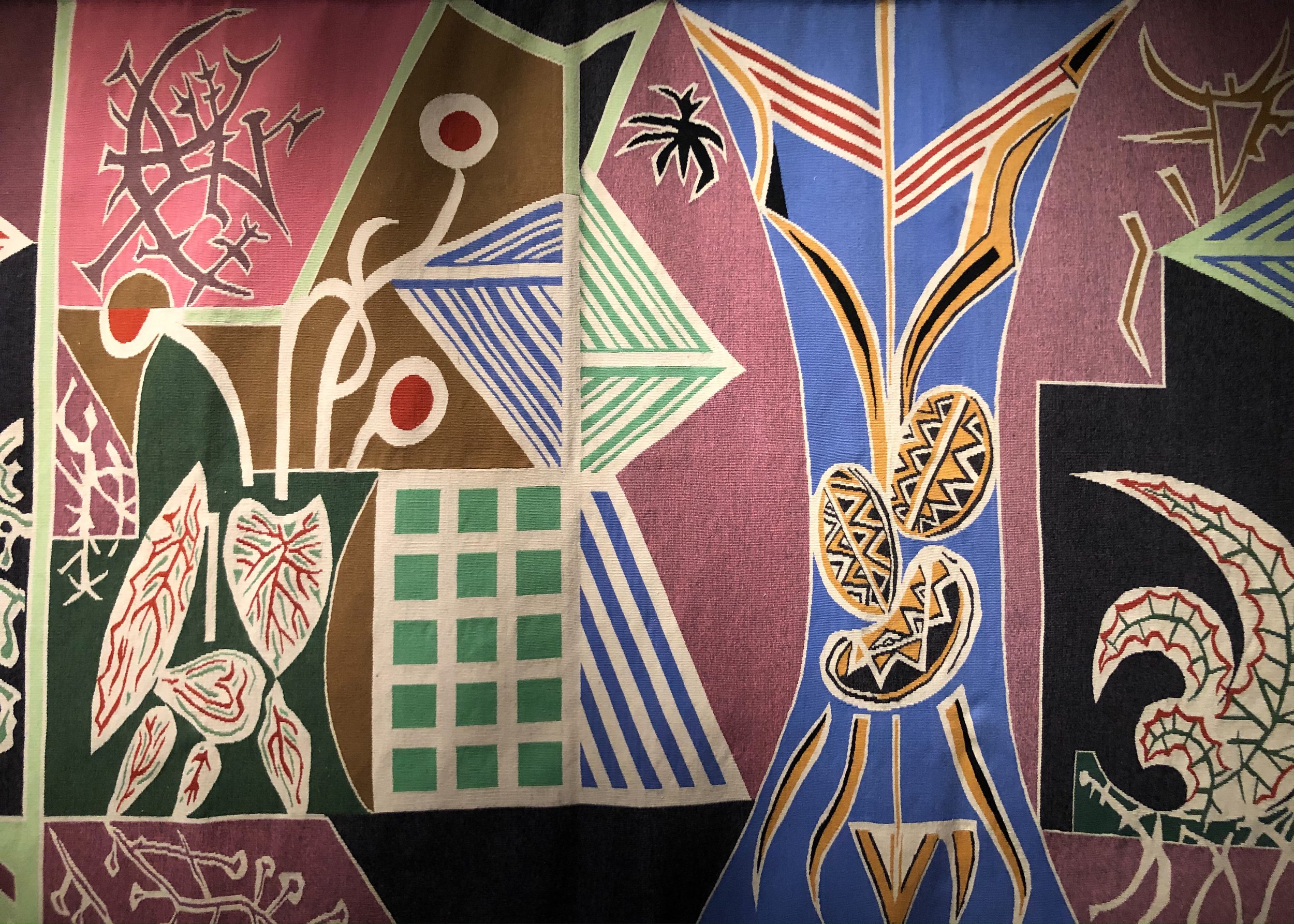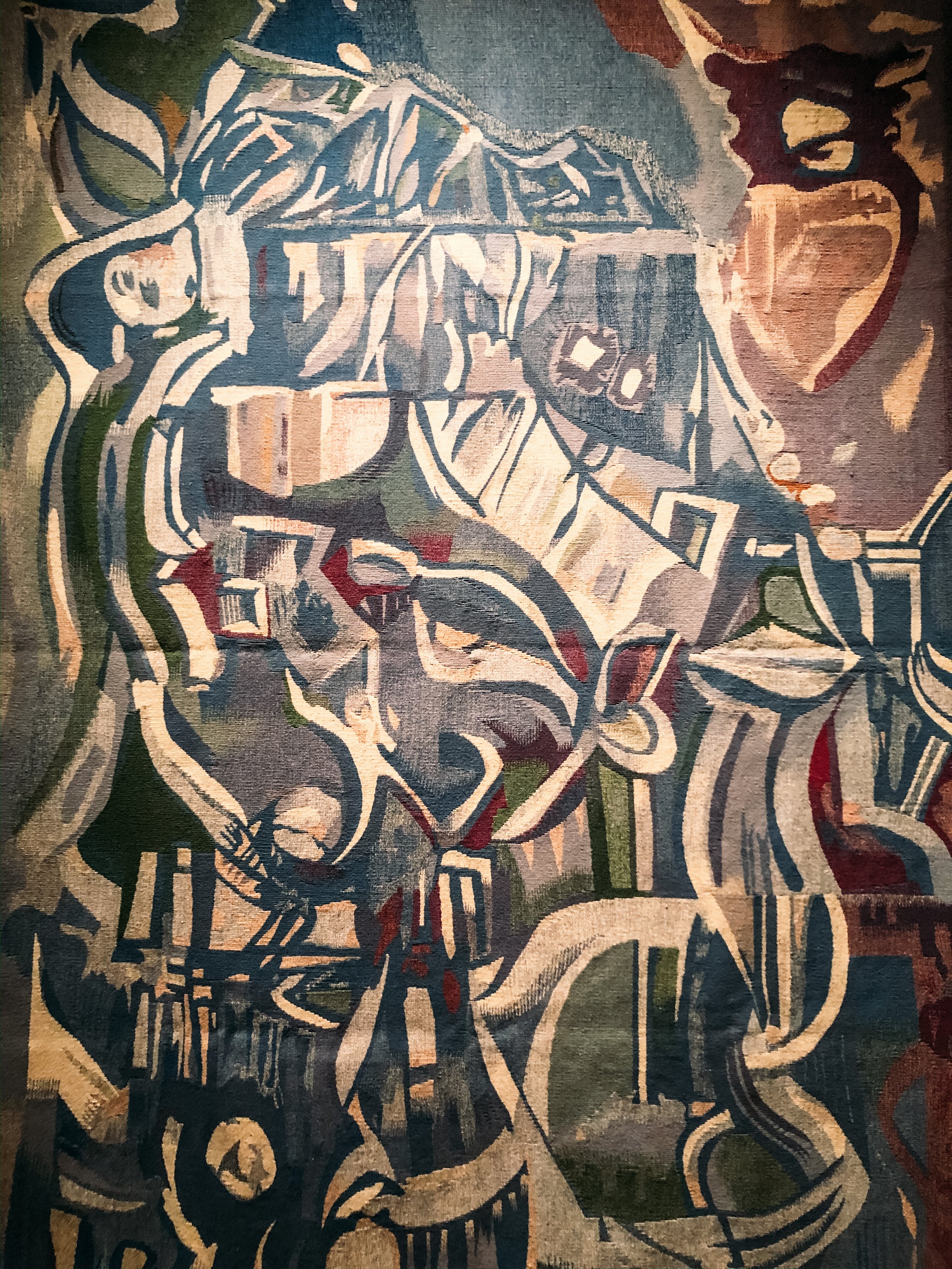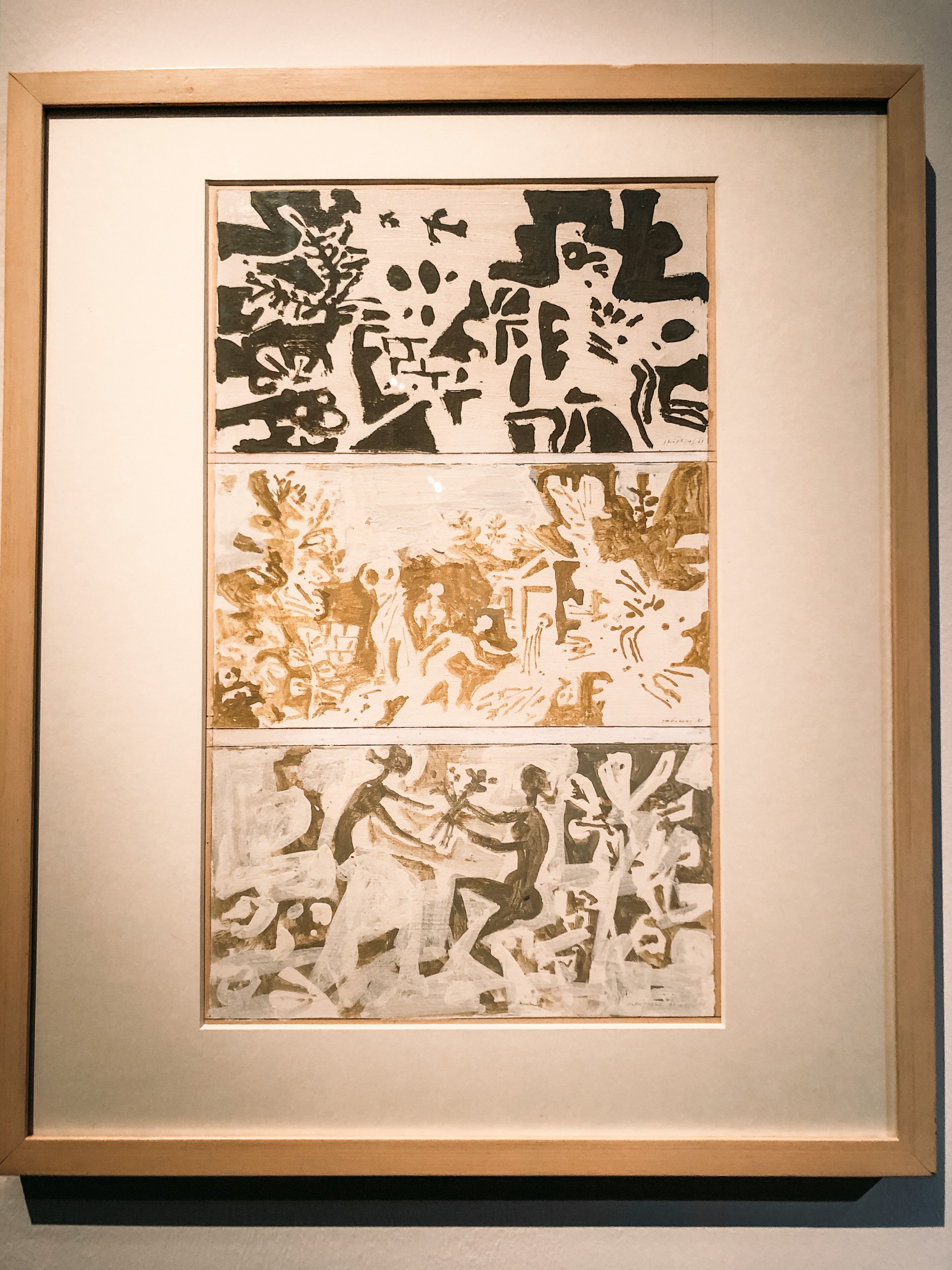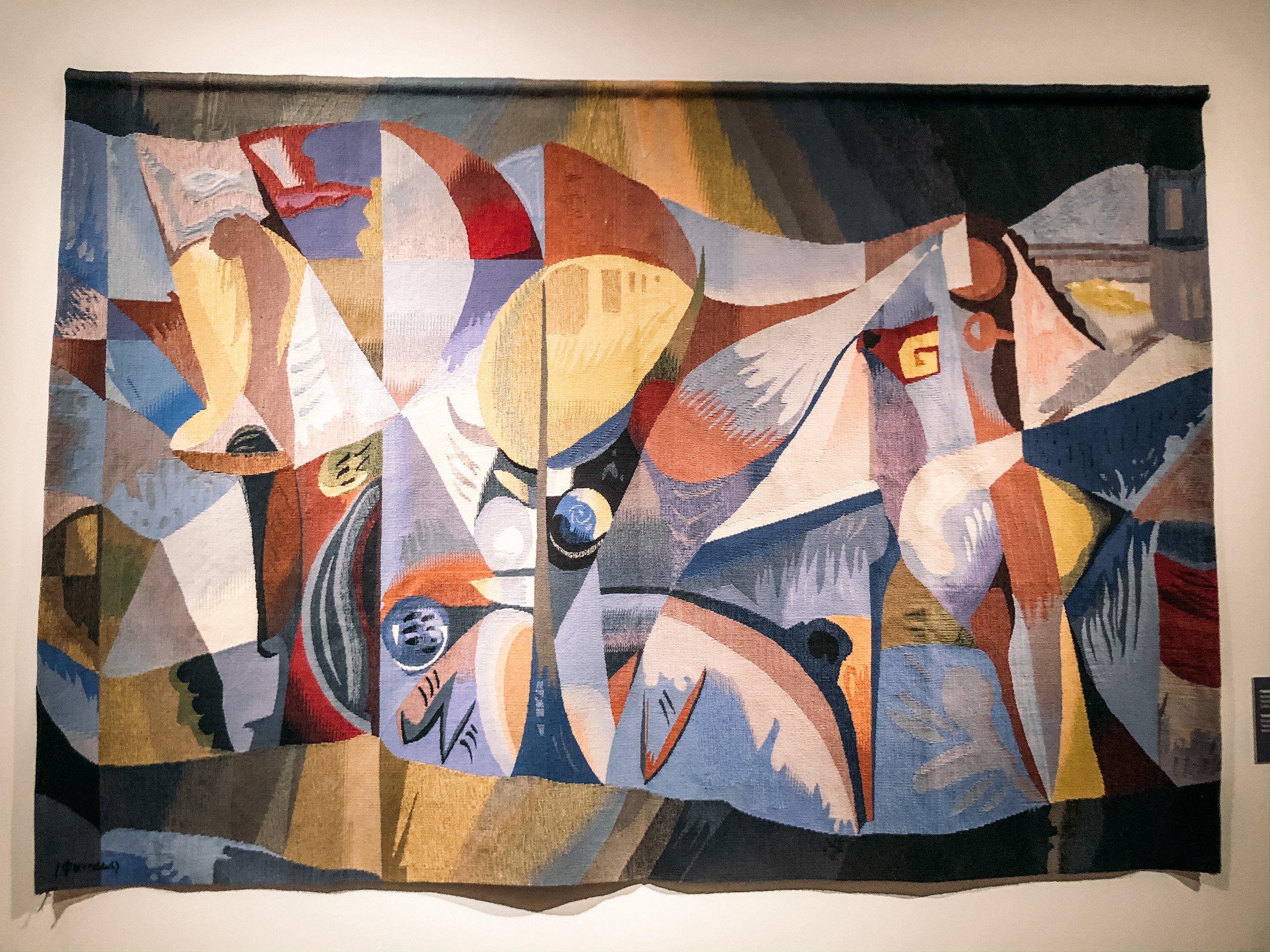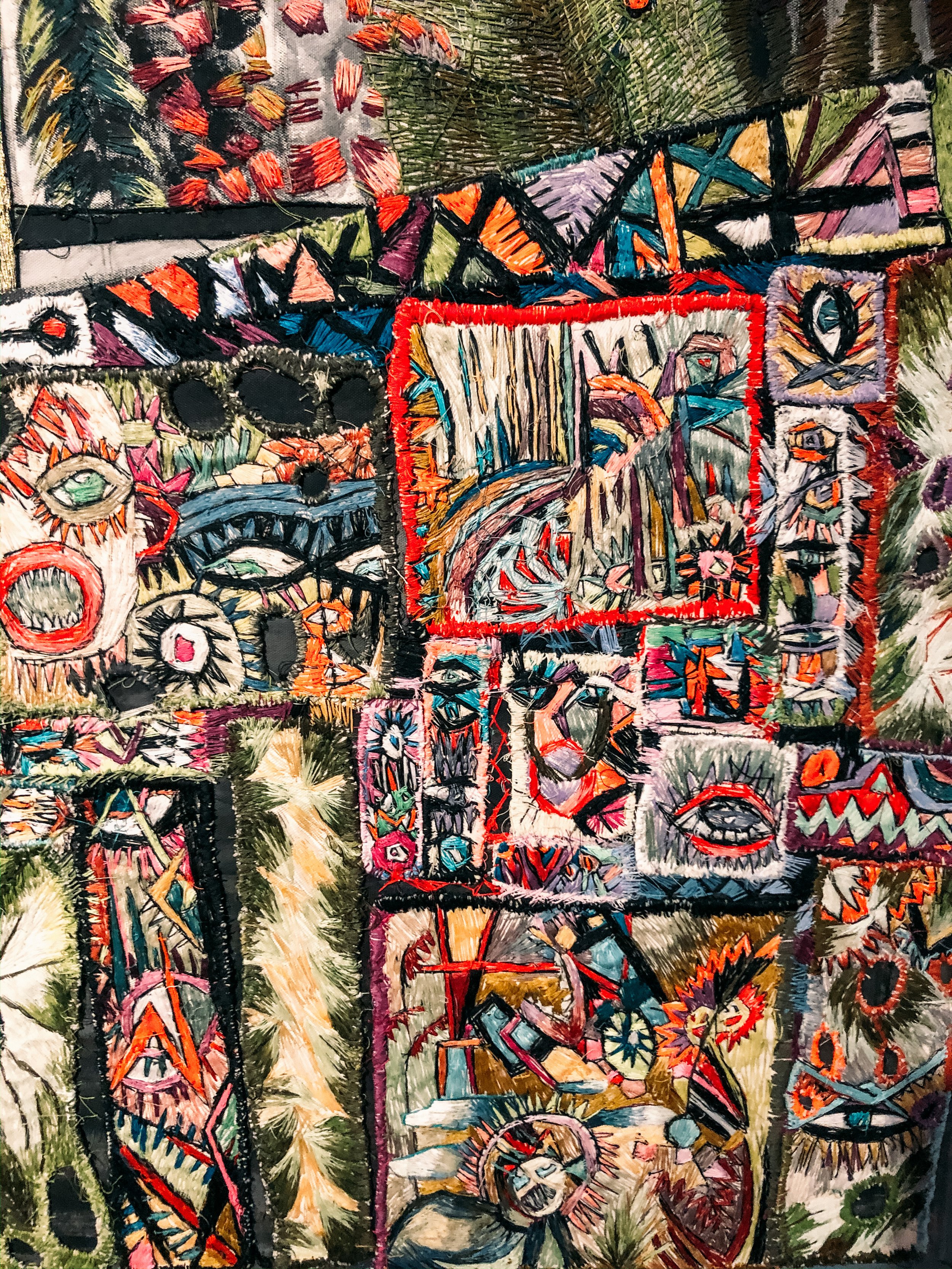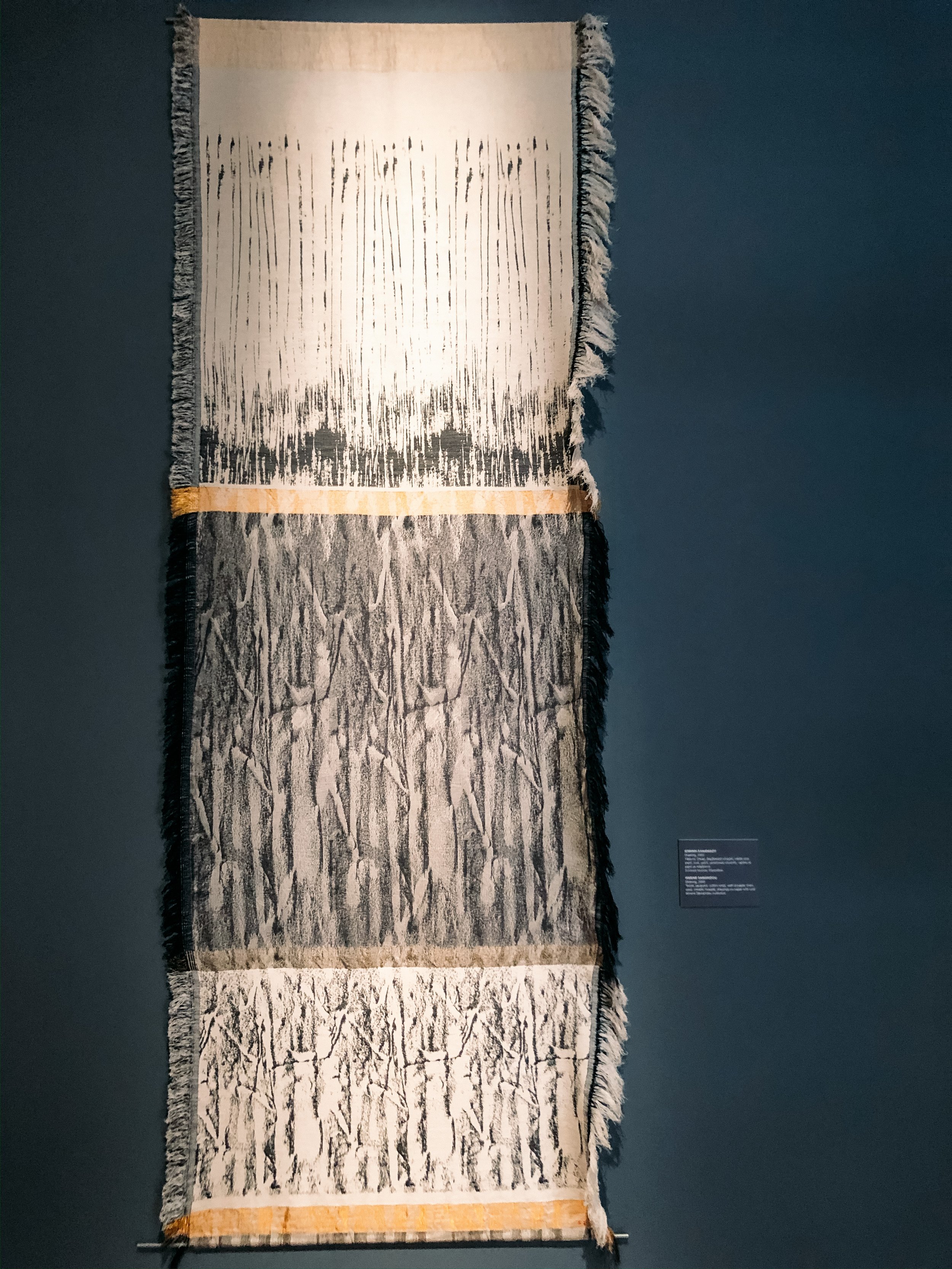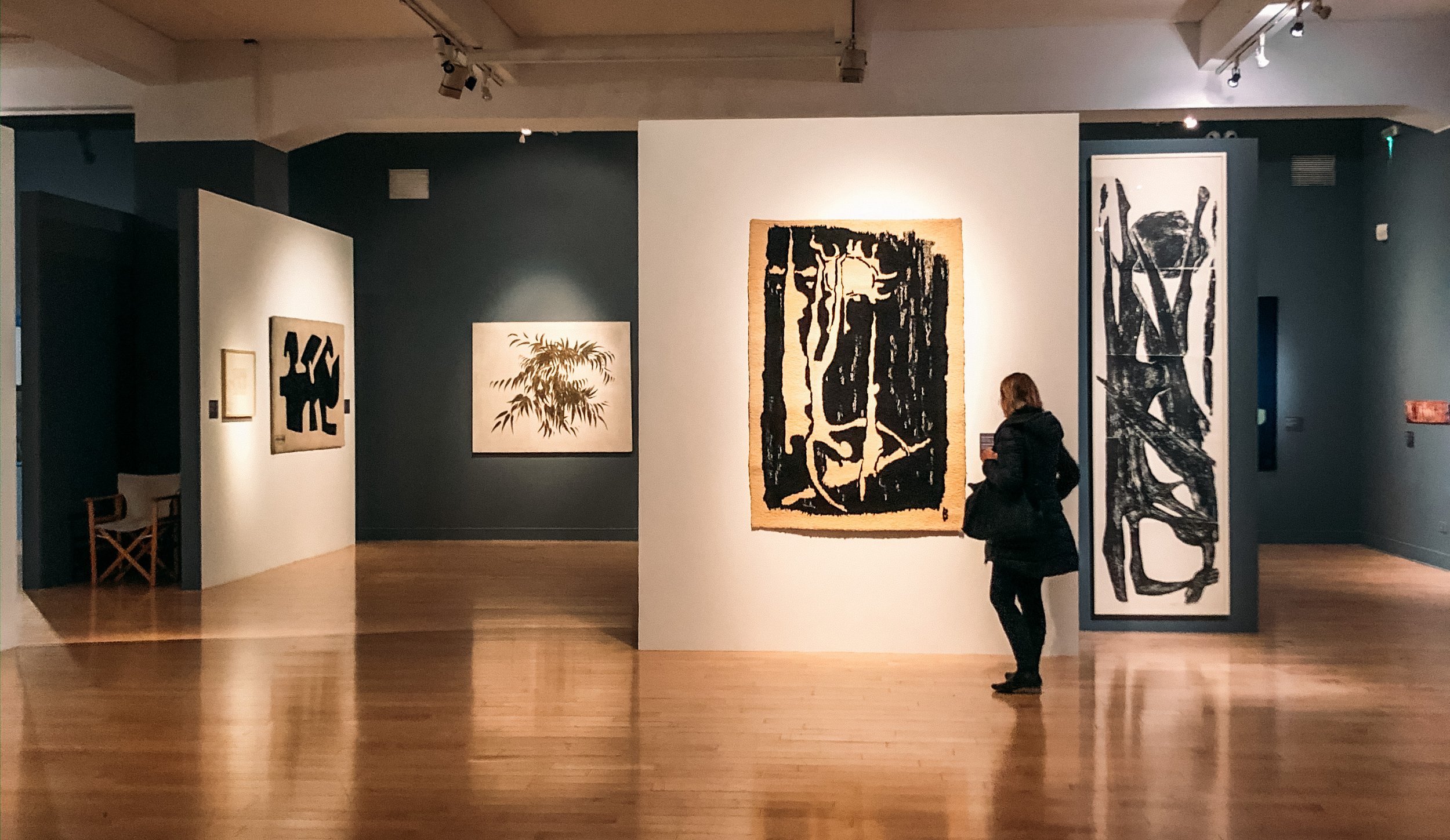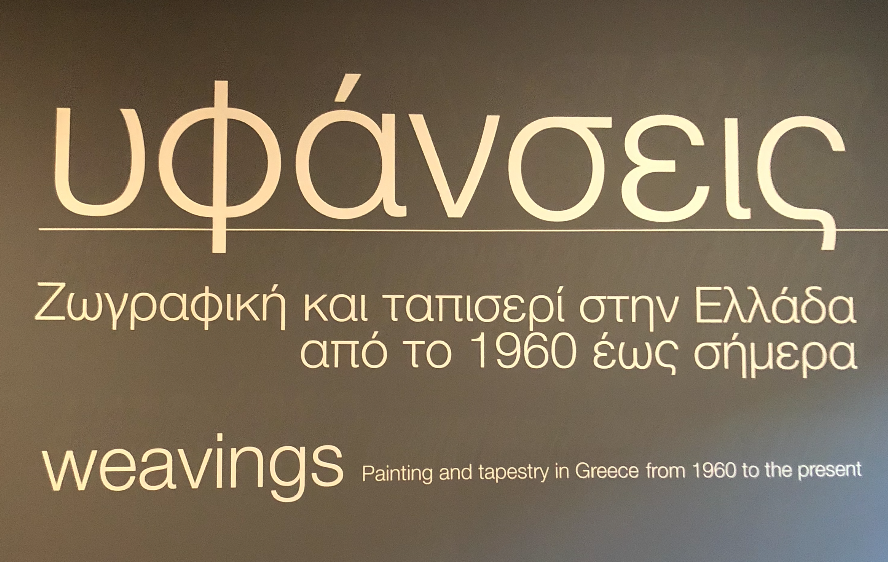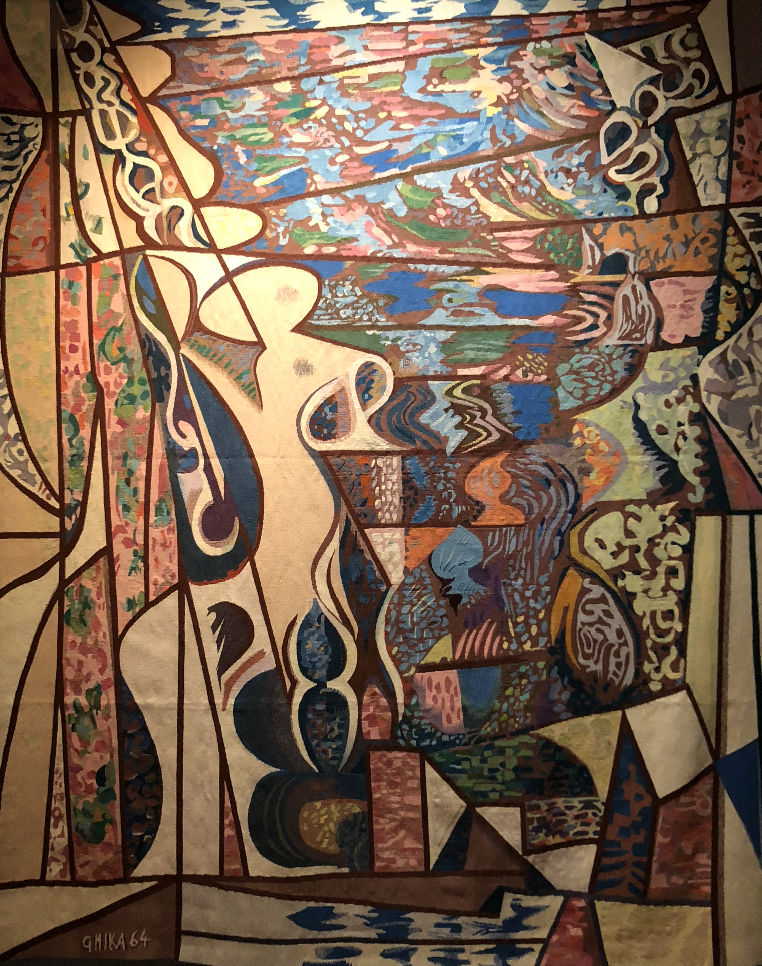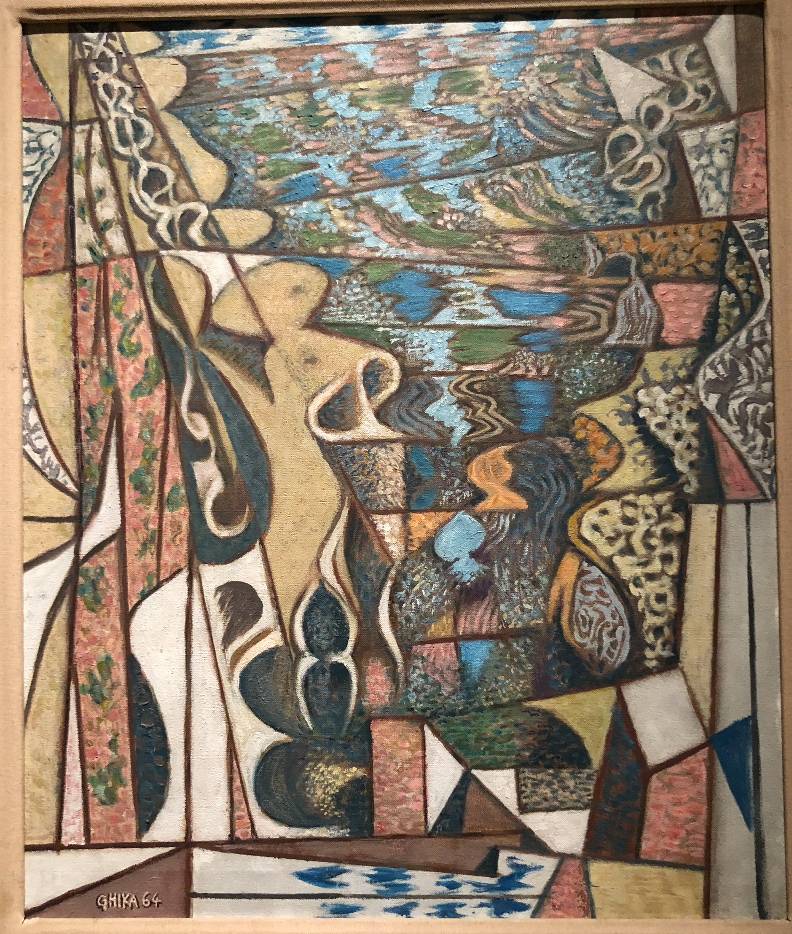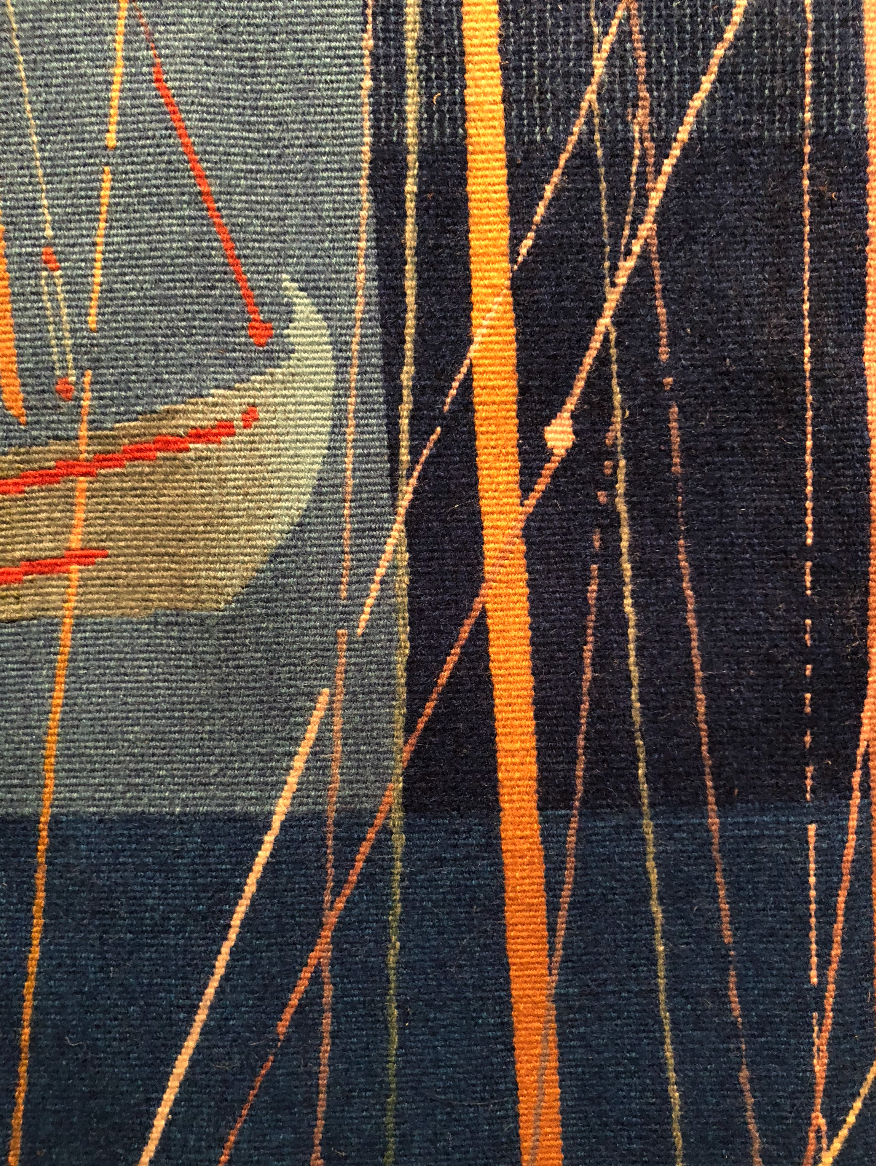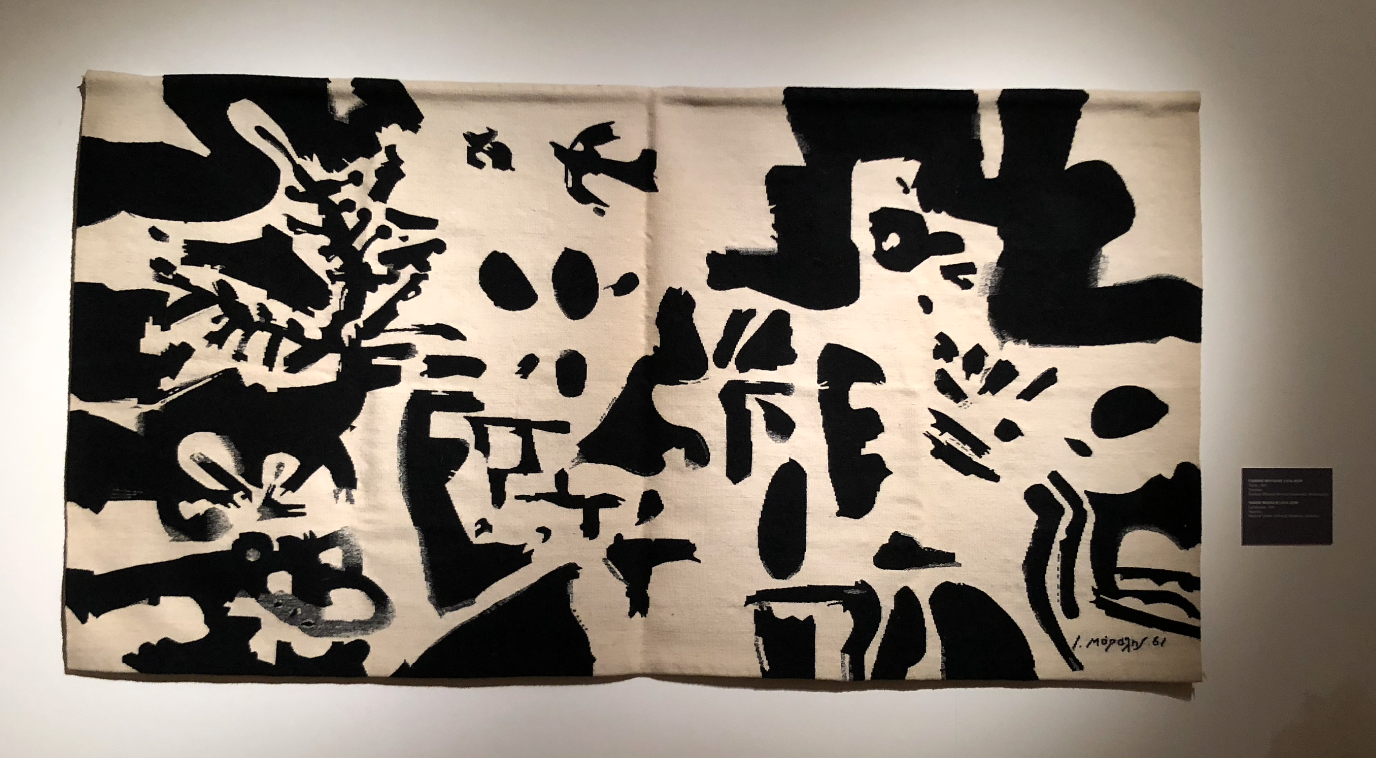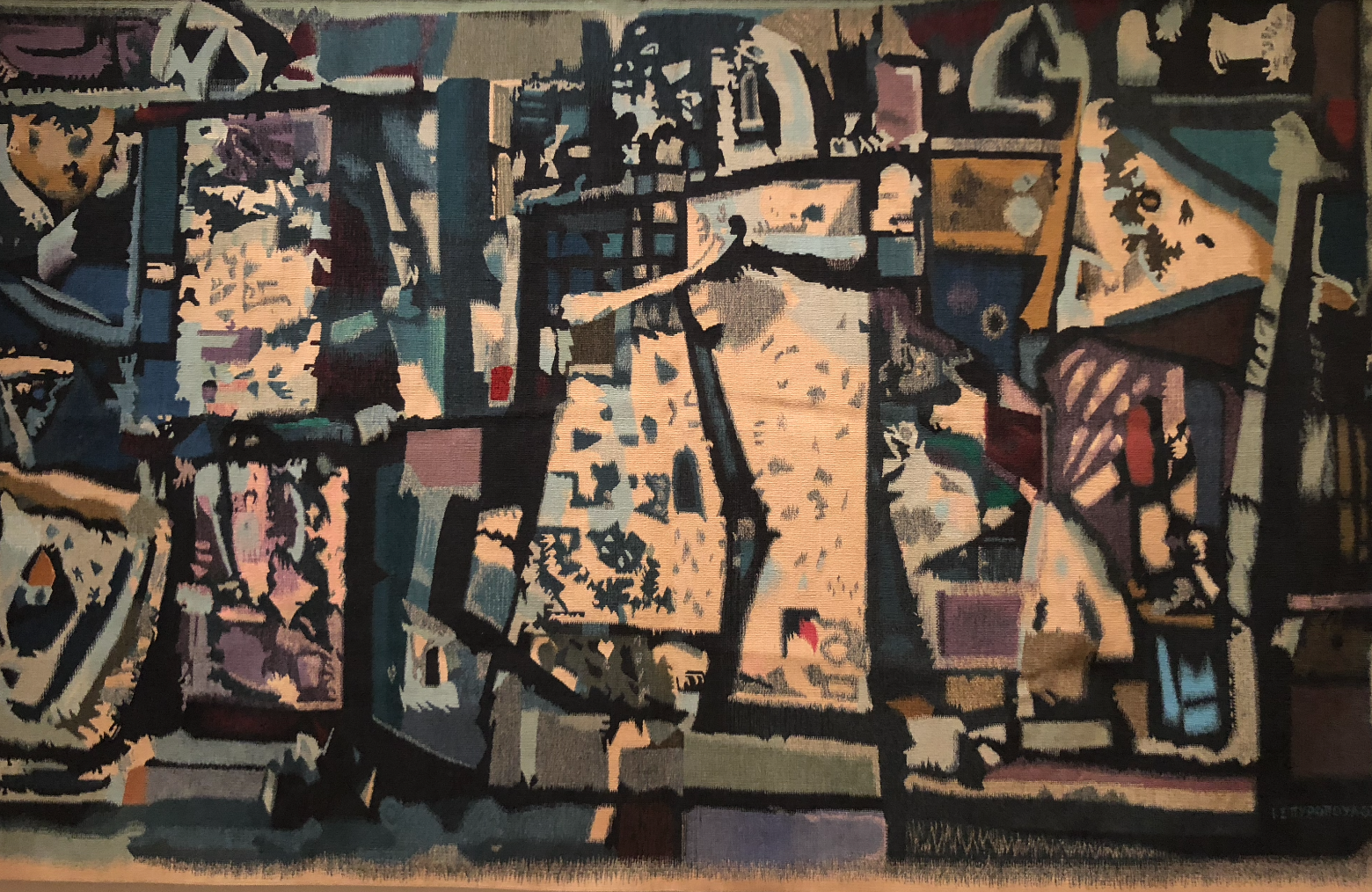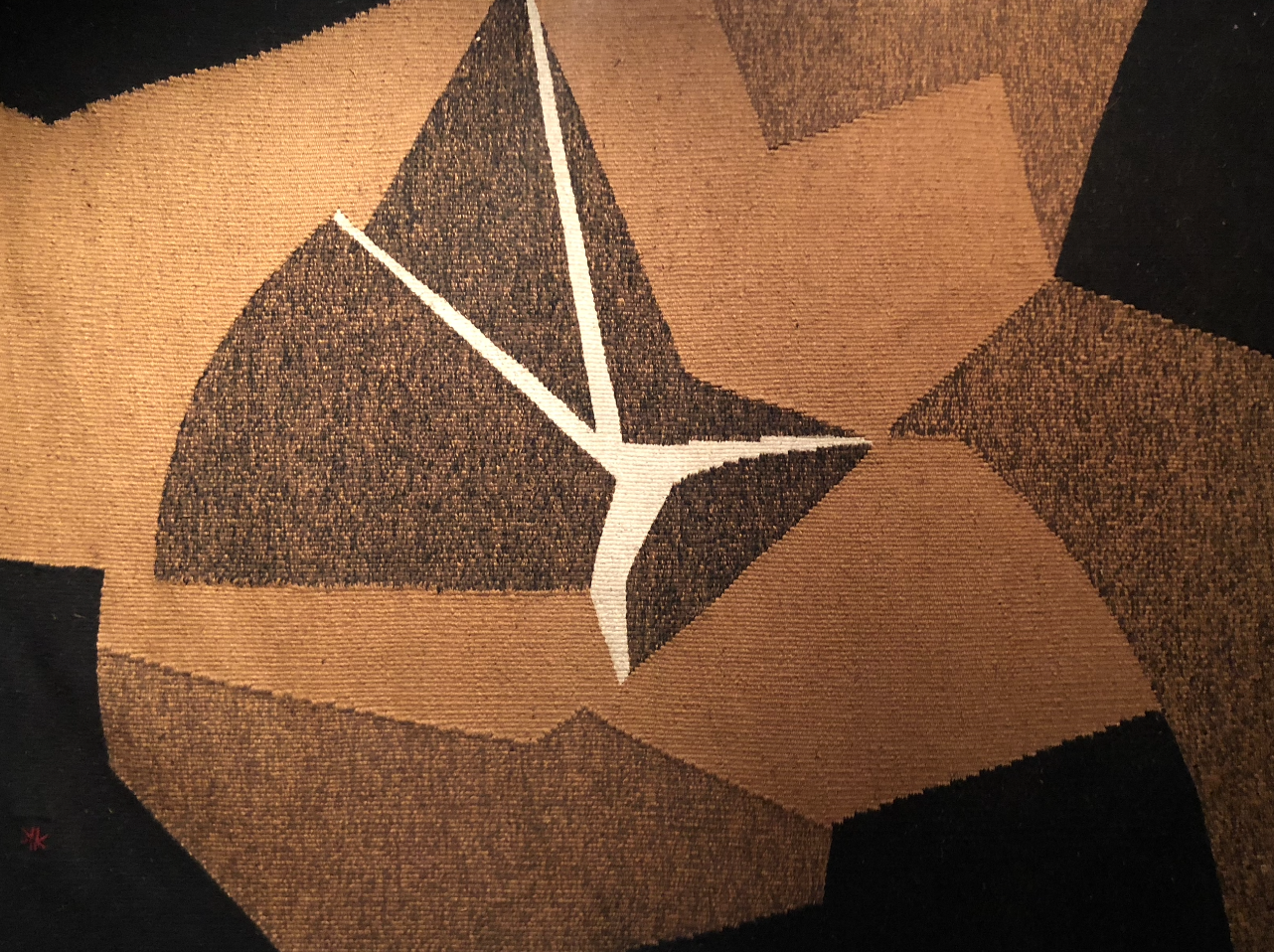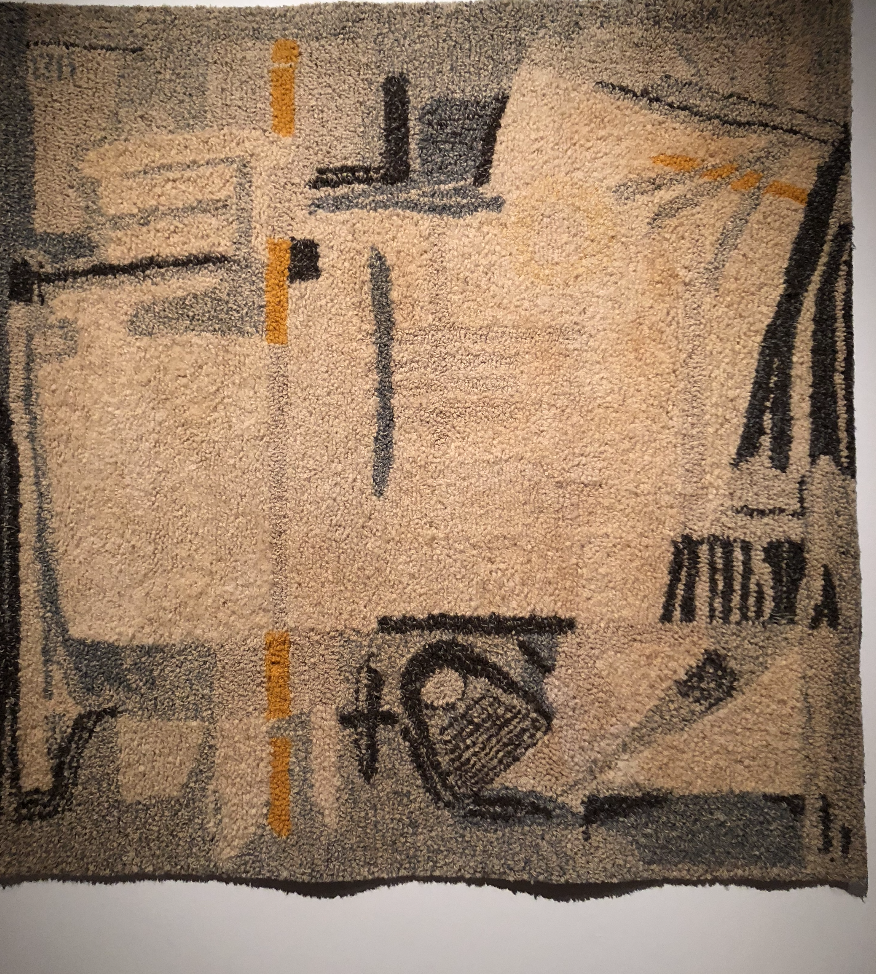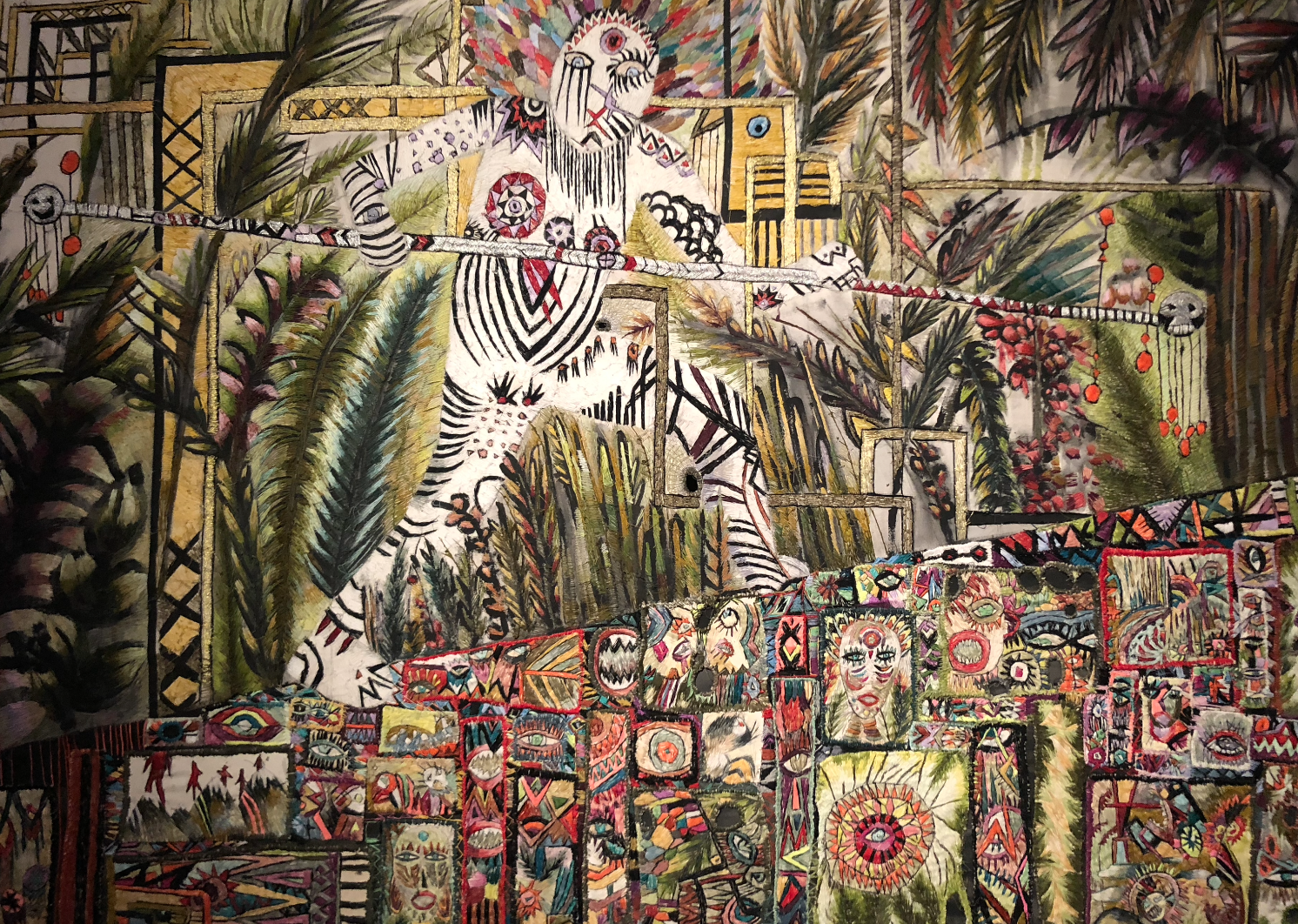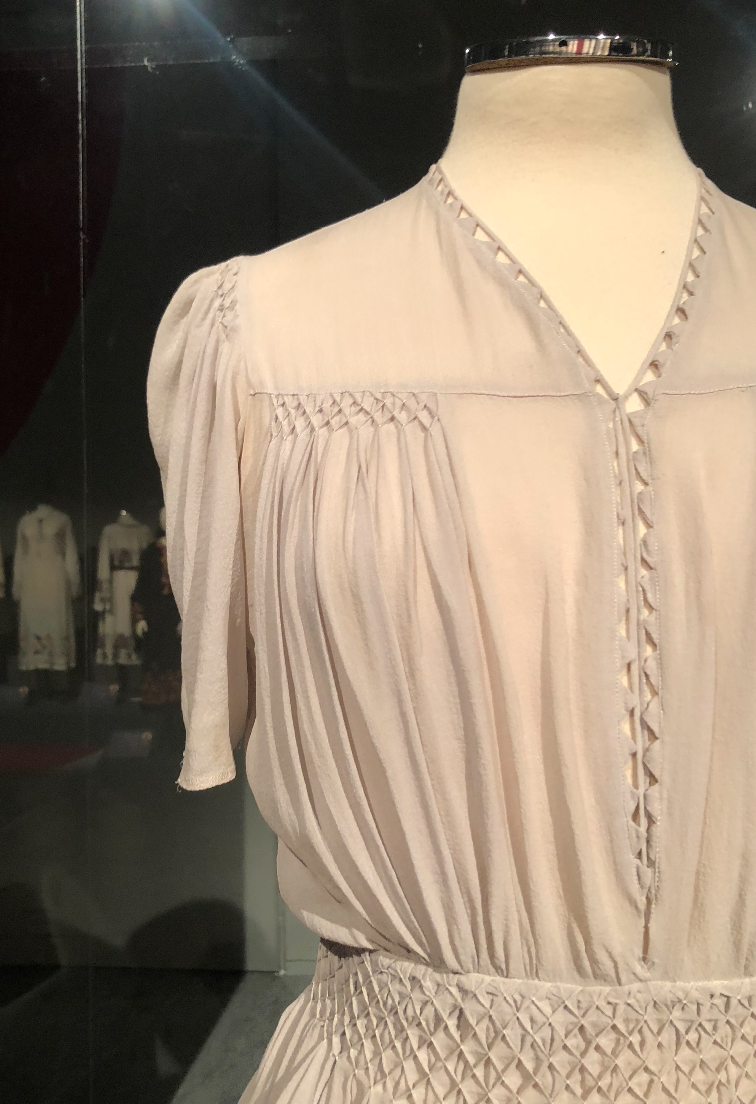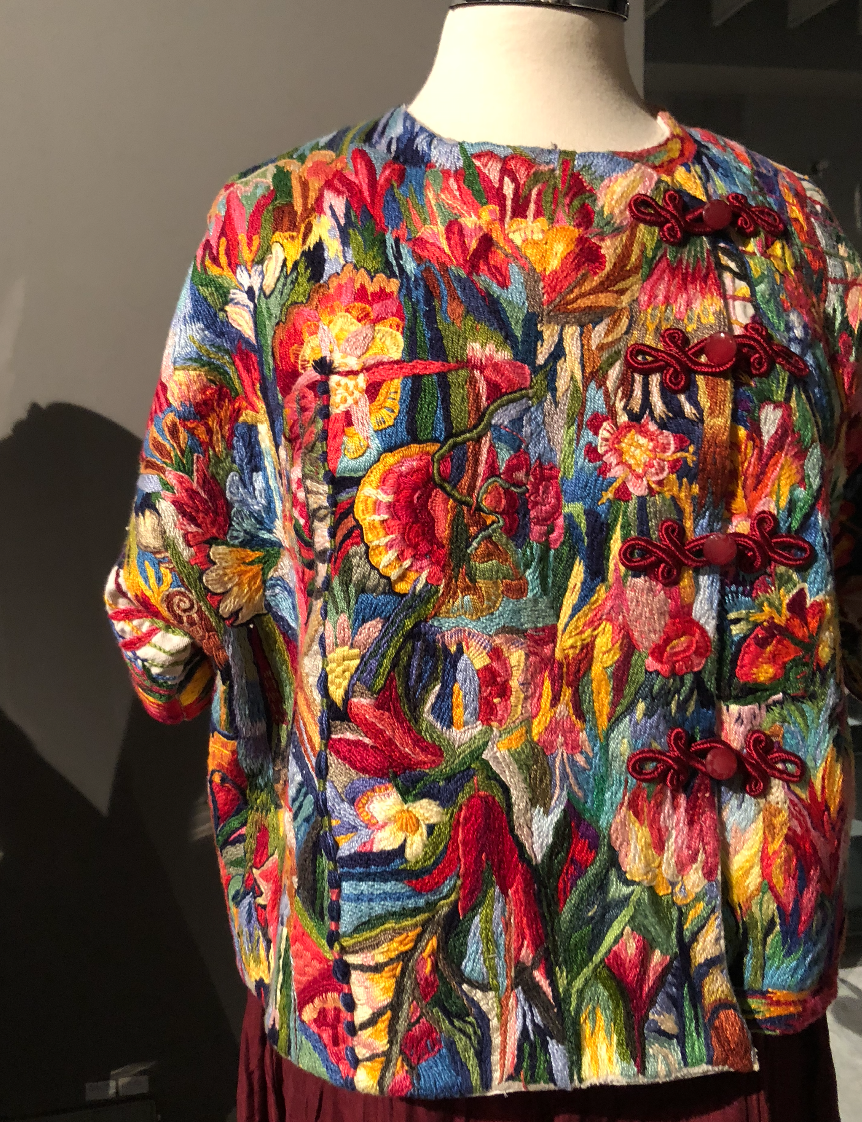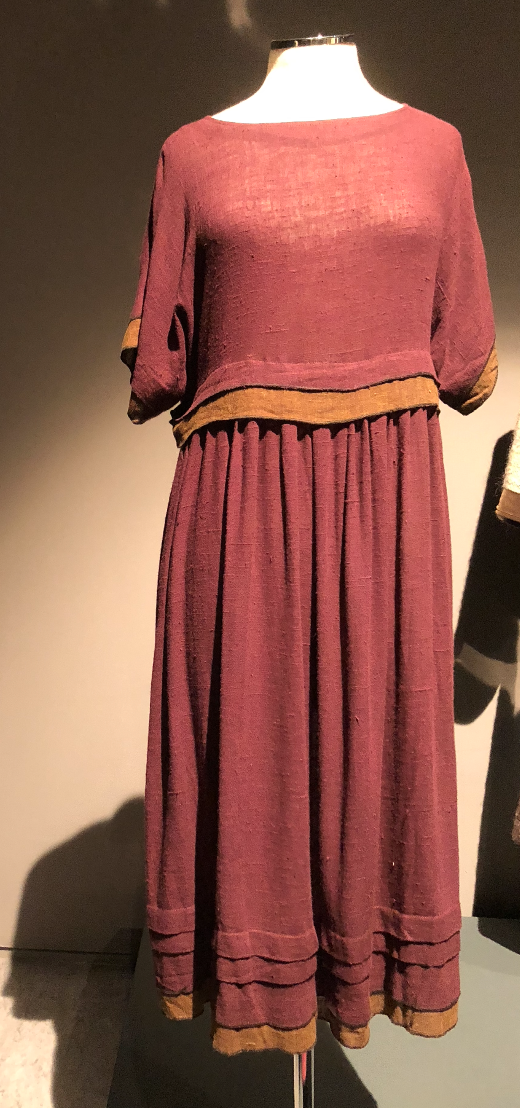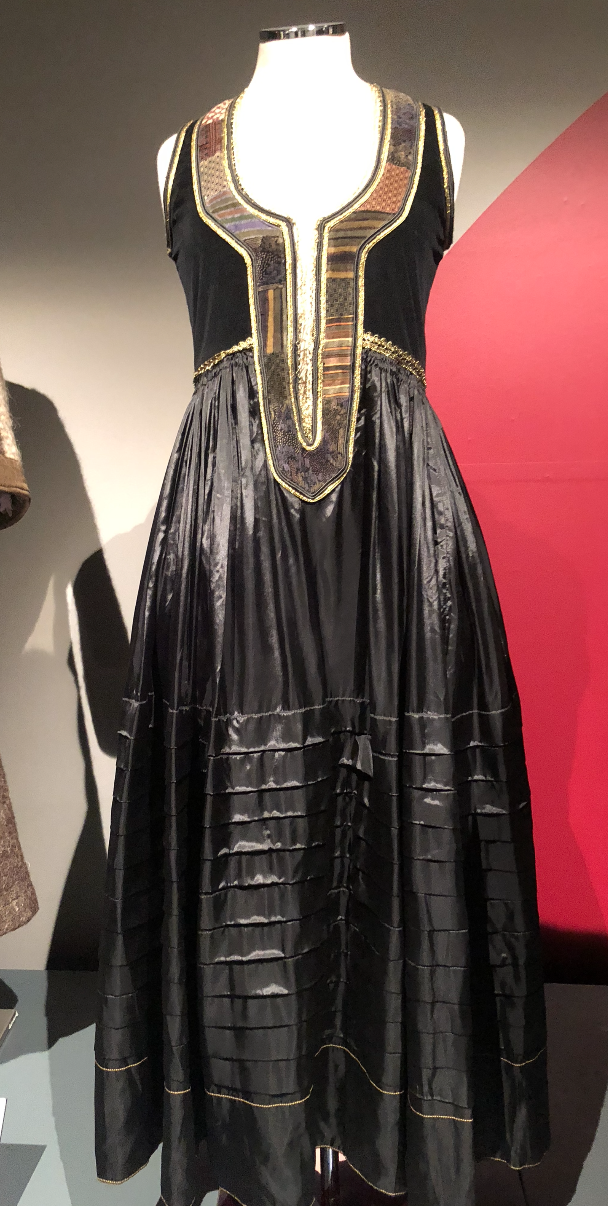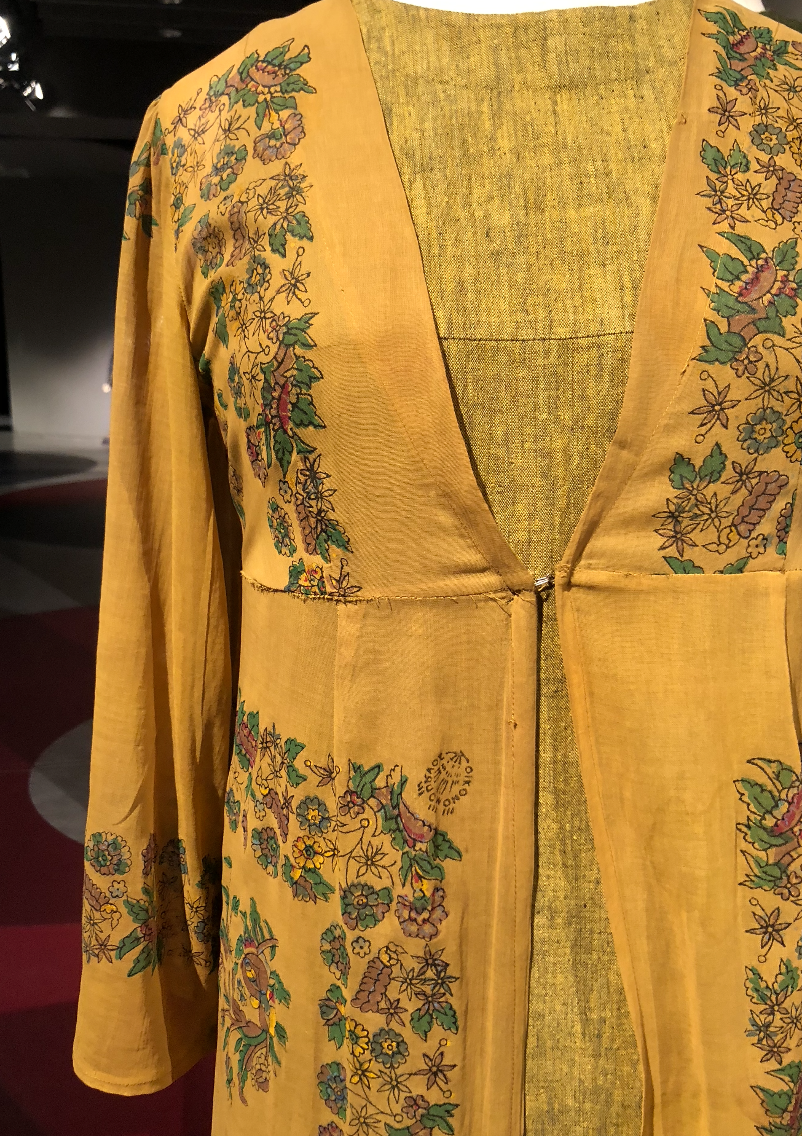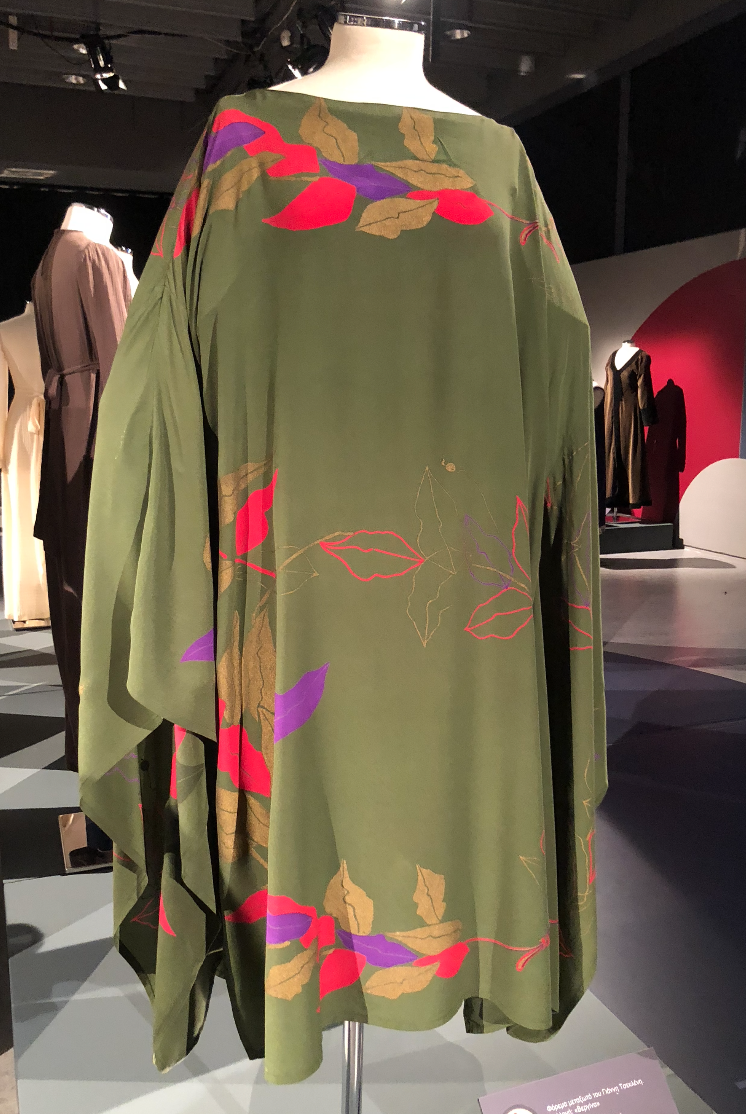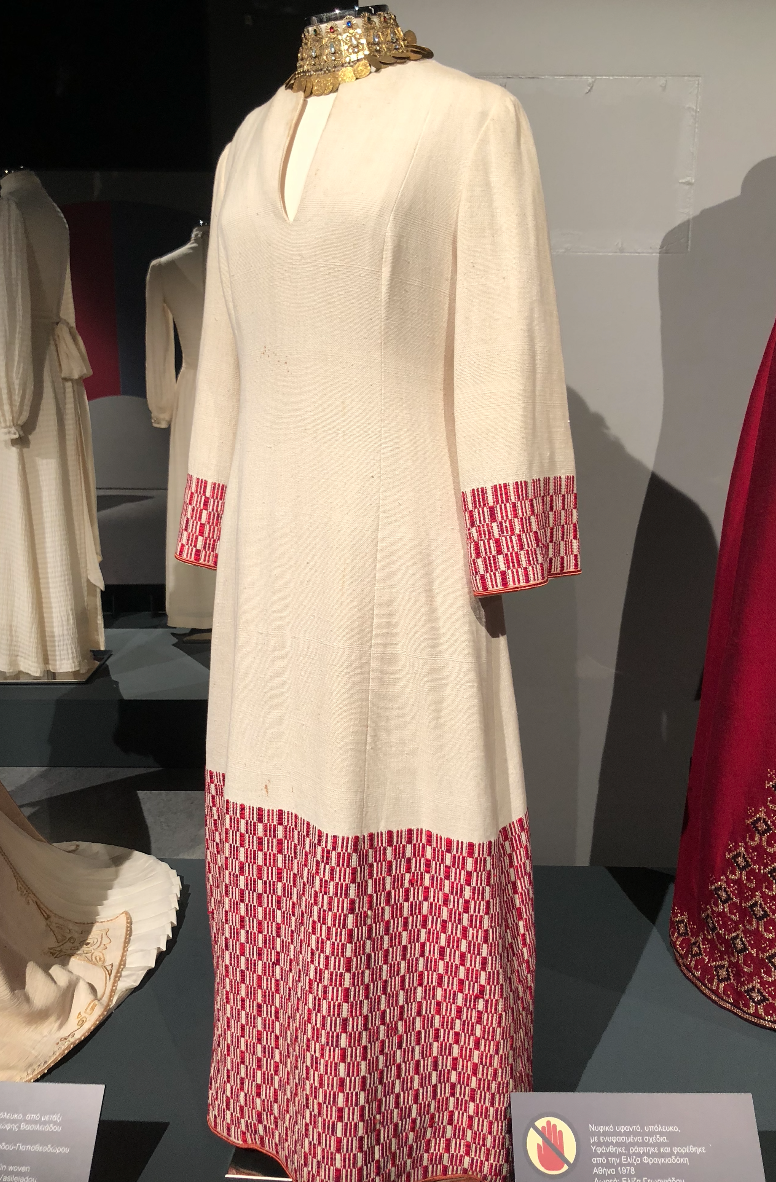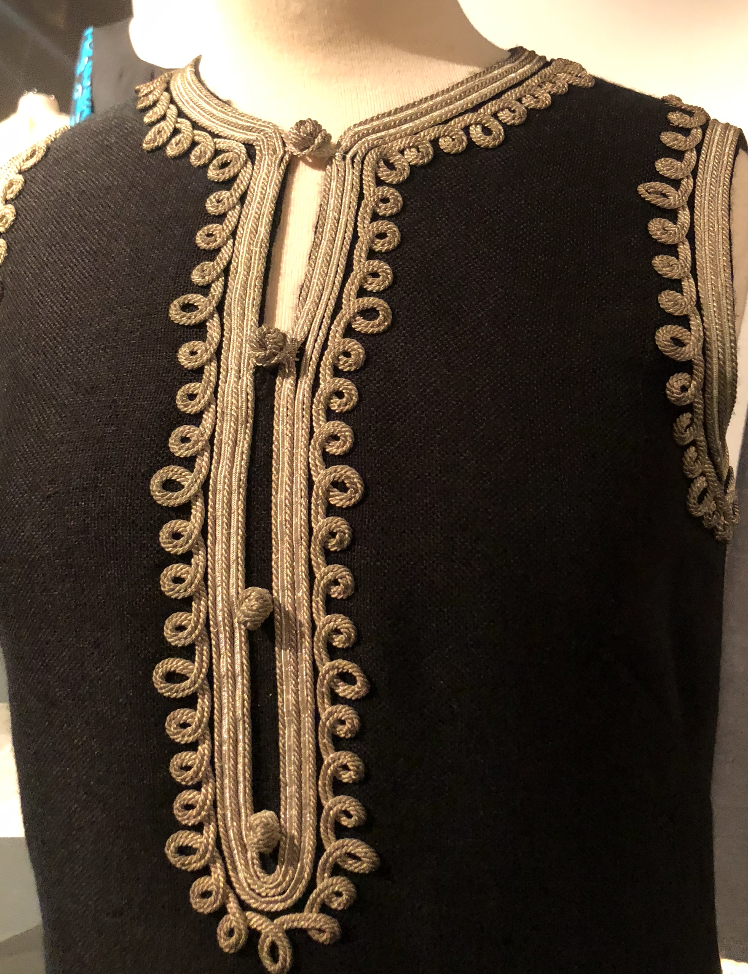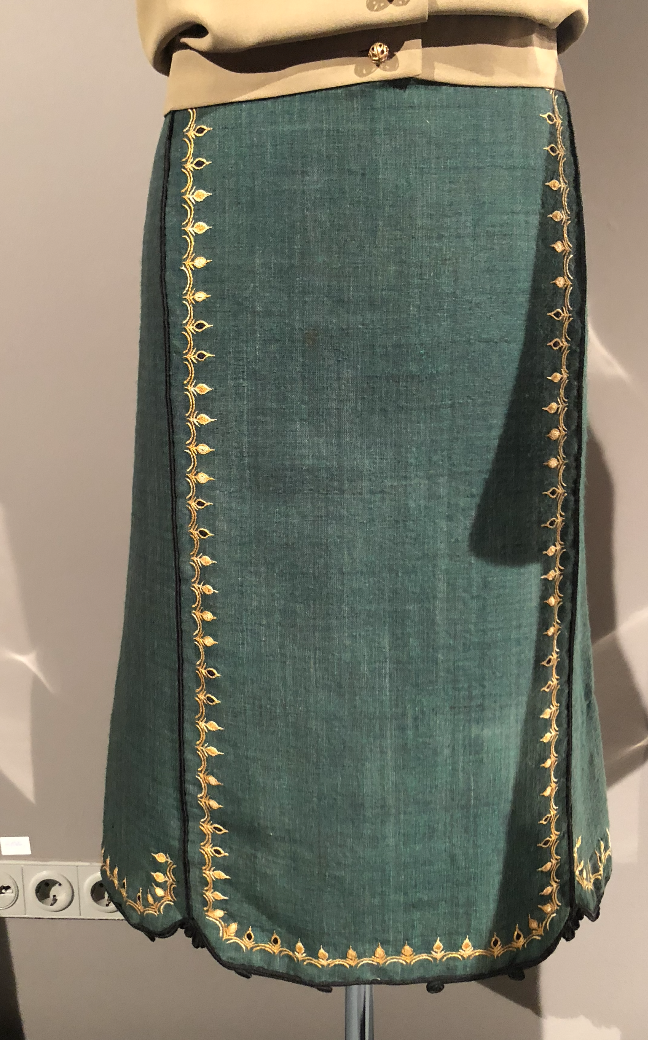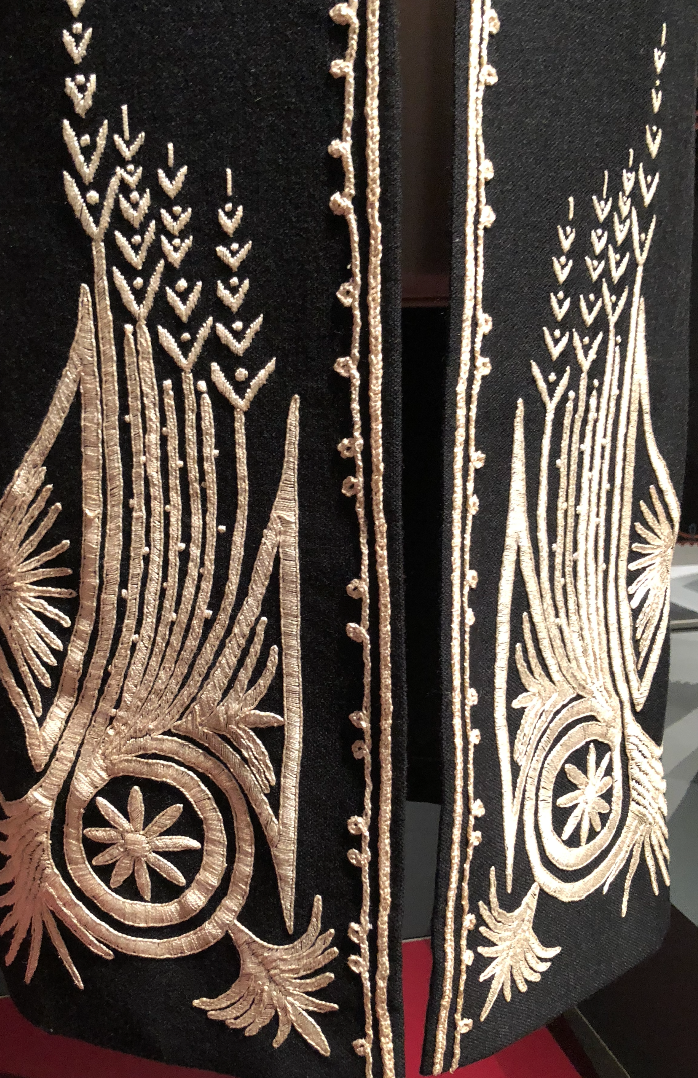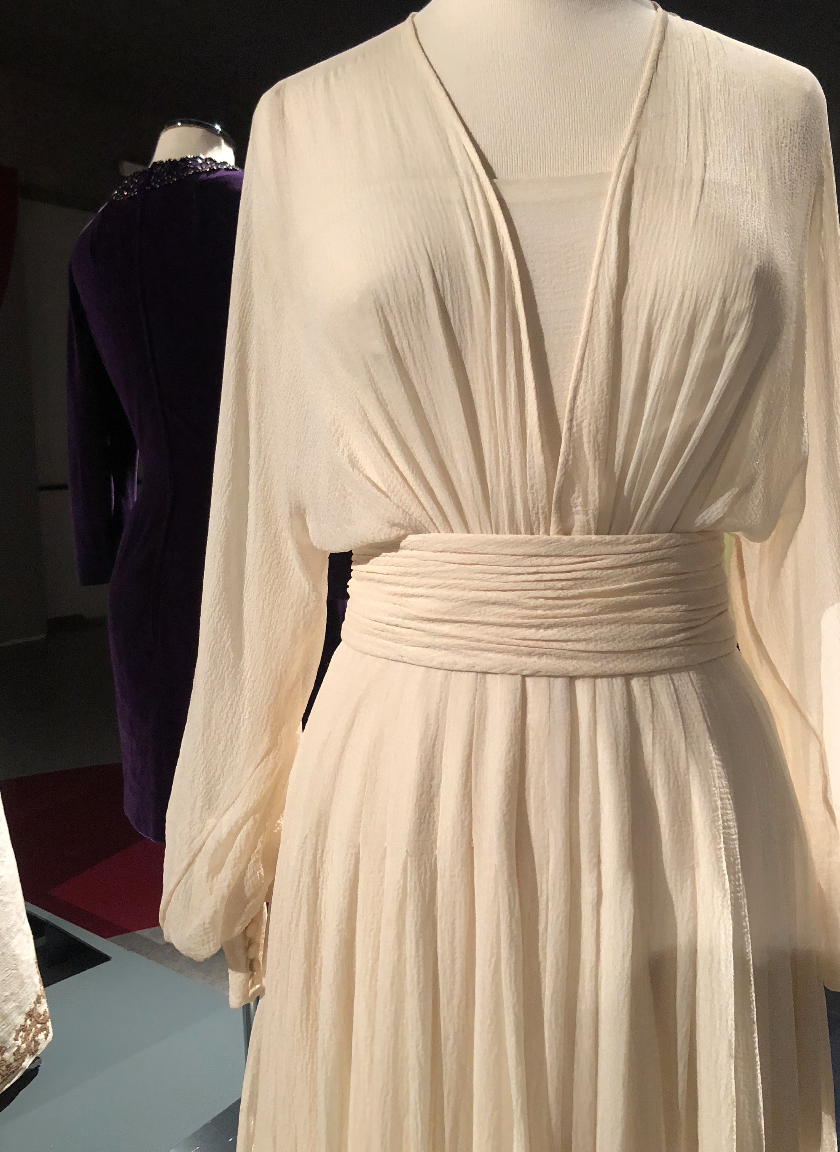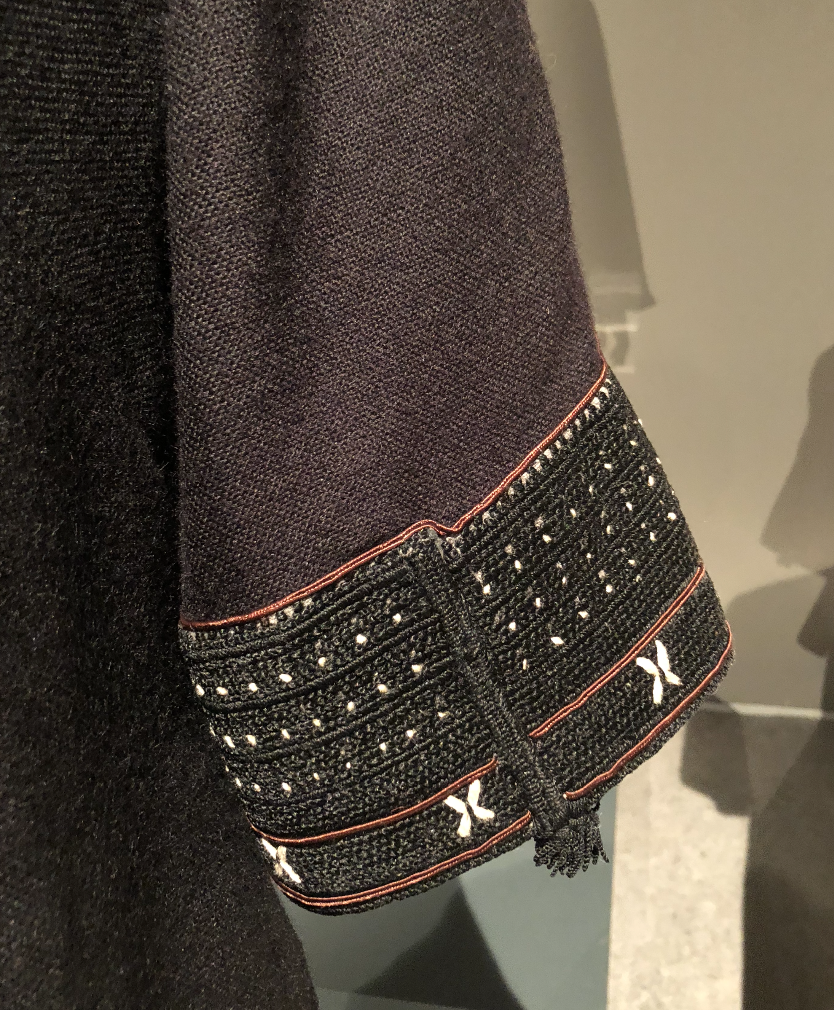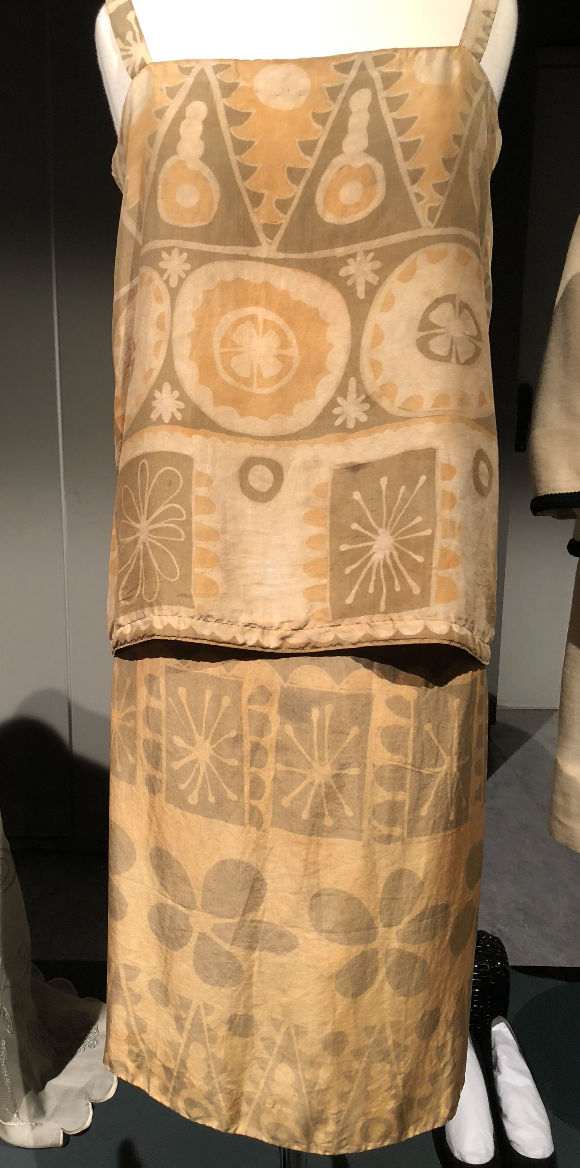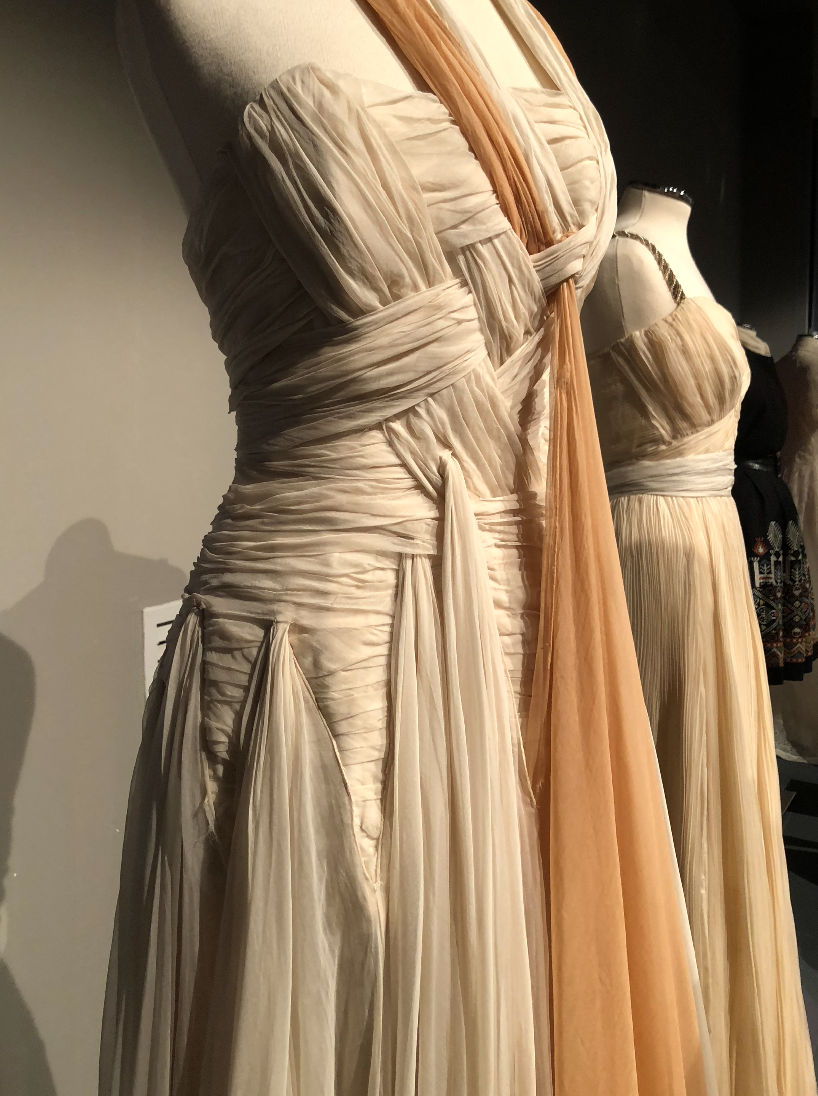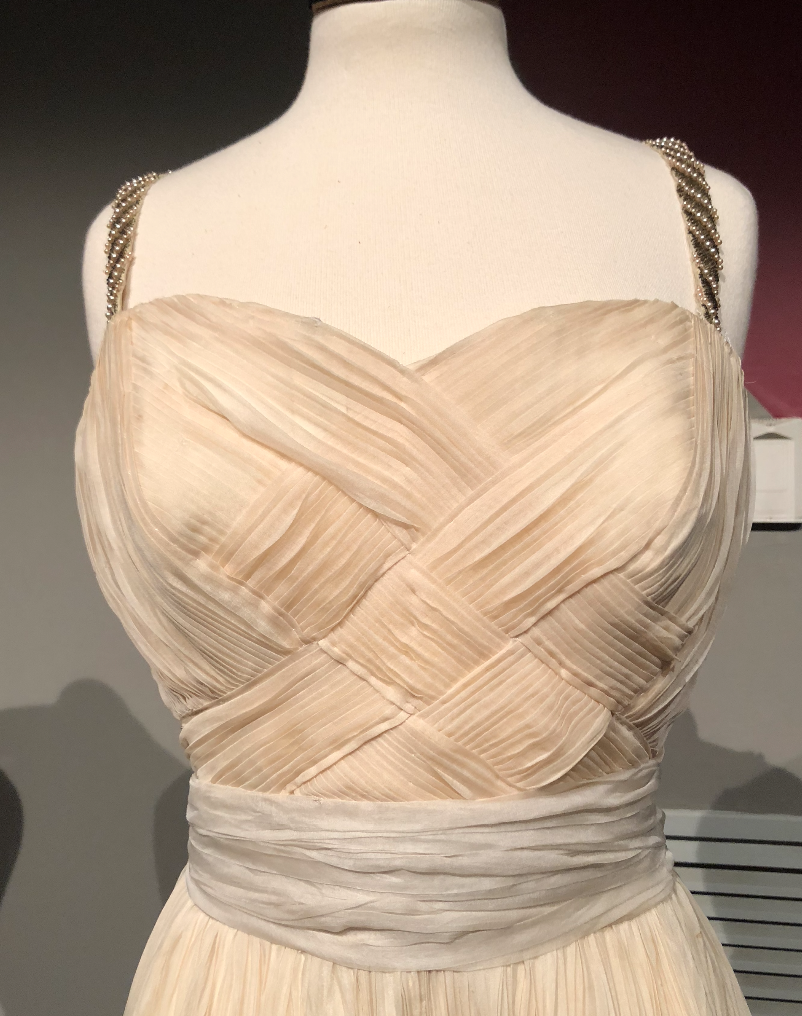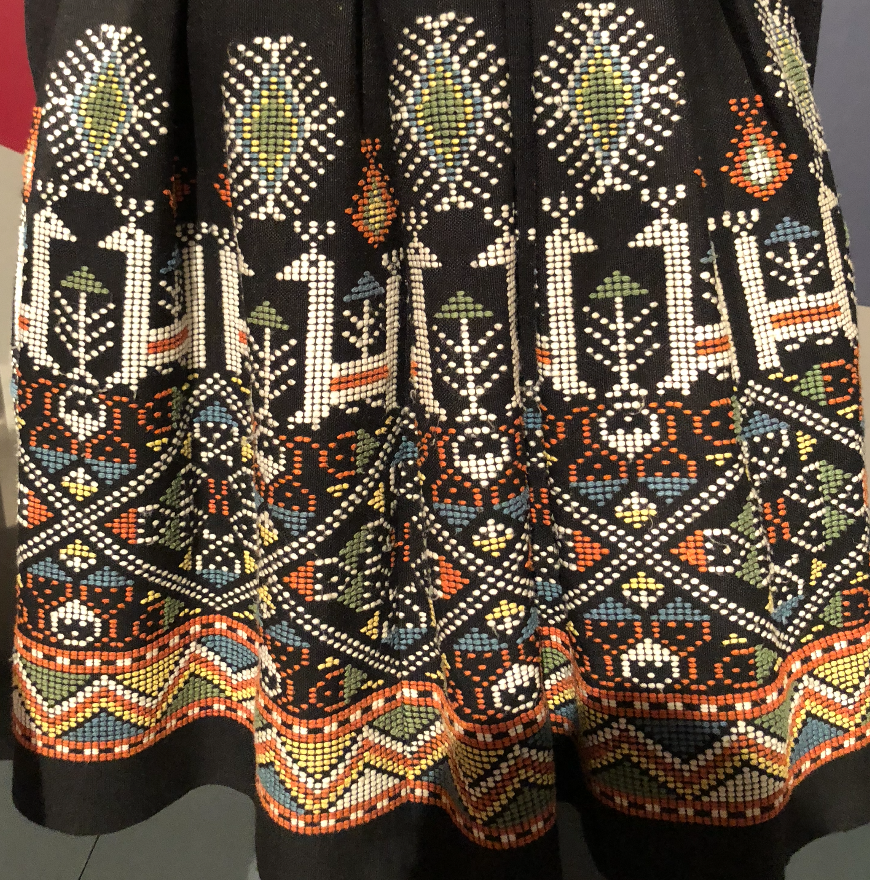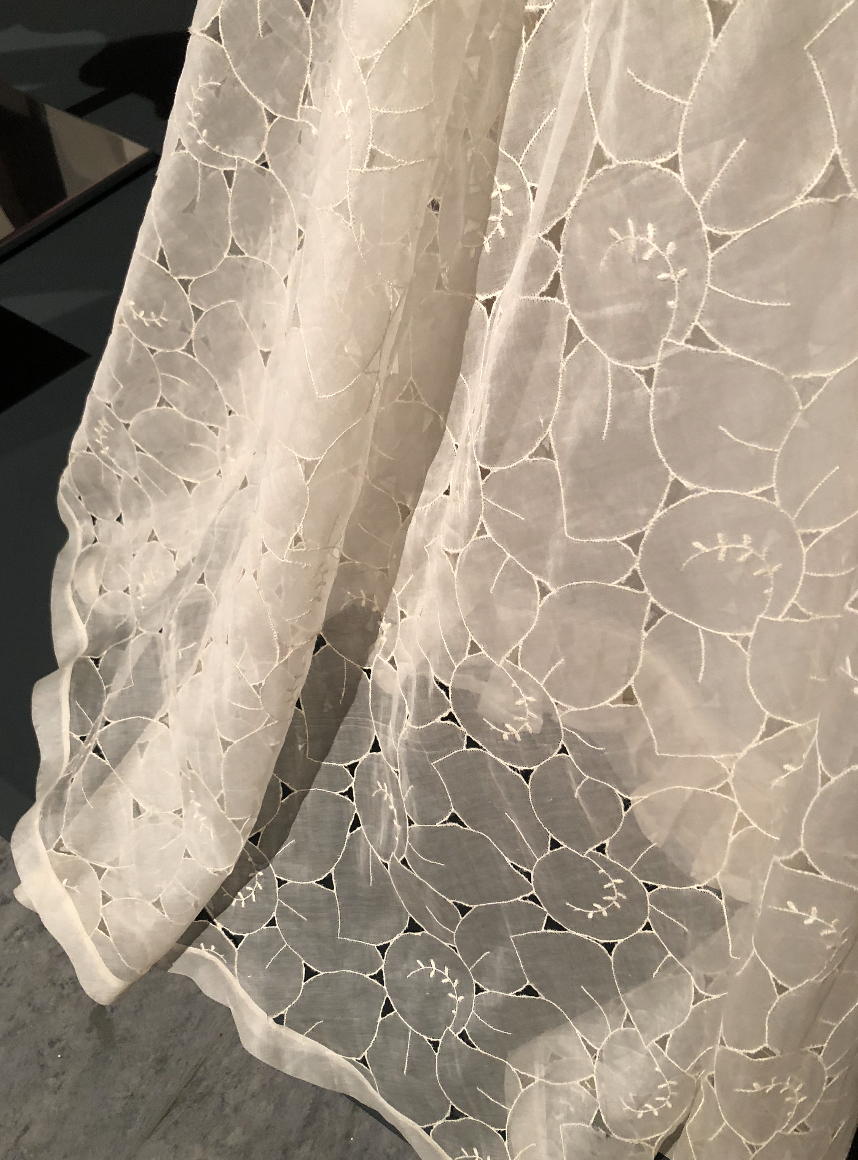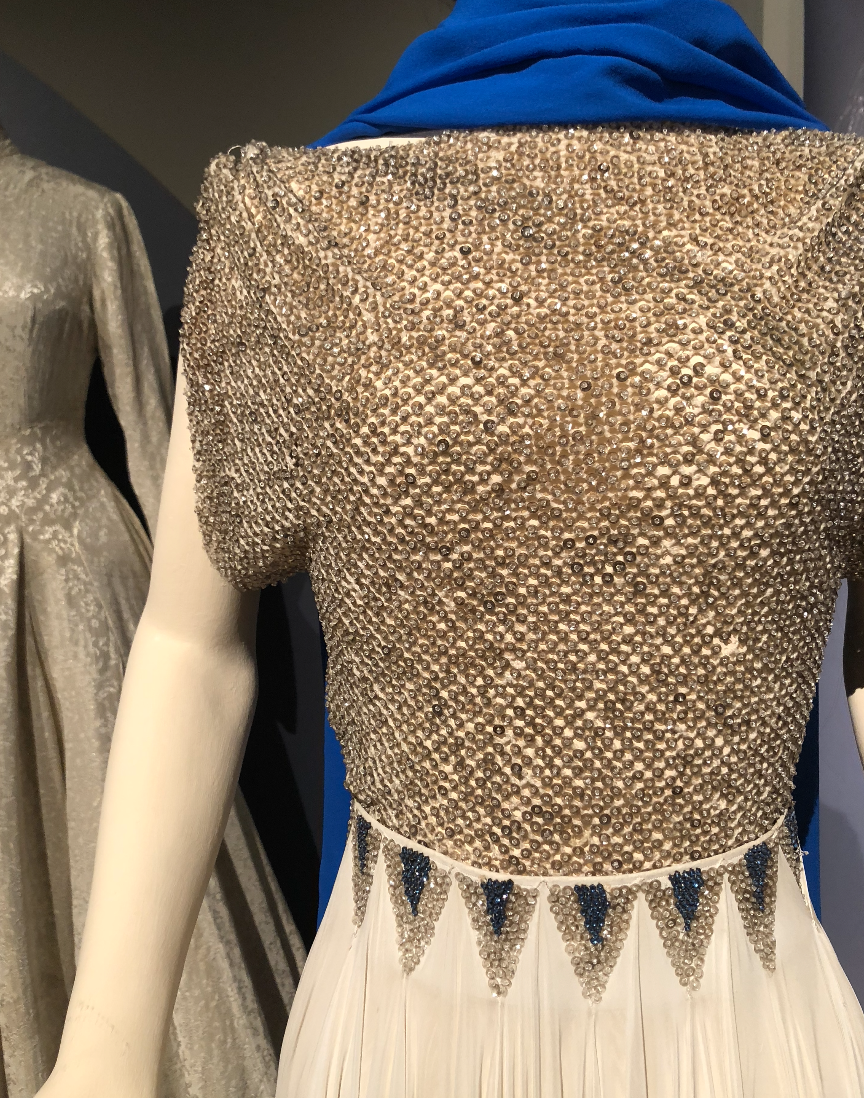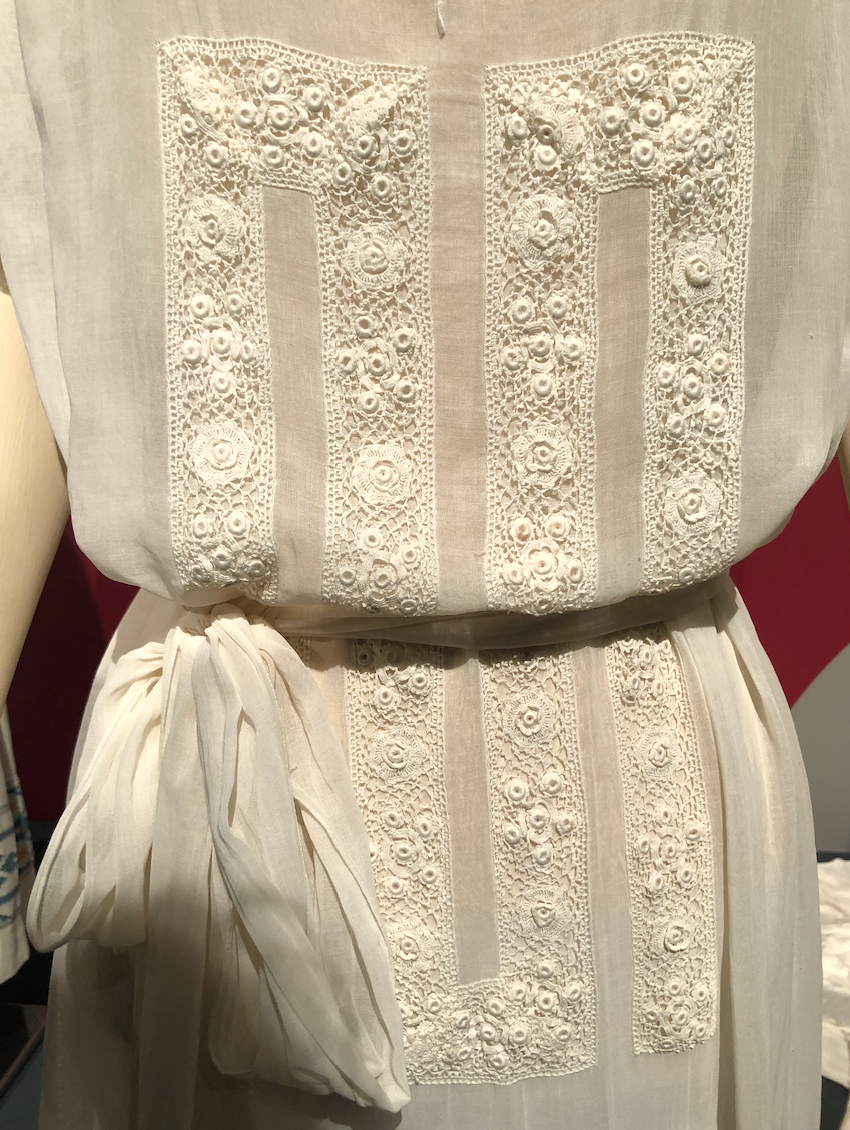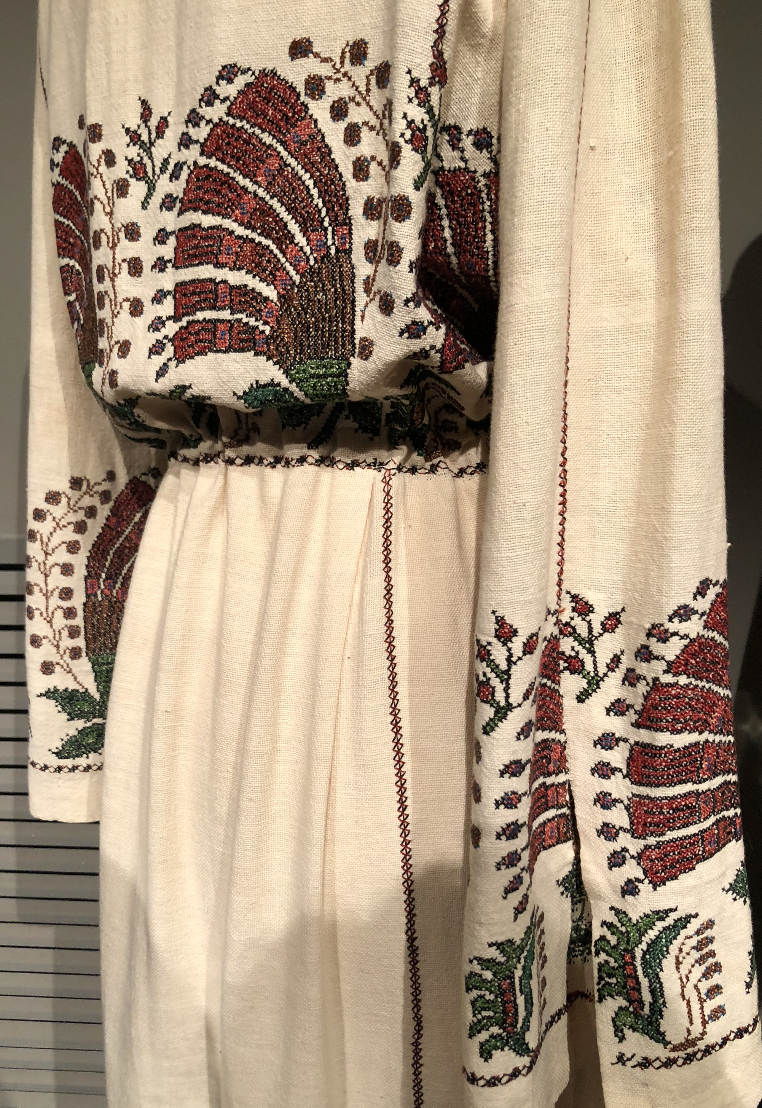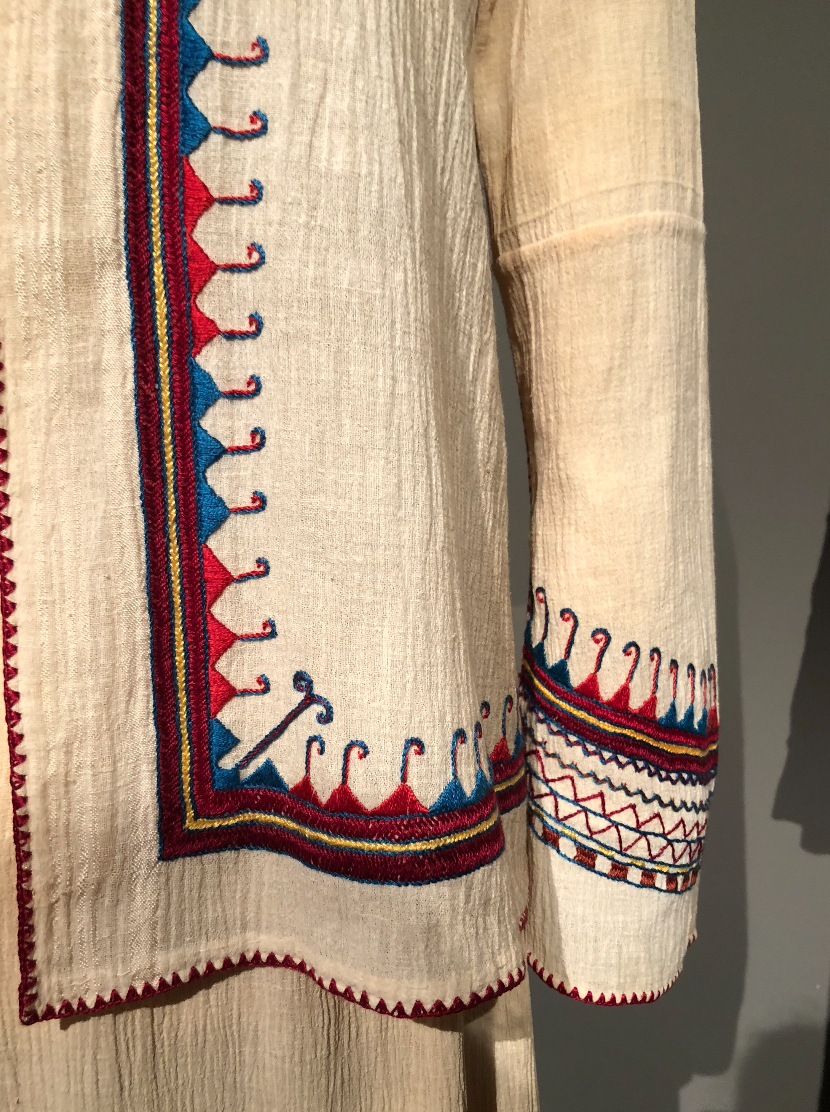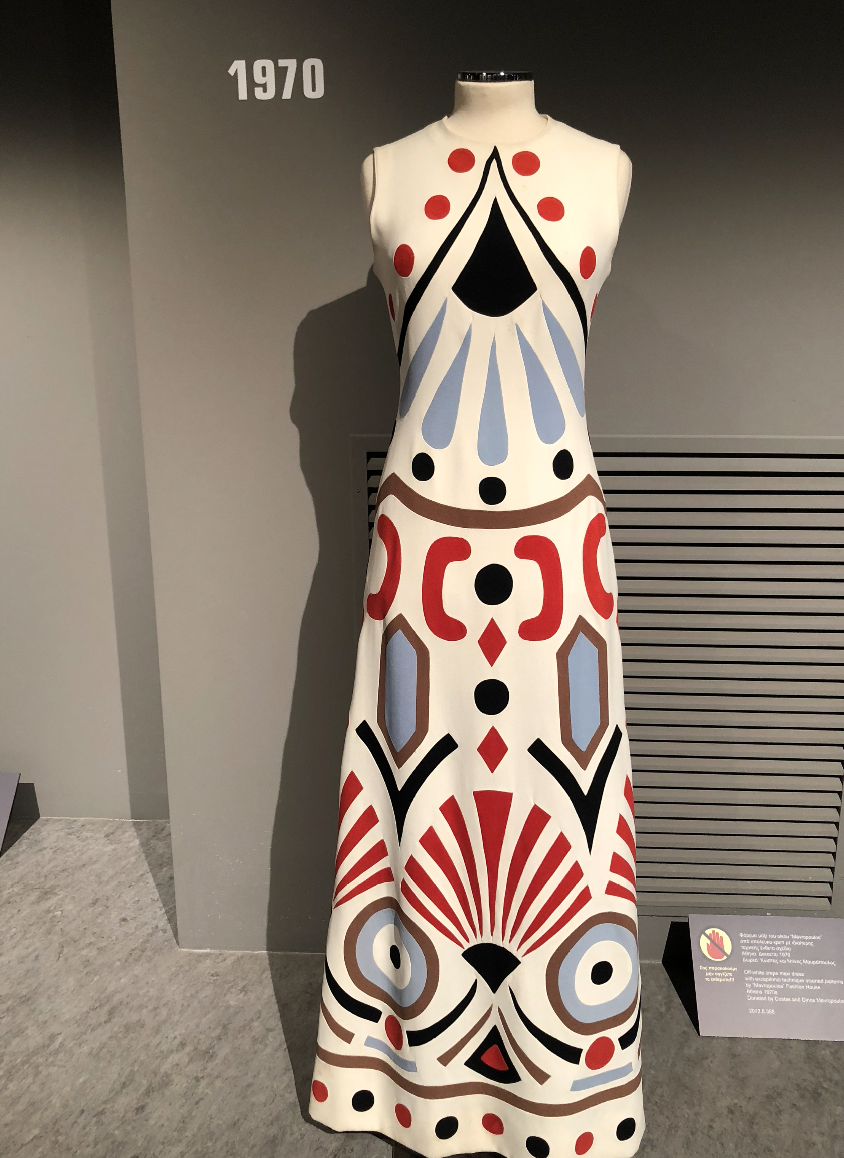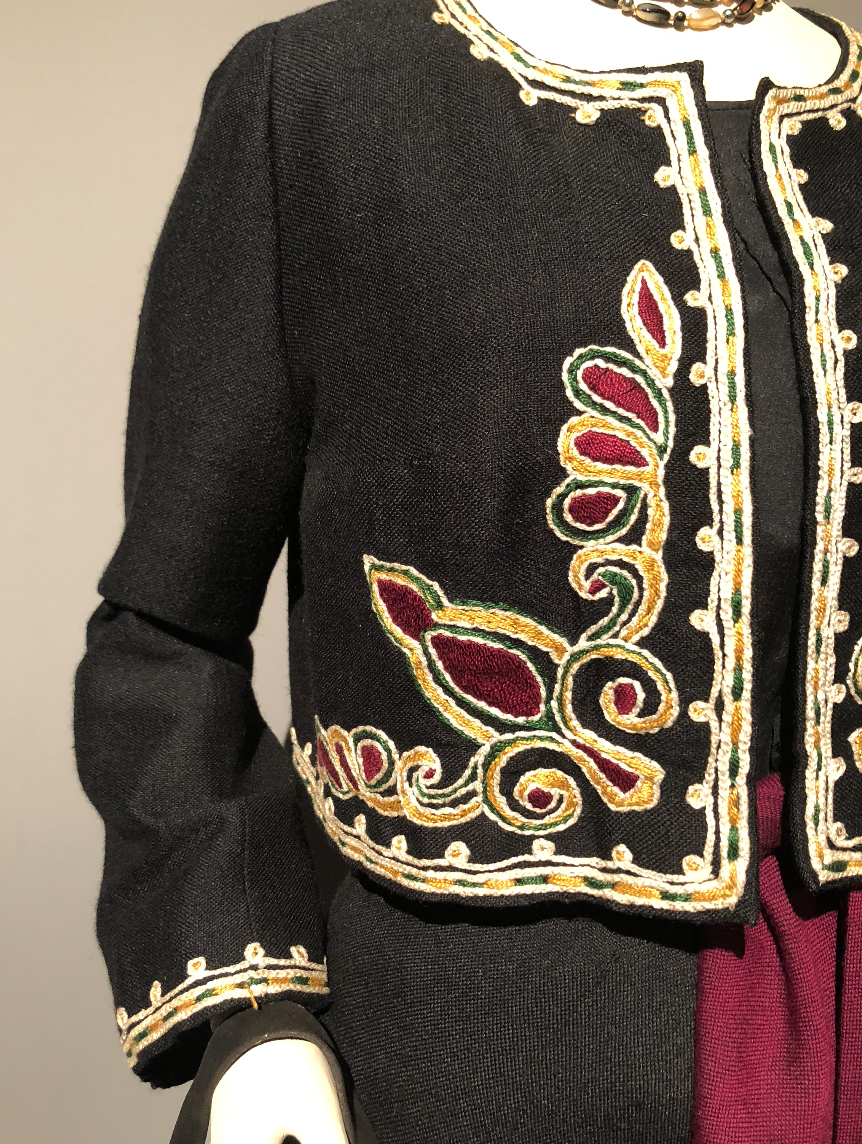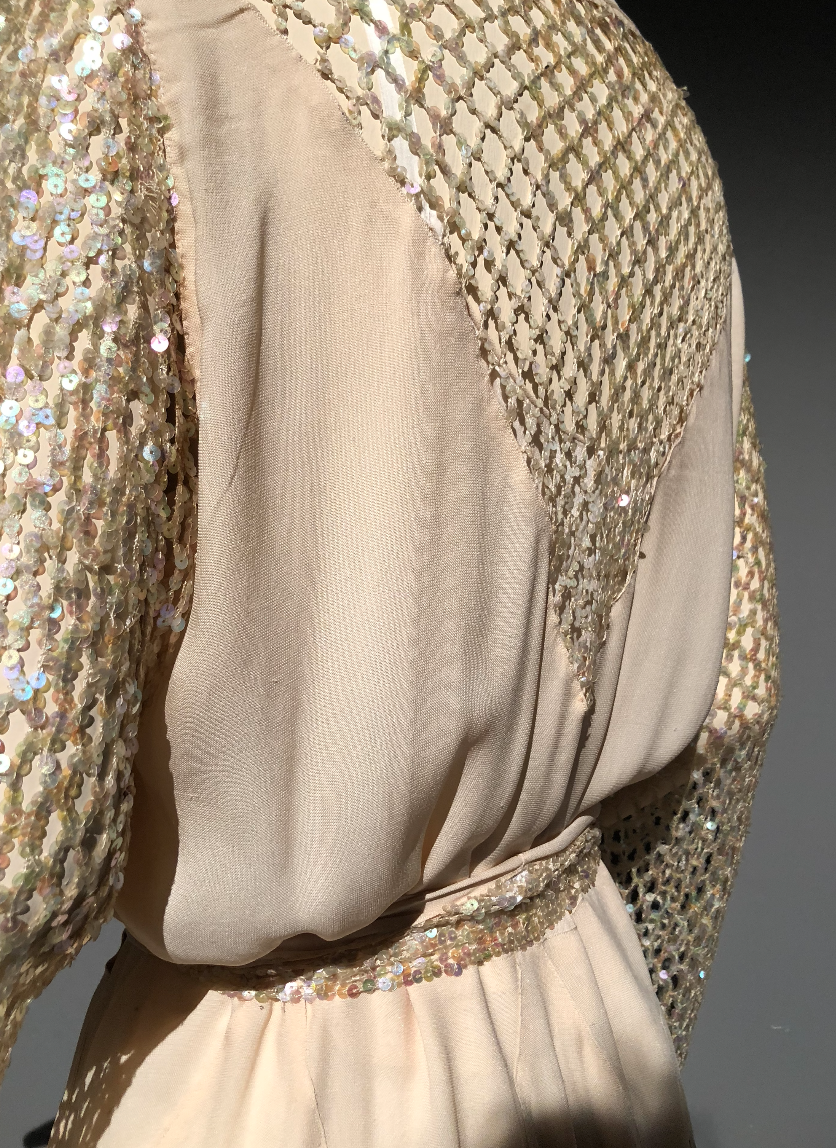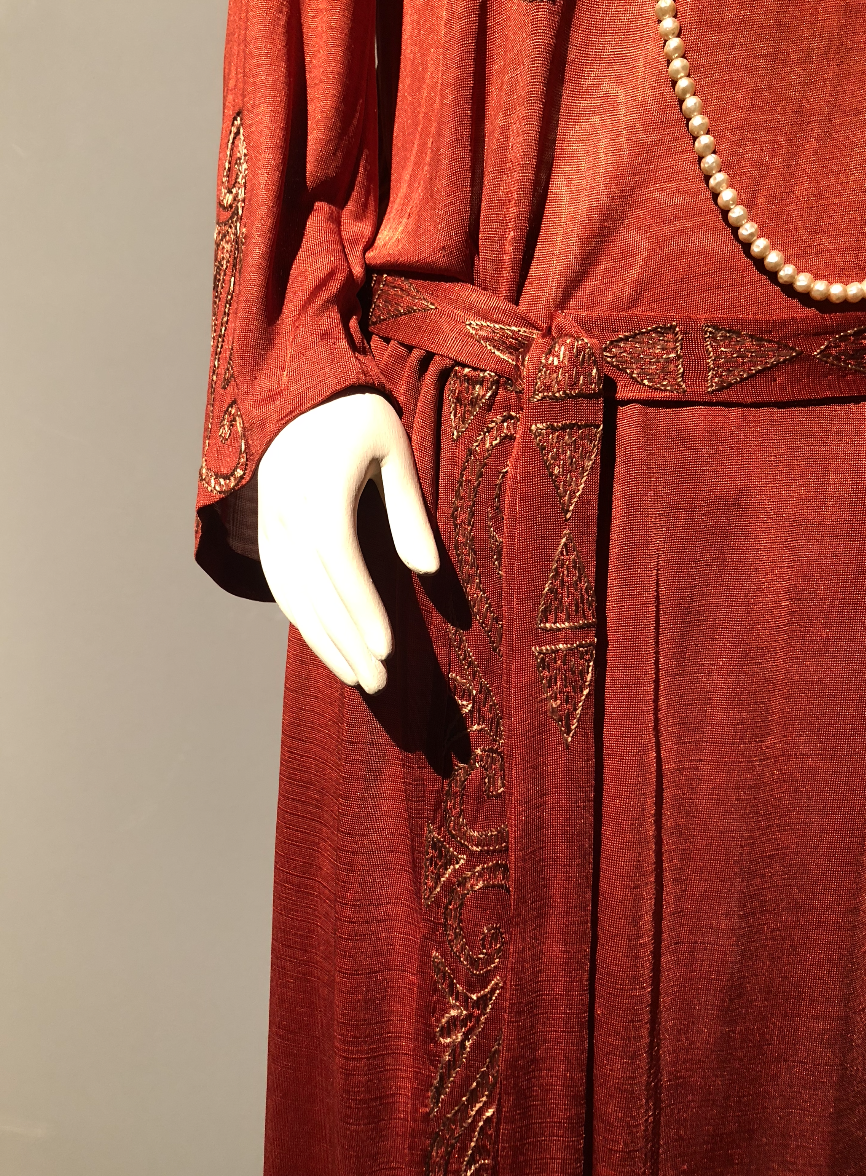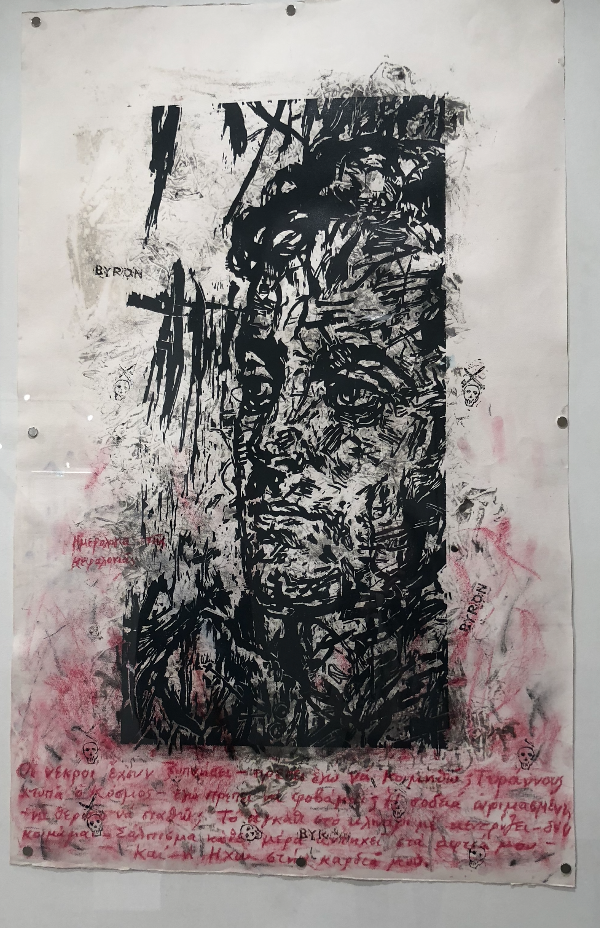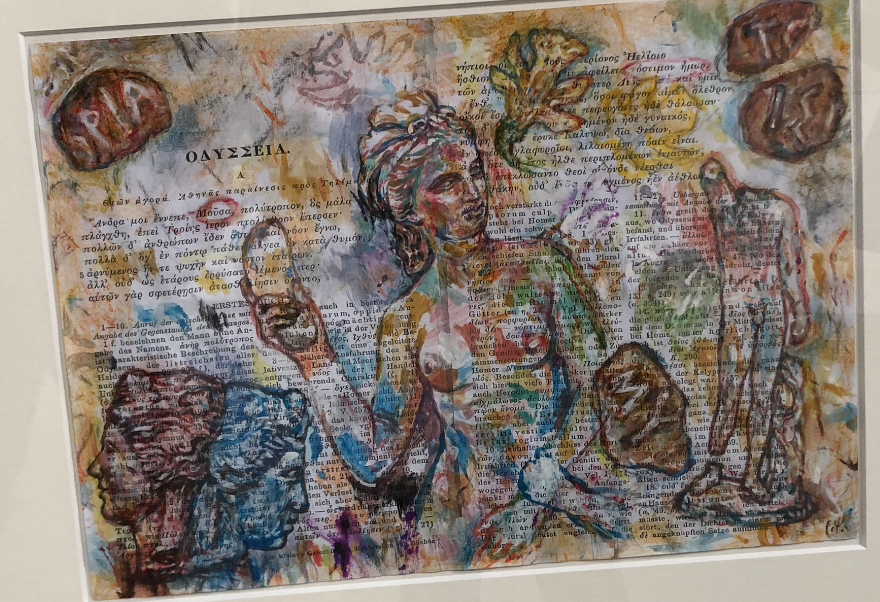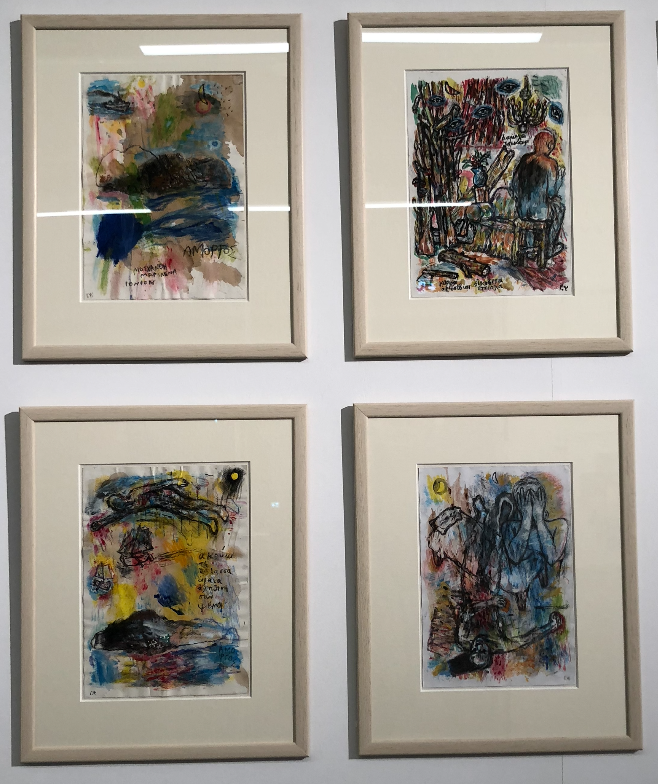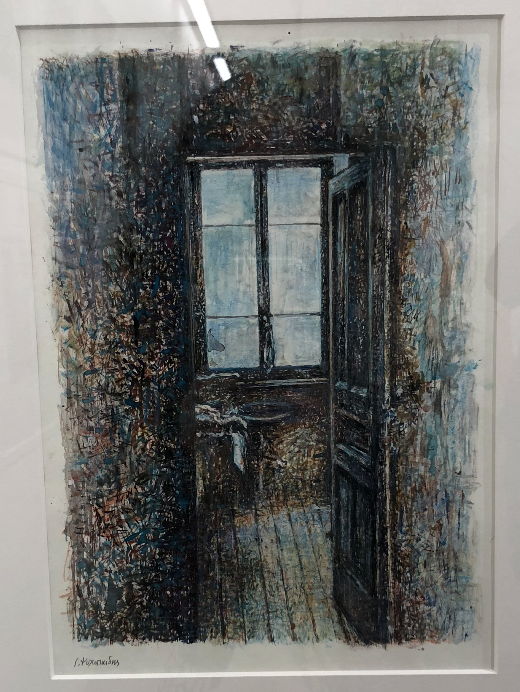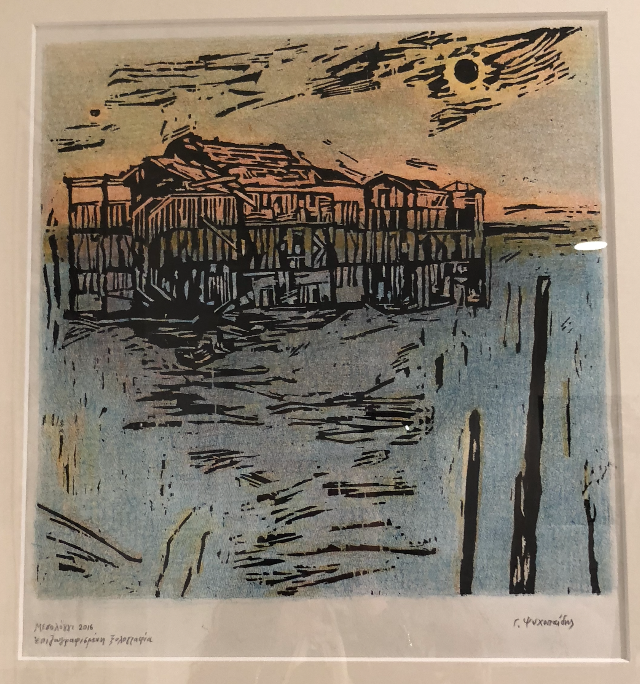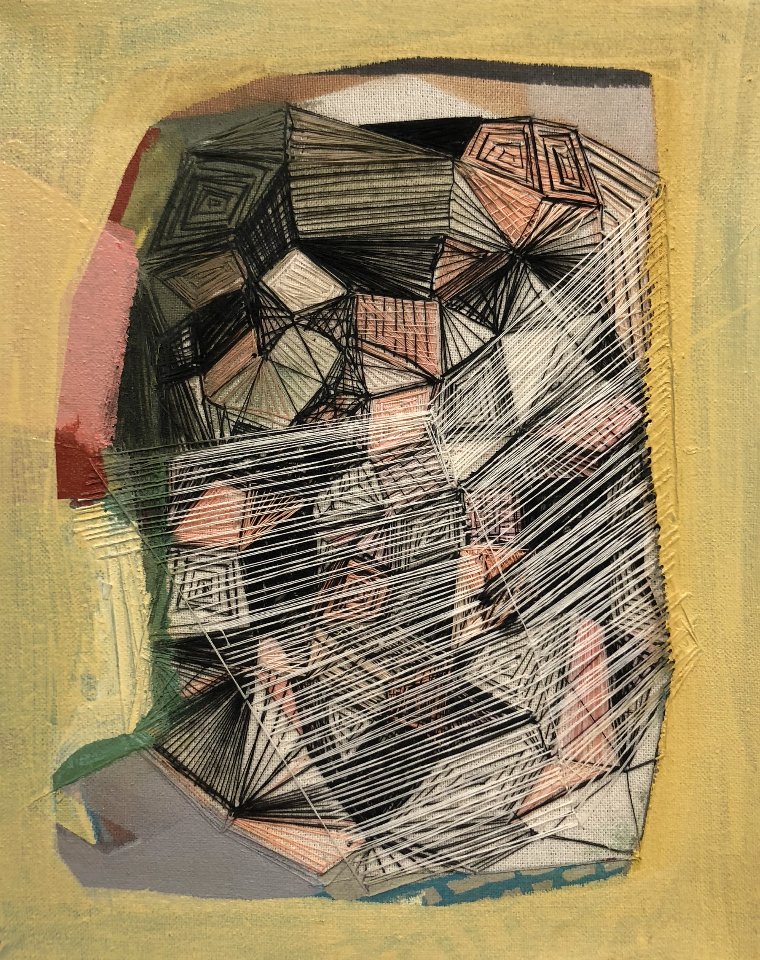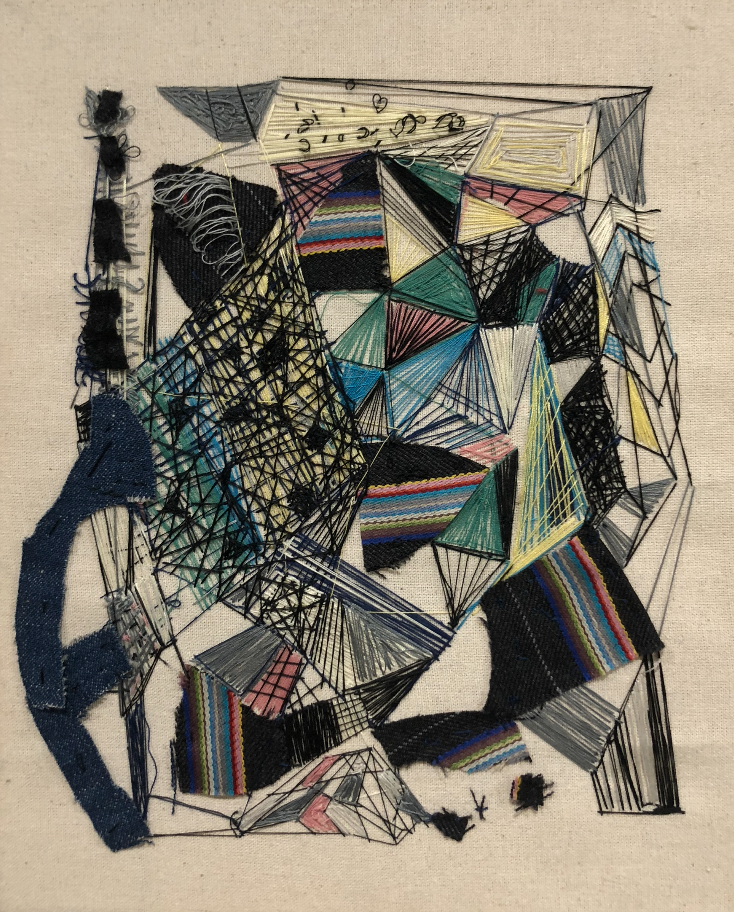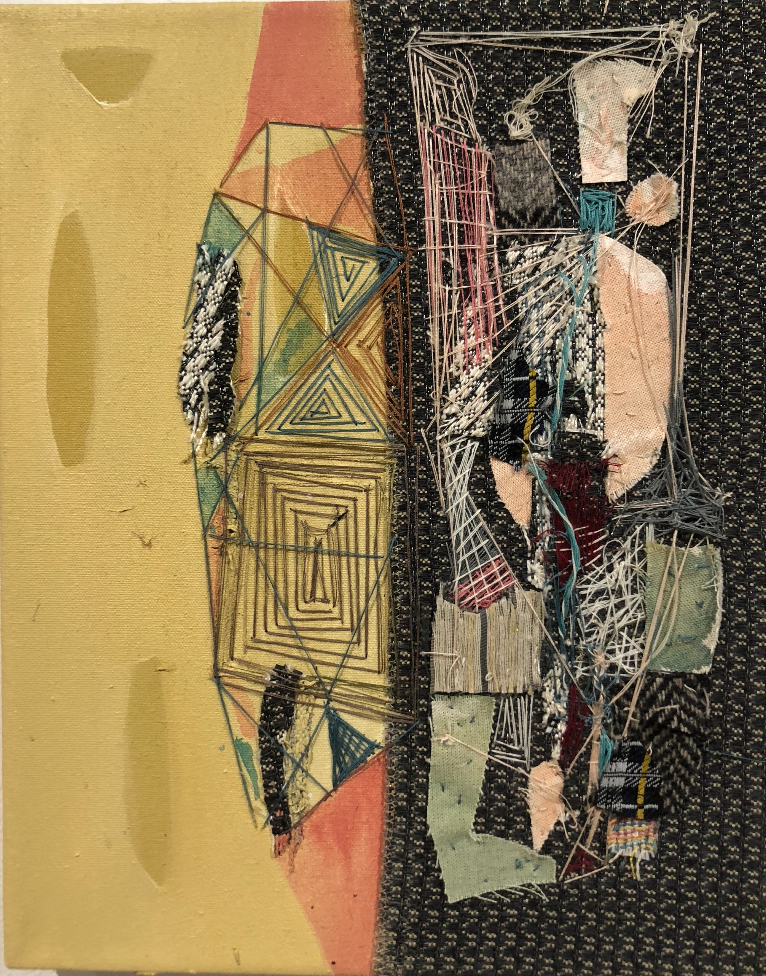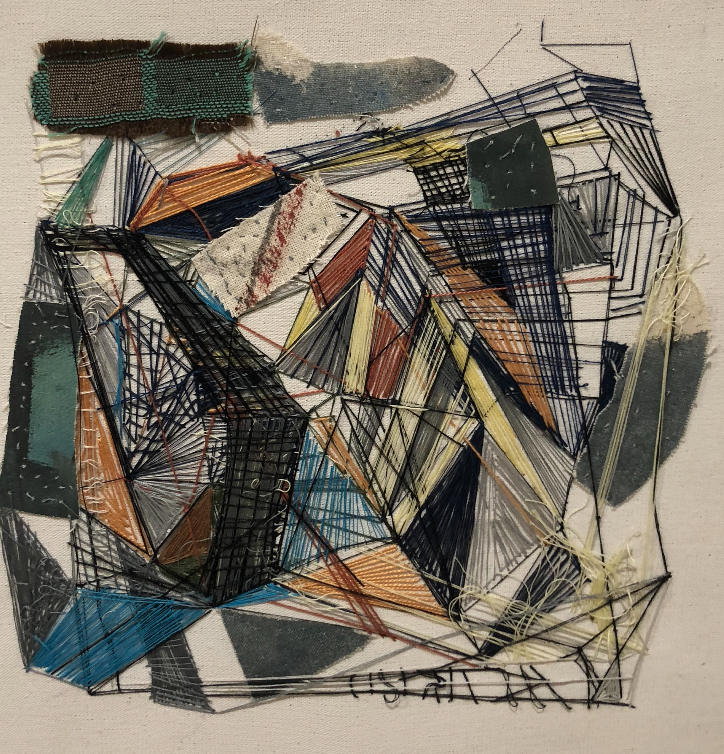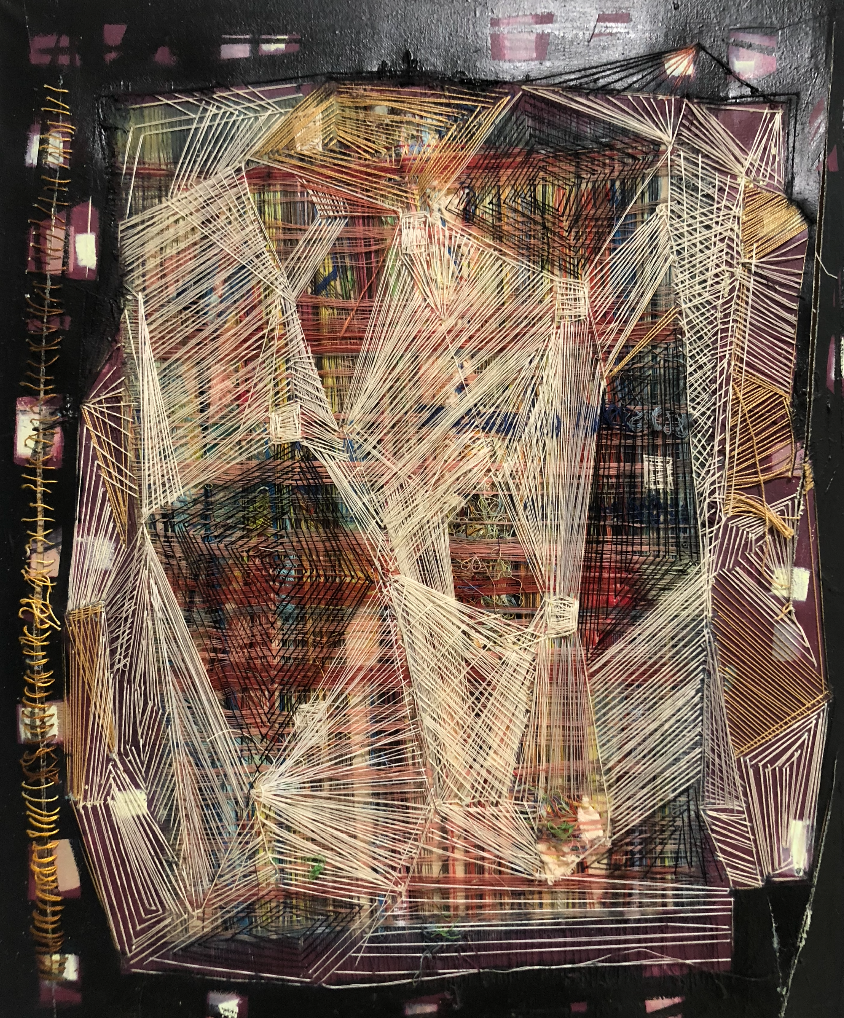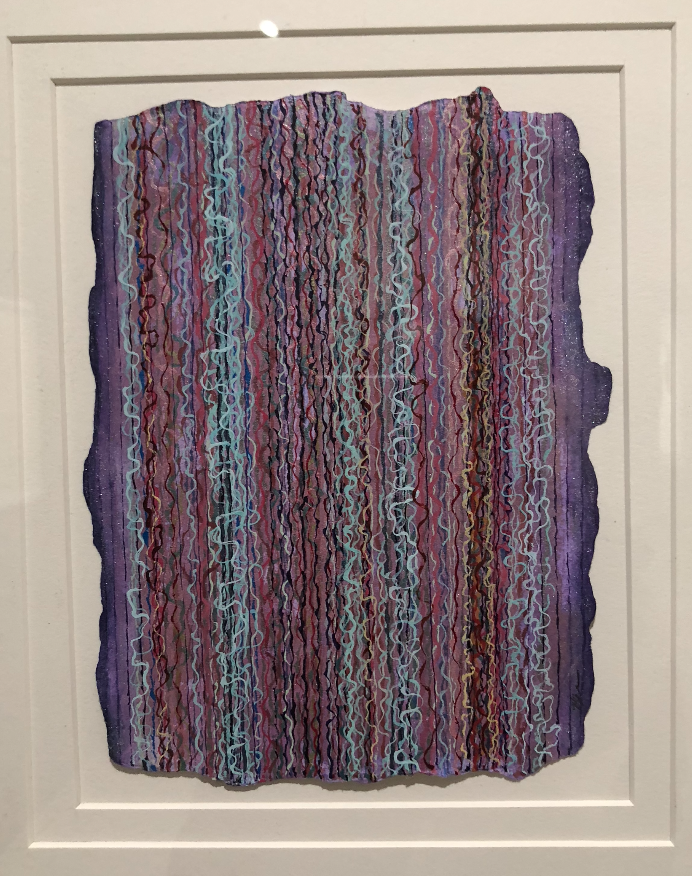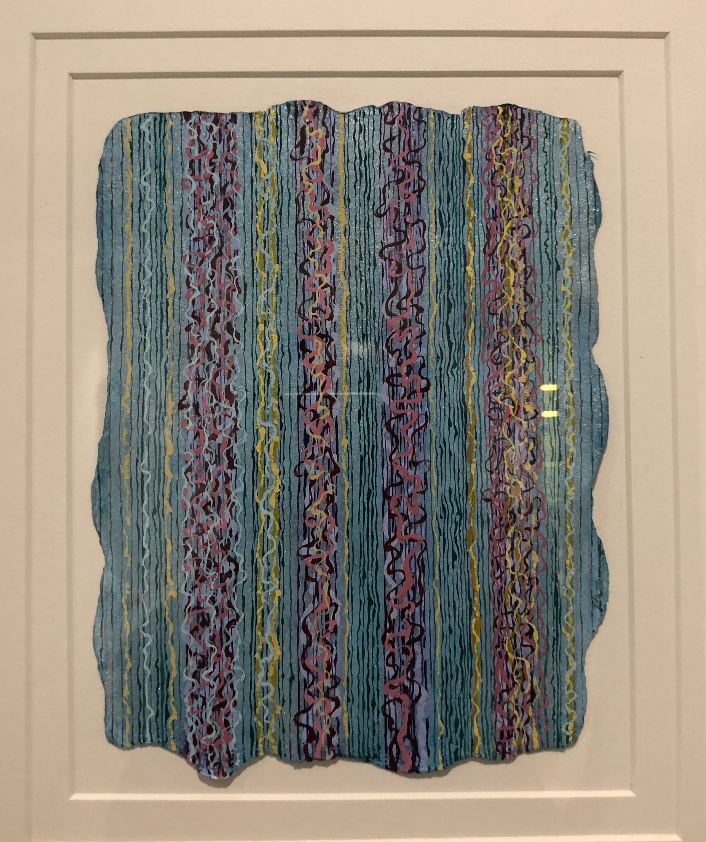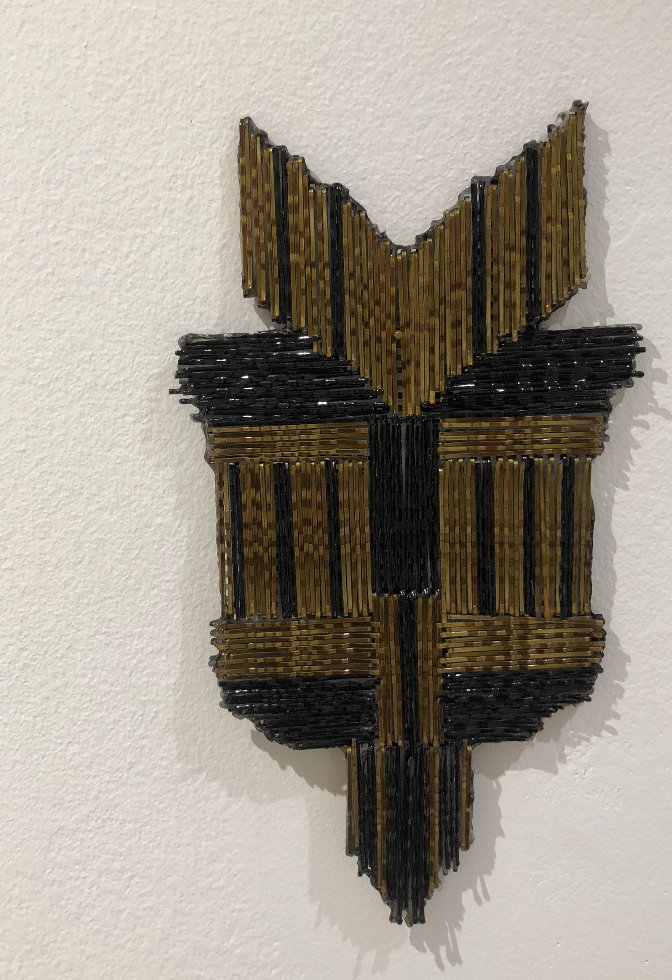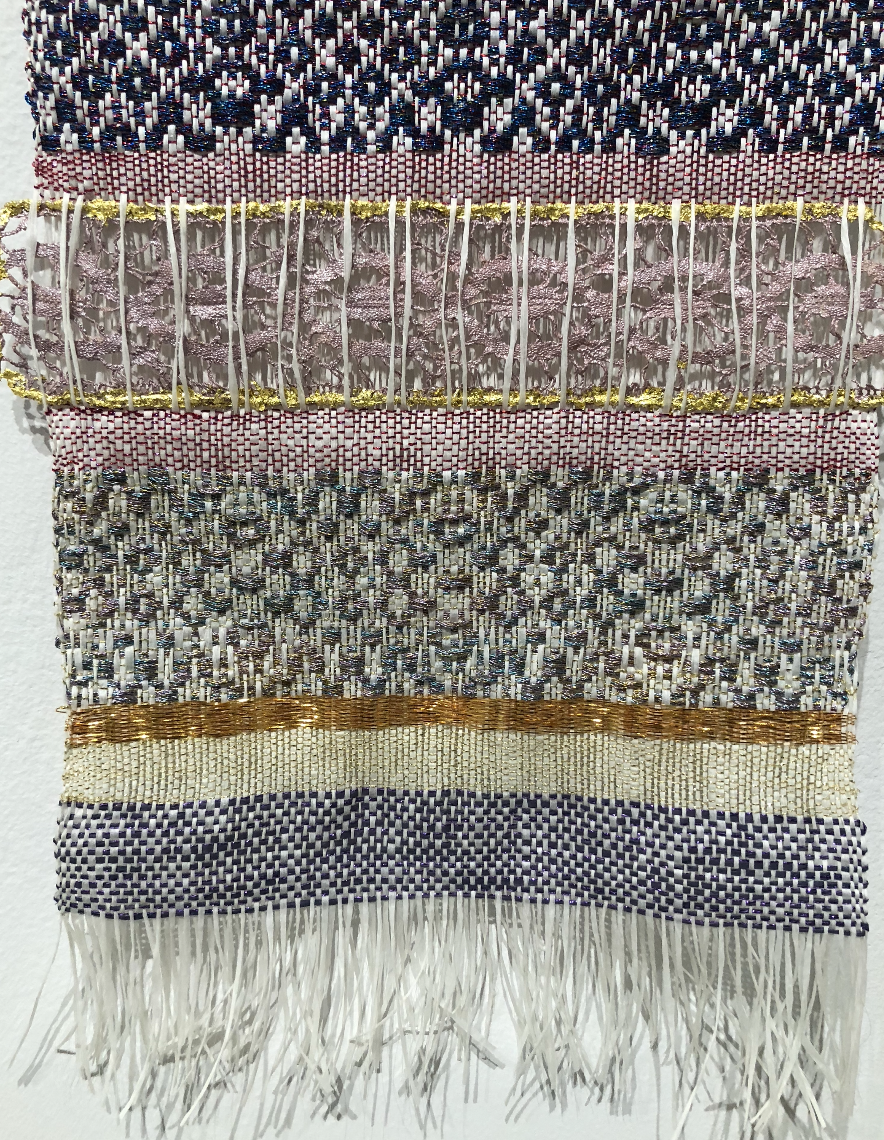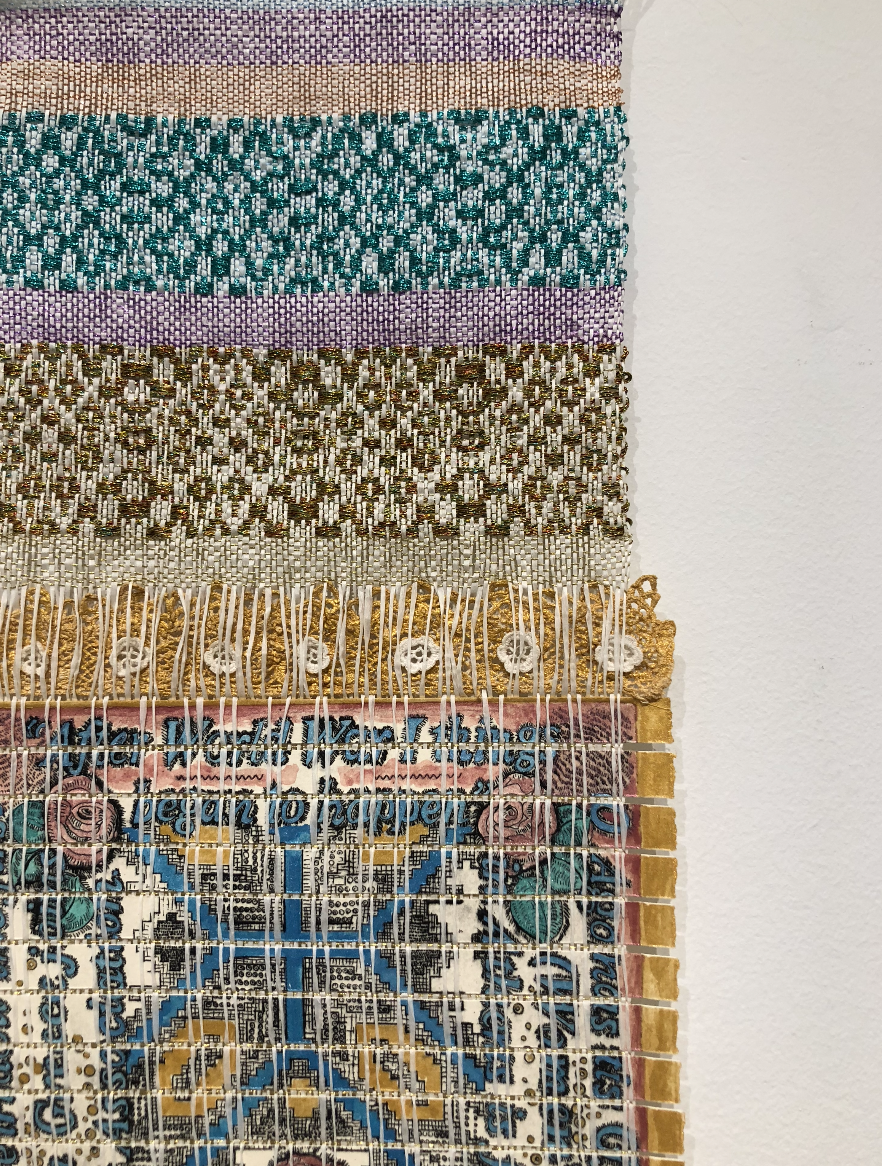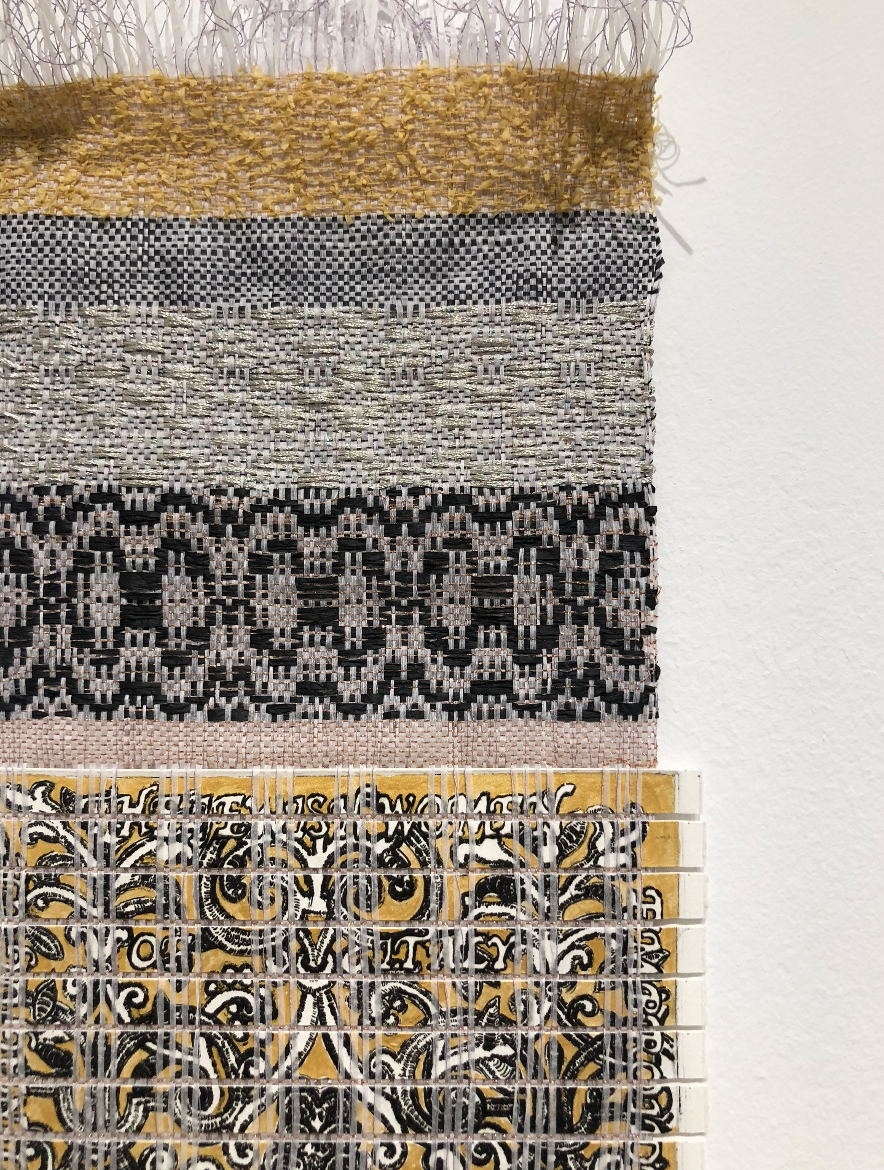Athens September-December 2019: Natural Dyeing Studio News & Exhibitions
The autumn season was focused a lot on commissions. I collaborated with the interior designers from ISV, to create table runners and pillows for a villa in Costa Navarino. You can see some photos of the final pieces as well as the process.
I also collaborated with MELI parties, to create some Christmas linen napkins for their shop in Kolonaki.
Finally, I was also commissioned to create a hand-woven indigo dyed table runner, that was hand-embroidered with silk thread.
I also started teaching workshops in my studio! An introduction to natural dyeing workshop, a bundle dyeing workshop and a batik workshop.
The studio is slowly becoming a nice place to work at, and even though its tiny - it’s perfect for me for now. I’ve started working outside on the days that the weather is nice.
I also started collaborating with a pattern cutter and seamstress, Lambrini.
Finally, I am continuing my lessons with Mrs Tina, learning more about 3D techniques the past few months.
I also had the opportunity to finally meet Giorgos Petsikopoulos, a fellow natural dyer who works with indigo and mud resist. I went to the studio he shares with Aboubakar Fofana in Athens, Greece.
I also decided to remind myself of screen-printing, which I did a lot during university. With my friend Ioli, we went to a screenprint workshop at Kypseli Print Studio and were taught by Eleanor. It was a really nice experience.
An exhibition I visited was the "WEAVINGS: Painting and tapestry in Greece from 1960 to the present" exhibition at one of the biggest museums in Athens, the Benaki Museum.
I was pleasantly surprised to hear that there was an exhibition all about textiles in Athens. I think the fact that the Tate Modern in London has done many retrospectives to textile designers the last few years (Anni Albers, Sonia Delaunay etc) has helped set a trend, showing us that it's not all about Design or Art, but showcasing Craft as well.
I am not going to lie, since moving back to Athens, whenever someone that doesn't know me (and isn't part of the art/design/craft world) asks me what I am doing and I start explaining to them what a textile designer is (that I have a loom, that I weave, that I forage and naturally dye) they look at me like I'm either an alien or just plain crazy. That's the main reason I was so happy that an exhibition like this was finally happening in Athens.
There are so many traditional Greek crafts and it's such a shame that the last few generations have completely lost interest in them. There are initiatives happening, and I can see that people are slowly becoming interested and want to learn more, however more exhibitions like this have to keep happening in all craft fields - ceramics, woodwork, metalwork, jewellery etc.
I don't think the exhibition should have been called "Weavings" since more than 95% of the woven pieces were tapestries. There were almost no floor loom pieces on display.
The exhibition showed the relationship between paintings and tapestry. Paintings by Greek artists were on display and next to them the respective tapestry and hand-tufted rugs produced over different periods of time.
There were some amazing pieces of work, one of my favourite Greek artists is Moralis and I loved seeing his paintings transformed into a textile piece. However, for me, the exhibition (once again) celebrated these artists. Ghikas, Moralis, Tsarouhis, Fasianos, Mytaras. Amazing Greek artists, that have made amazing pieces of work. But at the same time, they are known. I would like a textile exhibition that celebrates textile artists, not painters that we've seen their work 1000 times all over Greece.
It saddened me that the only information on the weavers who made these tapestries was that they happened upon the initiative of the Nees Morfes Gallery. That was it. No names of the technicians/weavers, nothing about how long it takes to create a tapestry like that. Nothing.
There was a documentary about them playing on repeat in a room, but still, for me these things should be clear, especially these days.
I think my favourite part of the exhibition was the last room, where you could see contemporary work by artists from 1980 to the present. Weaving, embroidery, mixed media, appliqué, weird materials - it was nice to see Greek contemporary artists that use textiles as their medium. My favourites: Maria Grigoriou's "Emergence I" & "Emergence II" pieces (hand-woven, naturally dyed using the ikat technique) and Ismini Samanidou's piece called "Drawing" (jacquard weaving, cotton warp, paper, linen, wool, metal threads weft).
After an exhibition about textiles, the next big surprise was that there was also an exhibition about Greek Fashion happening around the same time in Athens.
The exhibition was called "Greek Fashion: 100 inspirational and creative years". Let me start by saying that I was amazed by this exhibition. It could very easily be an exhibition in the V&A of London. The curation was perfect, the labelling and information was very informative. The exhibition took place in a very modern building called "Hellenic Cosmos". I hadn't been there before. It was a weird experience, no one was there, it kind of felt abandoned, so much space, yet it seemed like nothing was working. Once we entered we had no idea where to go or if it was even open. When we saw someone and asked they said we have to wait for five minutes for someone to come unlock the door of the exhibition. Ugh Greece.
It was a shame, because like I said the curation and the pieces were amazing. Even though I stayed in for more than an hour, taking notes and photos, sketching etc, no one else came in. I don't think it was really advertised the way it should have been, and it wasn't in one of those big museums or galleries that everyone knows, so I think it kind of got lost, which is a shame.
While I was there this second time, I visited the other two silk museums of Soufli.
The first one was the Gnafala Folk Art Museum. It contains the private collection of the Bourouliti family and exhibits the everyday life in Soufli. Gnafala (Γνάφαλα) in Greek is the first silk thread that is produced by the silkworm.
The museum opened in 1998. The collection is divided into sections: the household, the woman, the children, the man, the couple, the silk, agriculture items, religious items, music & celebrations. Some of the clothes in this collection are masterpieces, beautiful embroidery, appliqué, weaving and colour combinations.
"Greek fashion, which started out with tentative steps in the first decades of the 20th century and is not well established, has followed a rising path." - Nikos Saridakis, Costume and Stage Designer, Curator of the Exhibition
The exhibition presents the numerous ways of inspiration and the unique results by each designer and personal style. Around 150 clothes are showcased. The influence of the past is put to form in a modern outlook and creation, whether that is from a famous designer of the period, or a dressmaker following trends.
It was interesting to see how some of these pieces were shaped according to the trends that prevailed in Europe at the time, while others are more oriented towards the historical era that inspired them. I loved seeing the different fabrics, threads, weaving methods, embroidery styles, etc. Textile crafts are celebrated in this exhibition. Craftsmanship goes hand in hand with Fashion in this exhibition.
I really enjoyed seeing how Greek Fashion has evolved, it was really helpful that the exhibition was displayed in a chronological order and you could clearly see how from one decade to the next, trends, materials, pattern forms all changed.
One of my favourite pieces was a off-white wool hand-woven wedding dress. It was hand-woven, hand-sewn, hand-embroidered and worn by Eliza Fragiadaki at her wedding. I loved how she made everything from start to finish, and how she wore it on her special day, and I loved that that was shown to us, like a story, in the exhibition.
The next exhibition I visited was at the Stavros Niarchos Foundation Cultural Centre. A small exhibition on Jannis Psychopedis work called "Poetical Works: Painting meets Poetry".
Psychopedis was one of my favourite artists when I was in high school. I loved his bright colours and how there was also juxtaposing colours next to each other. Psychopedis studied printmaking in Athens and then Painting in Munich. The exhibition included work of mixed techniques and media, as well as large series of drawings, sketches, watercolours, oil paintings portraying poets. Even though I used to like his bold paintings a few years ago, seeing his work again in this exhibition, I found myself admiring his prints. Lino-prints, wood-cuts etc, less information, less colours. For some reason, these stayed with me.
It was really interesting to see the visual conversation with Homer and his Odyssey, Elitis, Ritsos, Dimoula, Byron, Cavafy, Karyotaki and more. Psychipedis definitely had a deep connection and relationship with poetry. I really enjoyed his exhibition.
Finally, last exhibition for this journal post was the amazing exhibition called "Pinned, Stitched and Glitzed: Challenging the Gender Stereotype". It took place at a gallery I hadn't visited before, called the Art Appel Gallery.
The exhibition was a group exhibition, there were four Greek artists, three American artists and one Korean artist, that all live in New York.
After talking to the curator as well as reading about the exhibition I understood that the point of the exhibition was indeed to challenge gender stereotypes. Most of the work displayed consisted of very delicate hand-sewn, hand-crafted, hand-woven or embroidered pieces. The artists wanted to challenge traditional gender roles, as well as all prejudice about what is considered a manly or a feminine technique. I really loved all the pieces and I think its worth it to research the work of these contemporary artists further. I'm going to put their names down for you:
Eozen Agopian, Renee Magnanti, Nicholas Moore, Ran Hwang, Maria Karametou, Yiannis Christakos, Konstantinos Stamatiou, Artemis Alcalay, Bill Pangburn.
If you hear of any exciting exhibitions, let us know!
xx
Christiana
